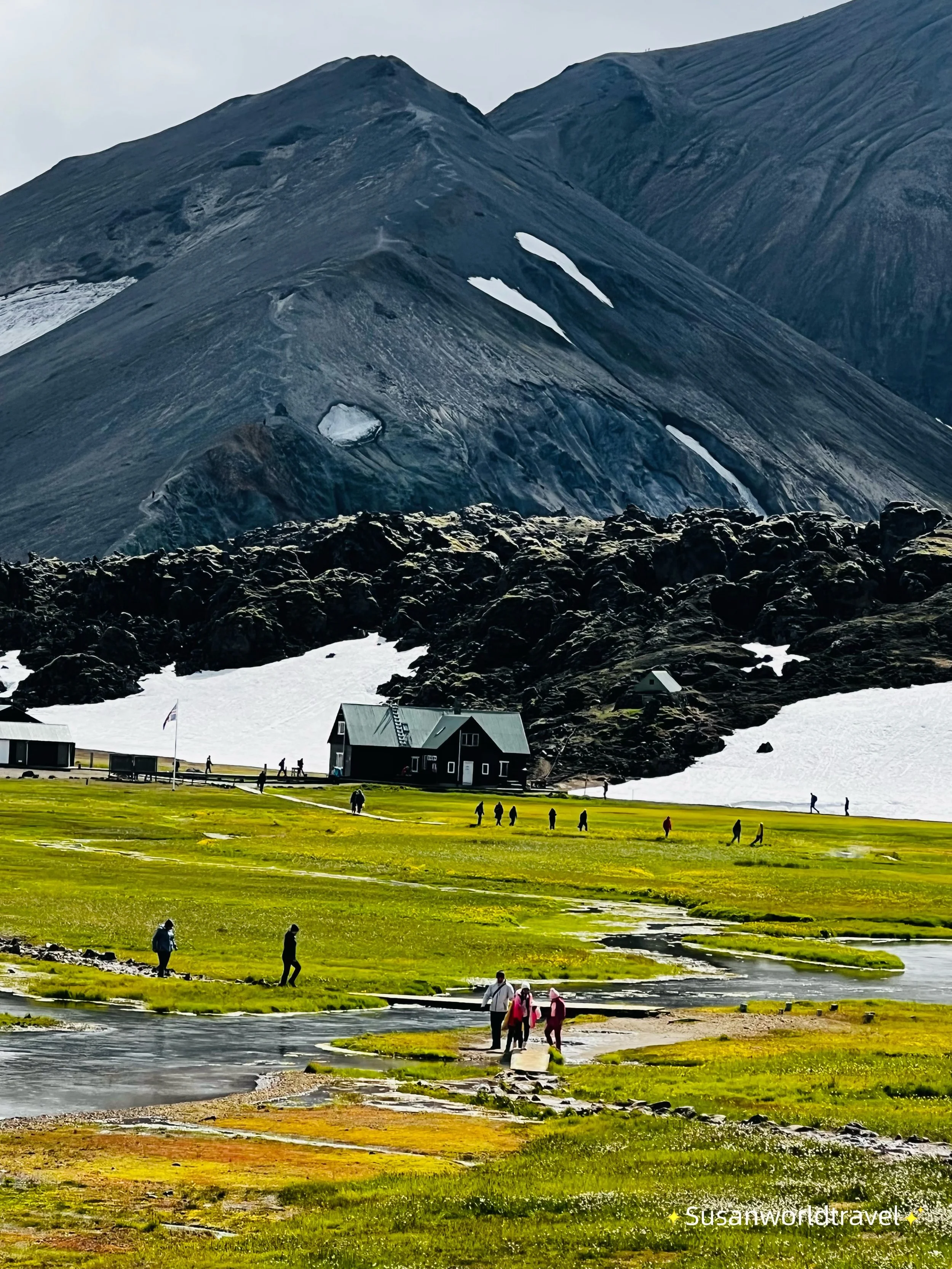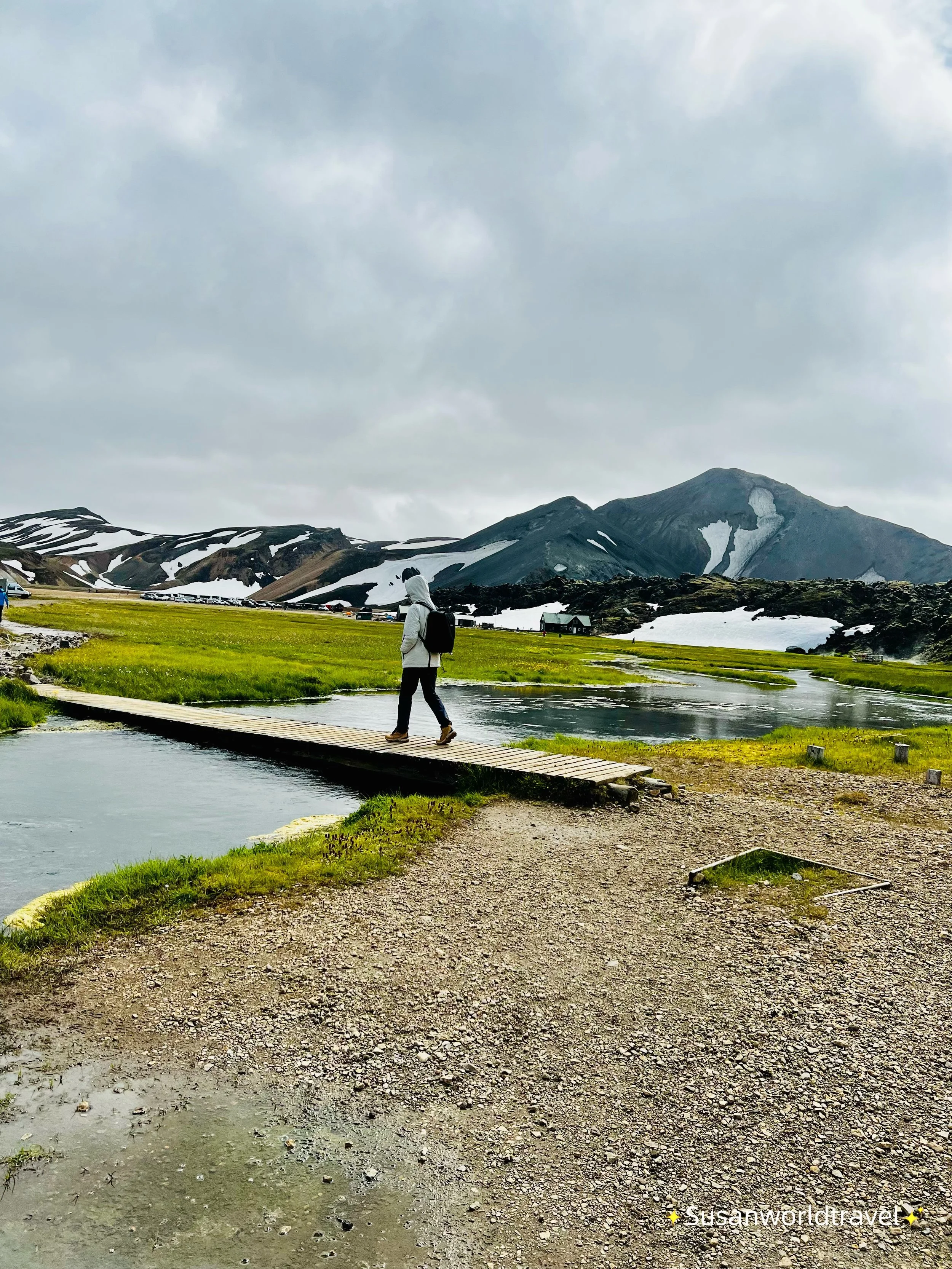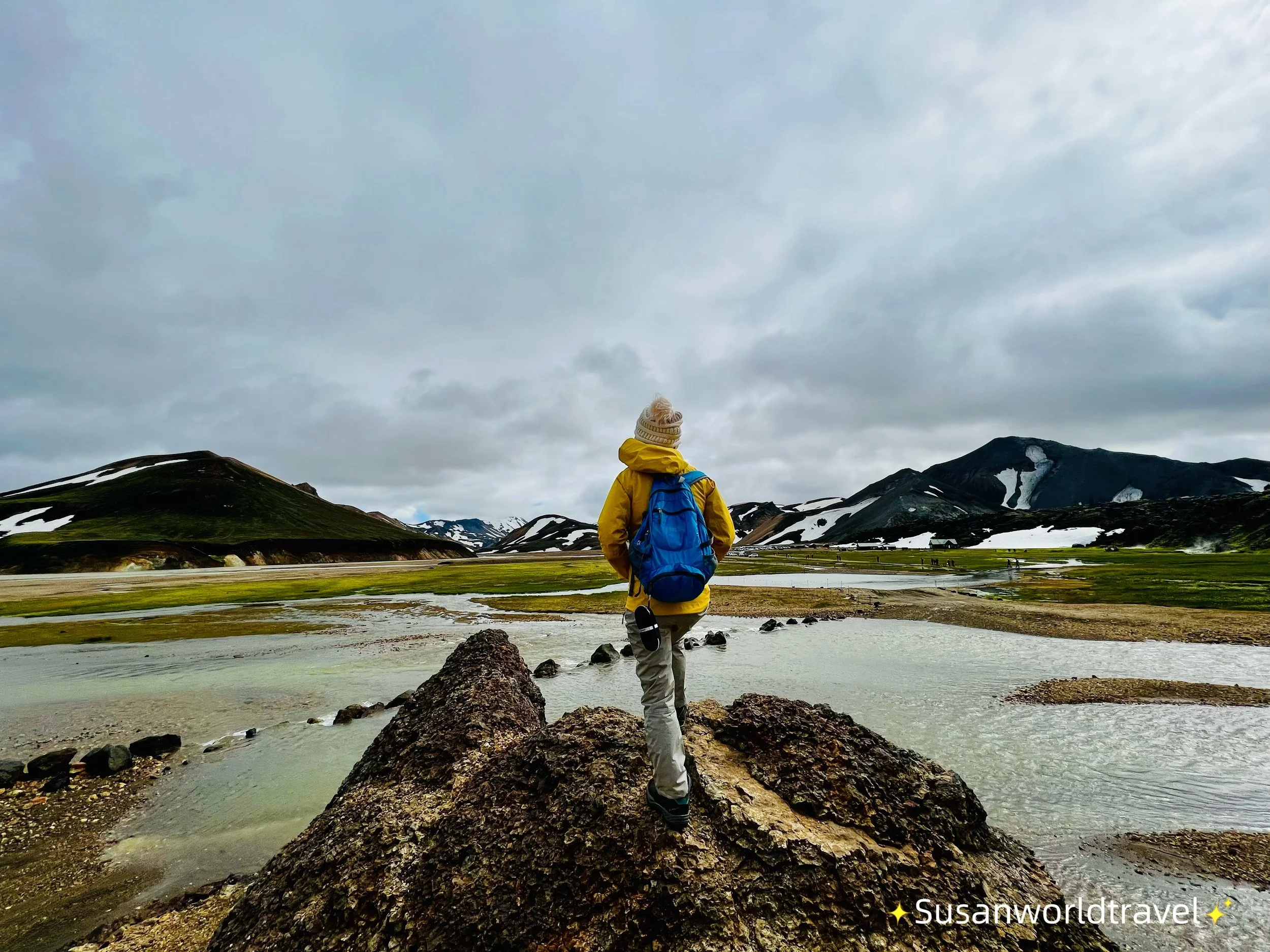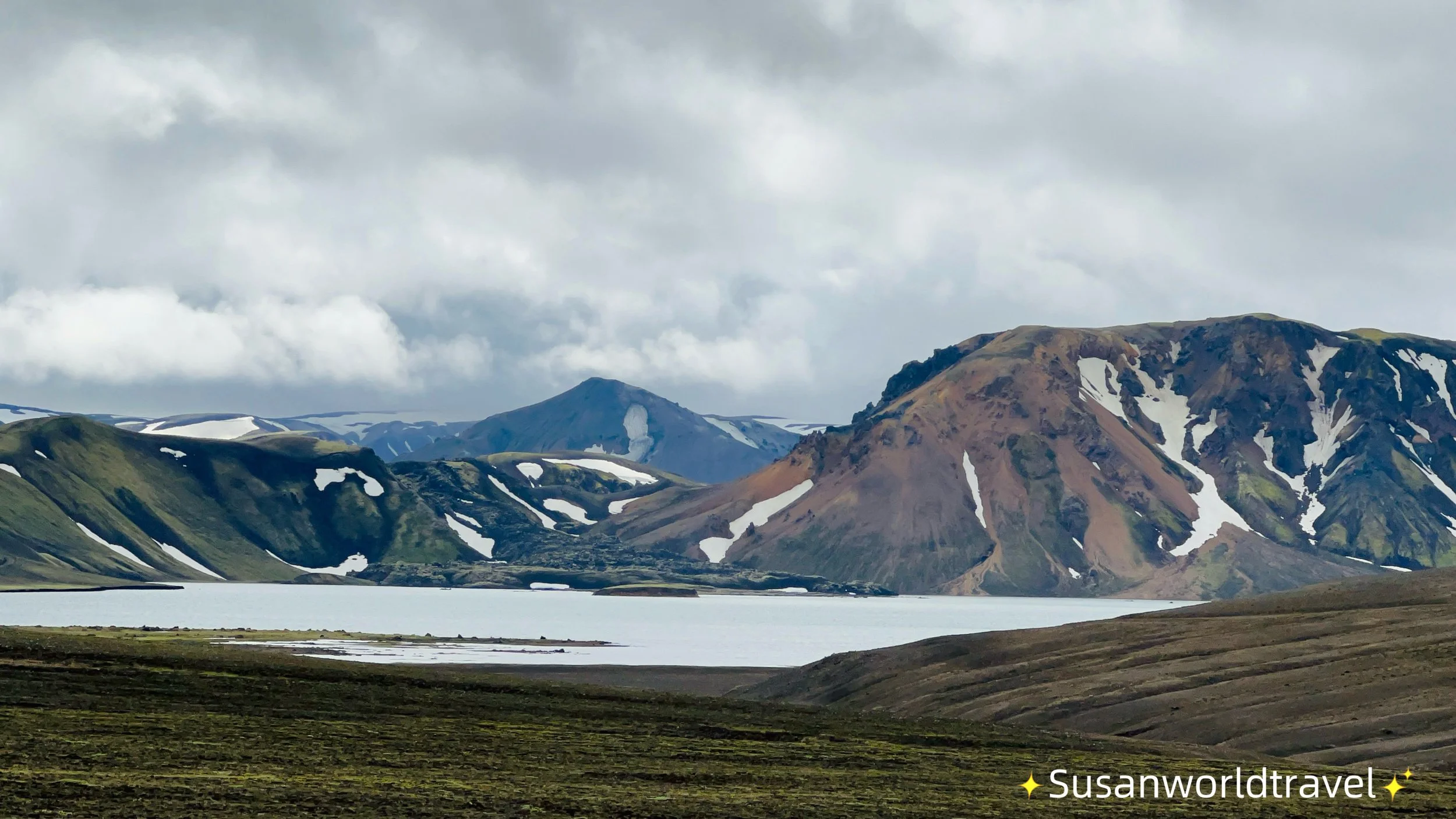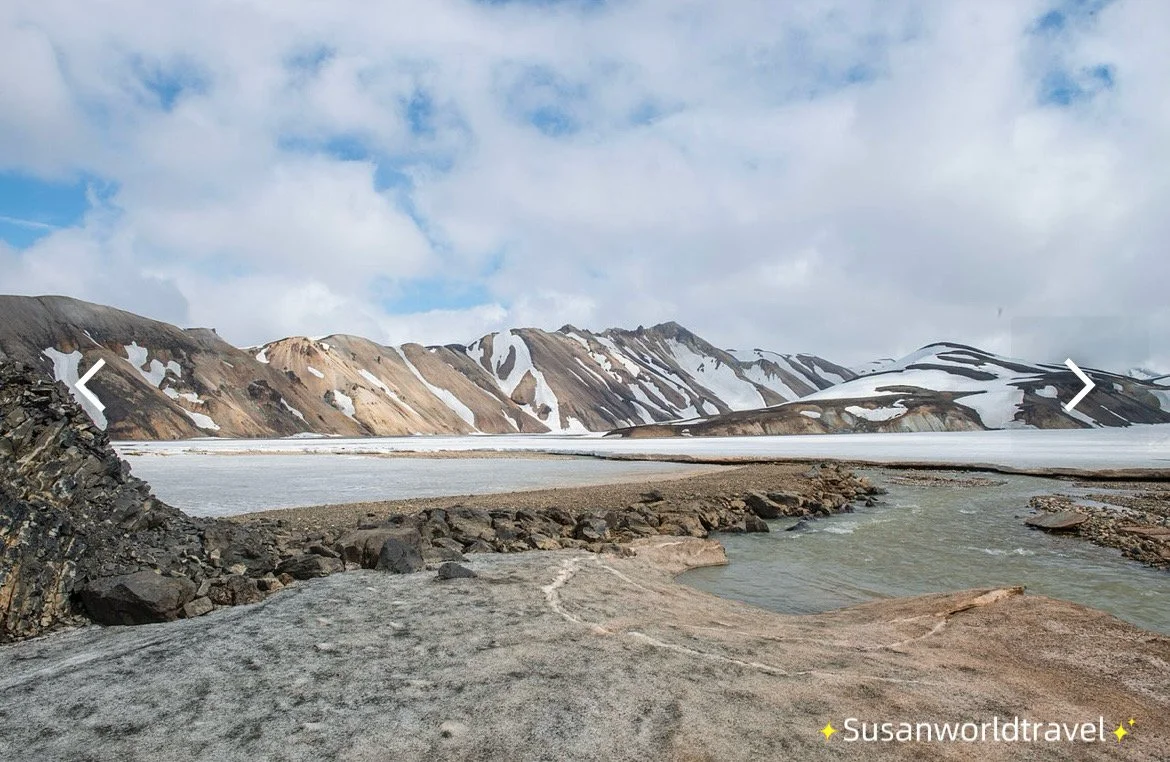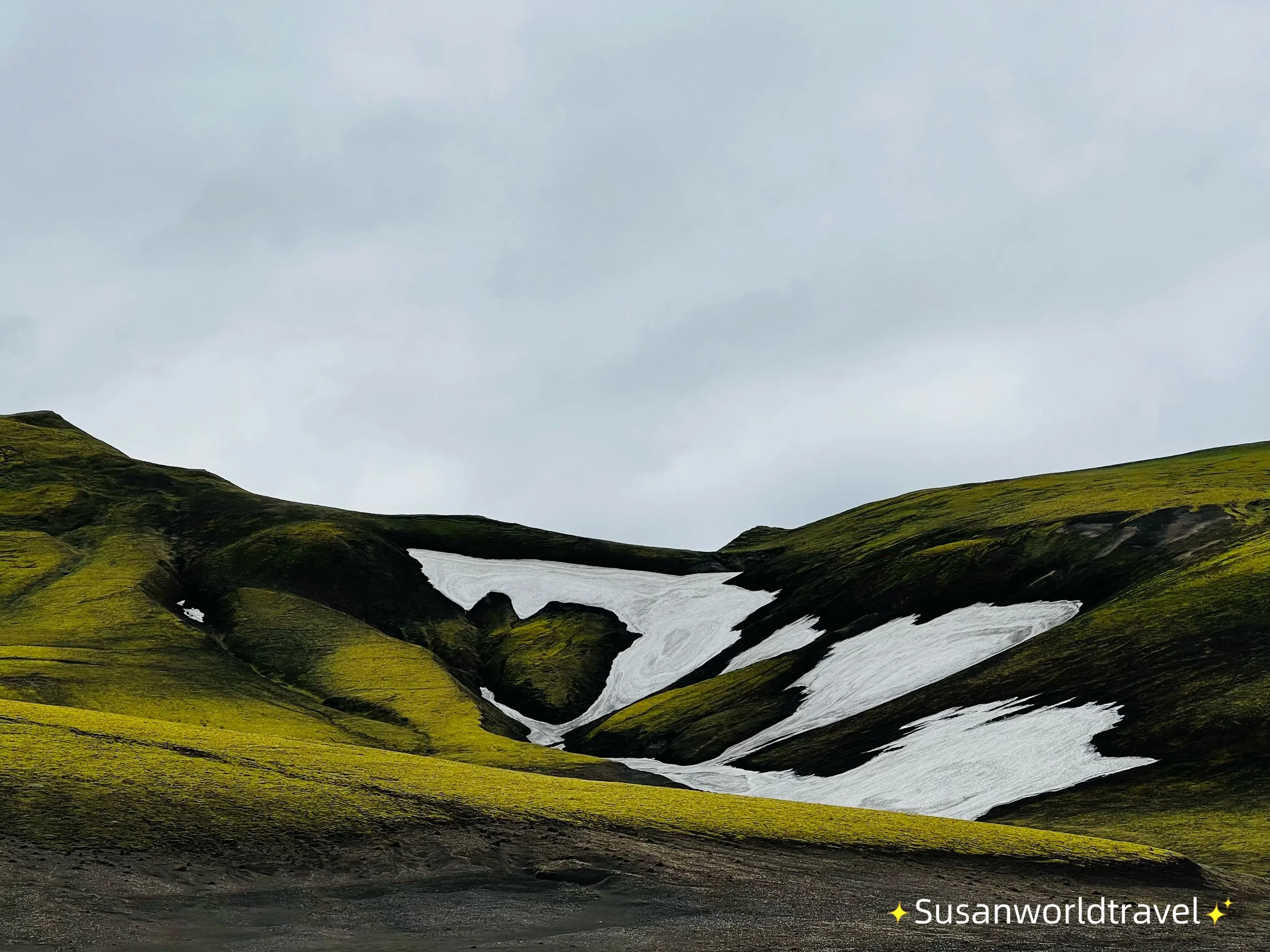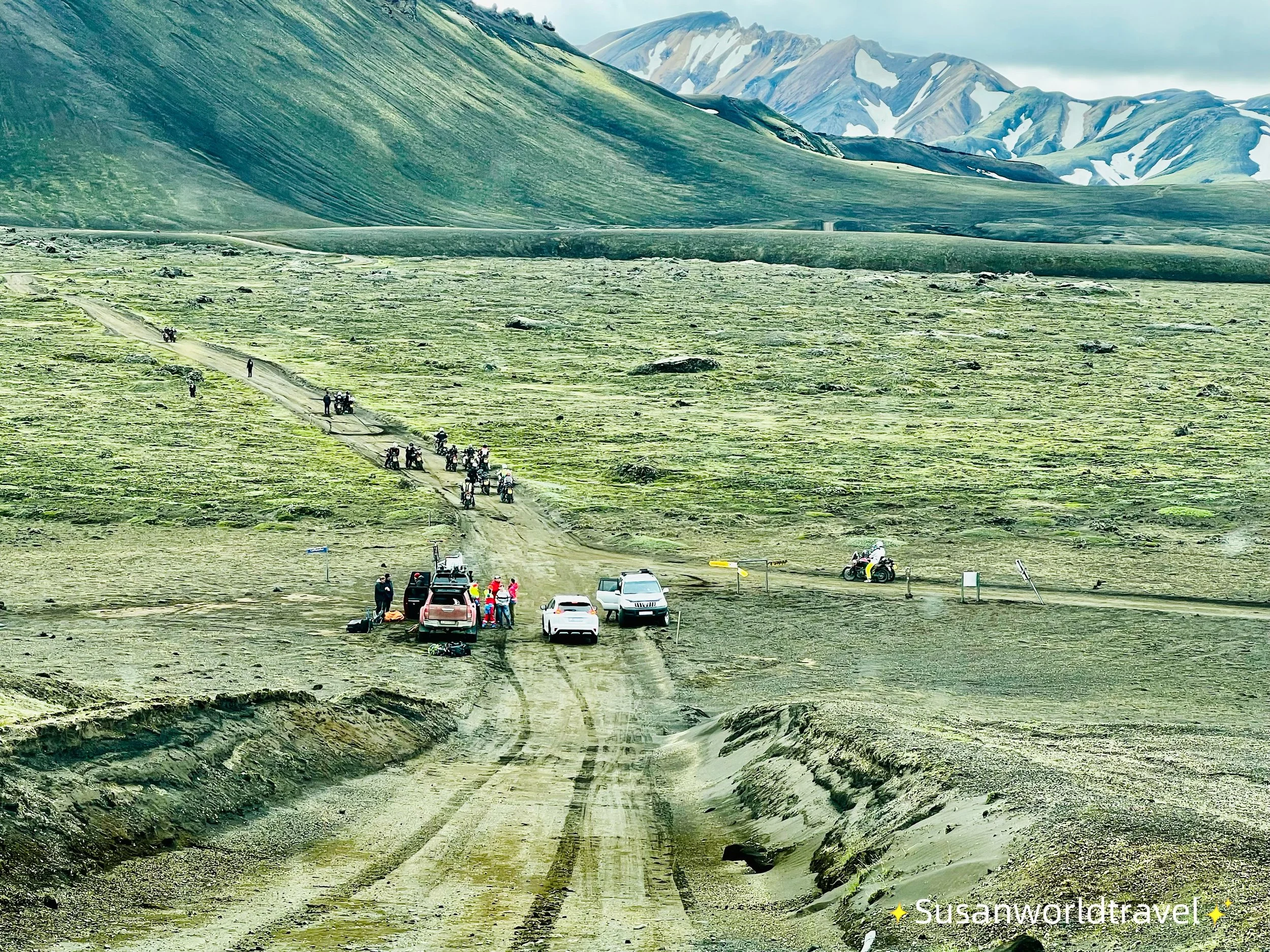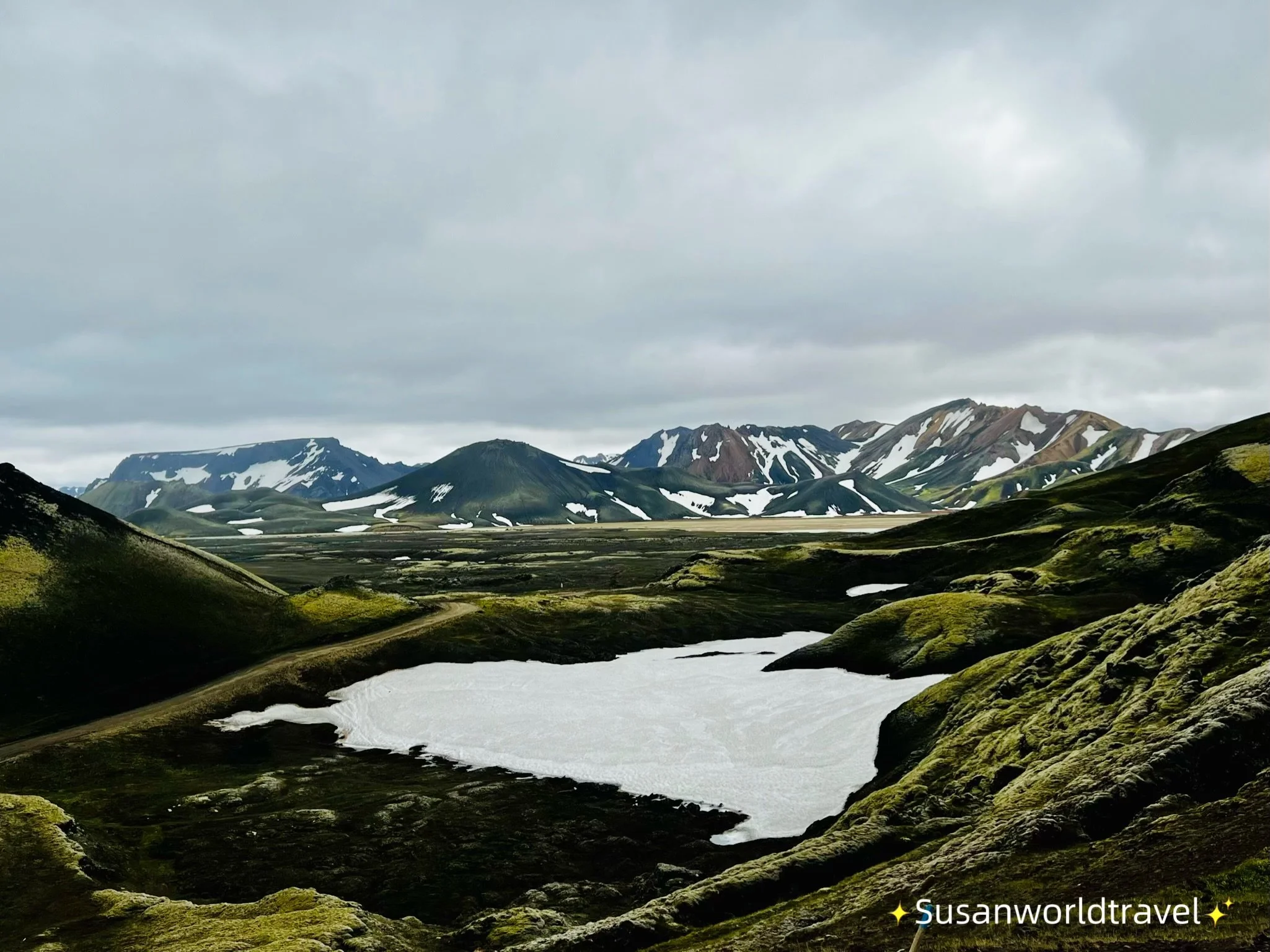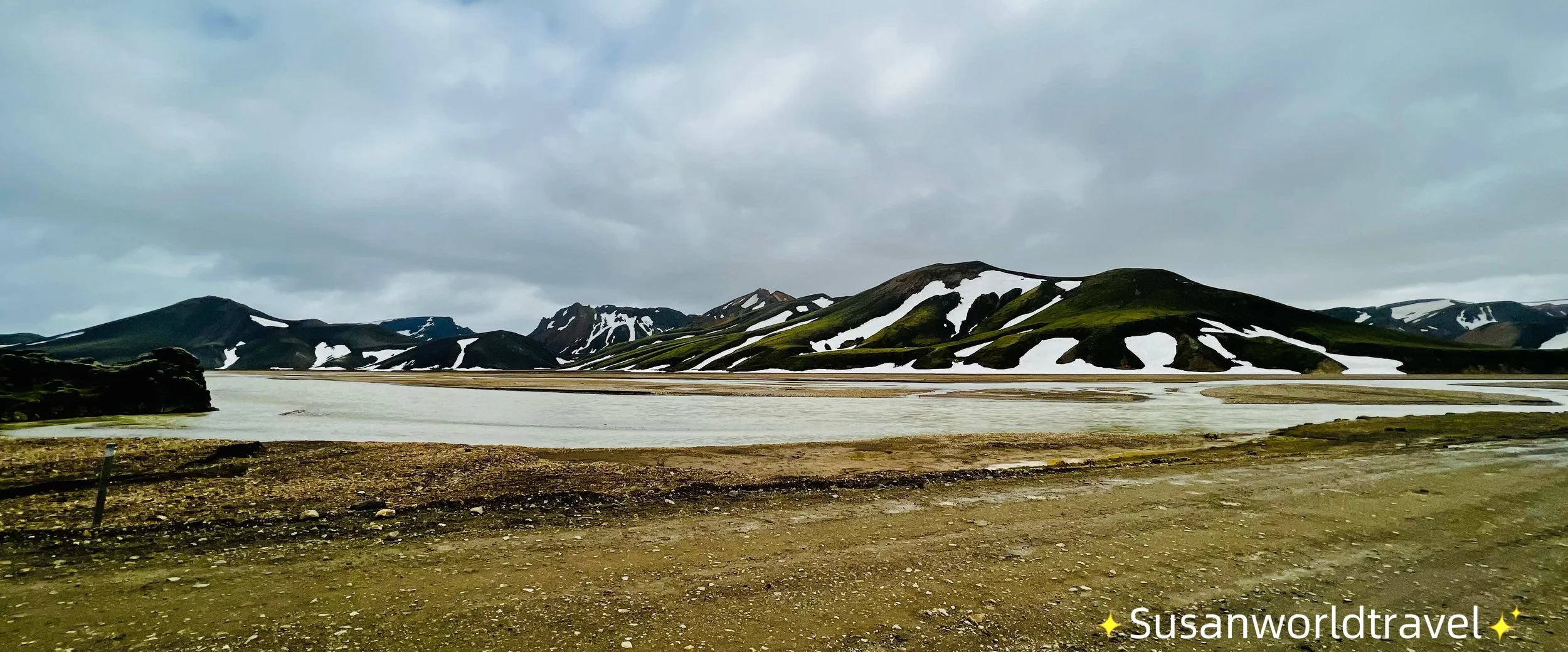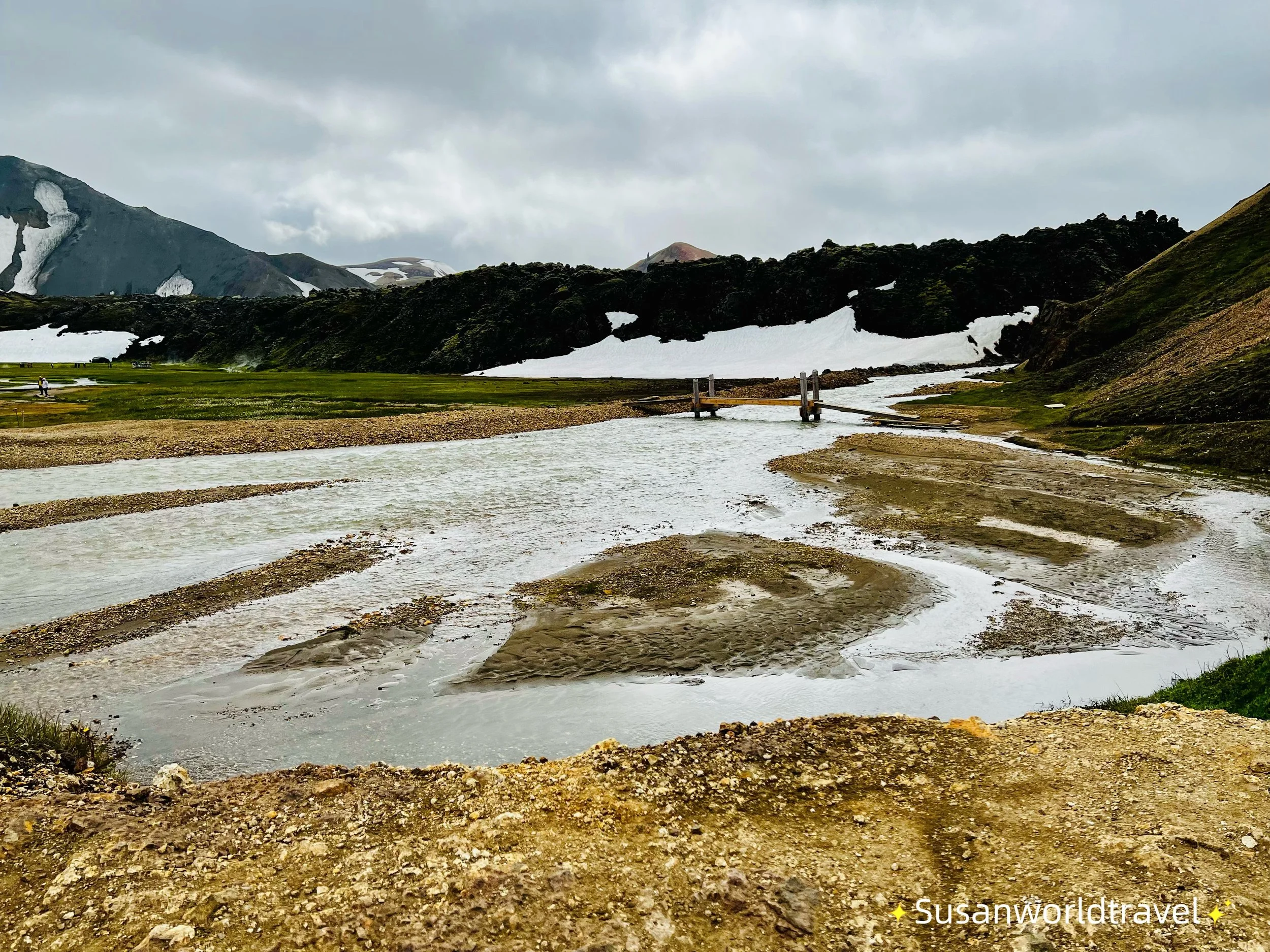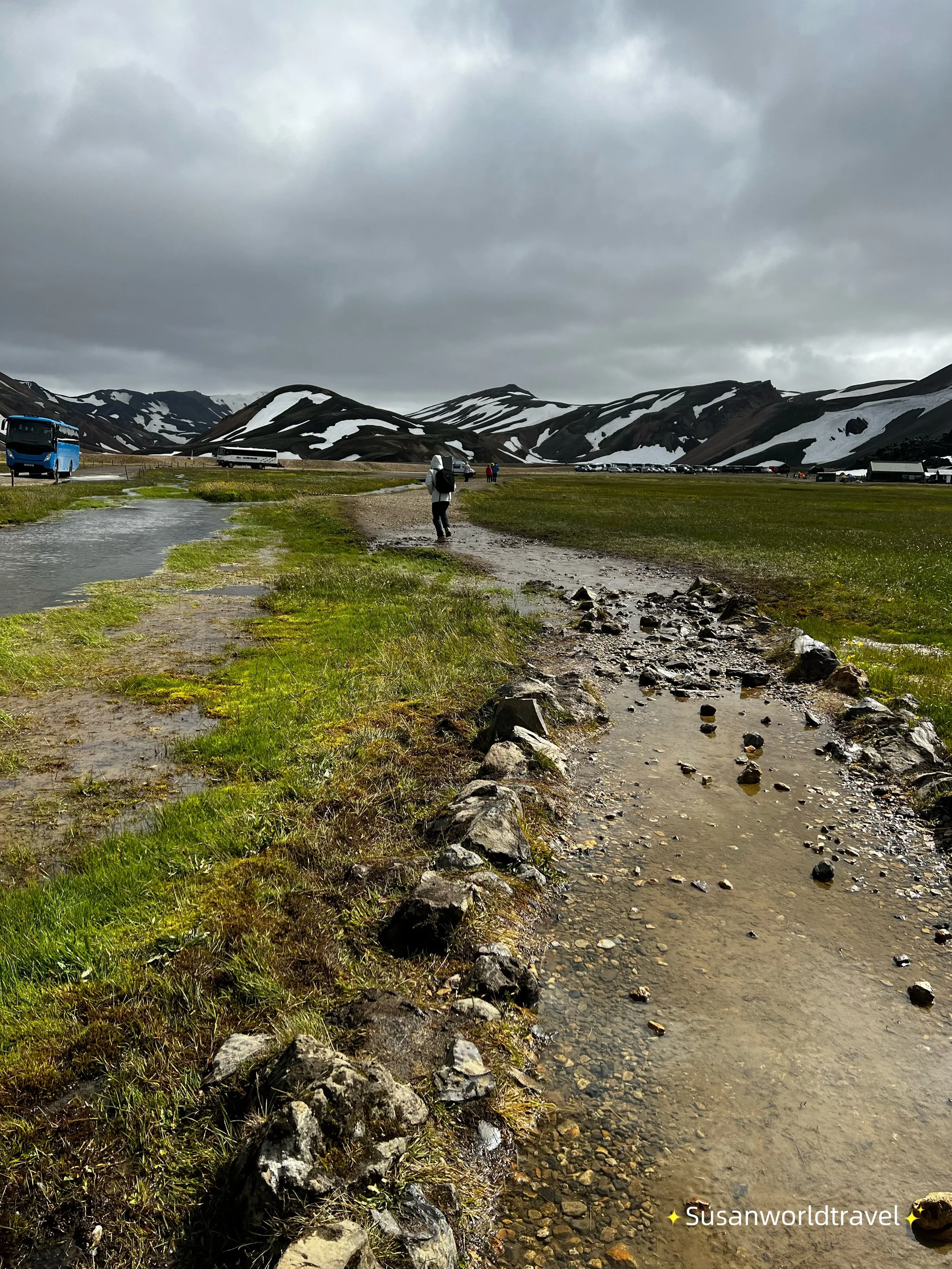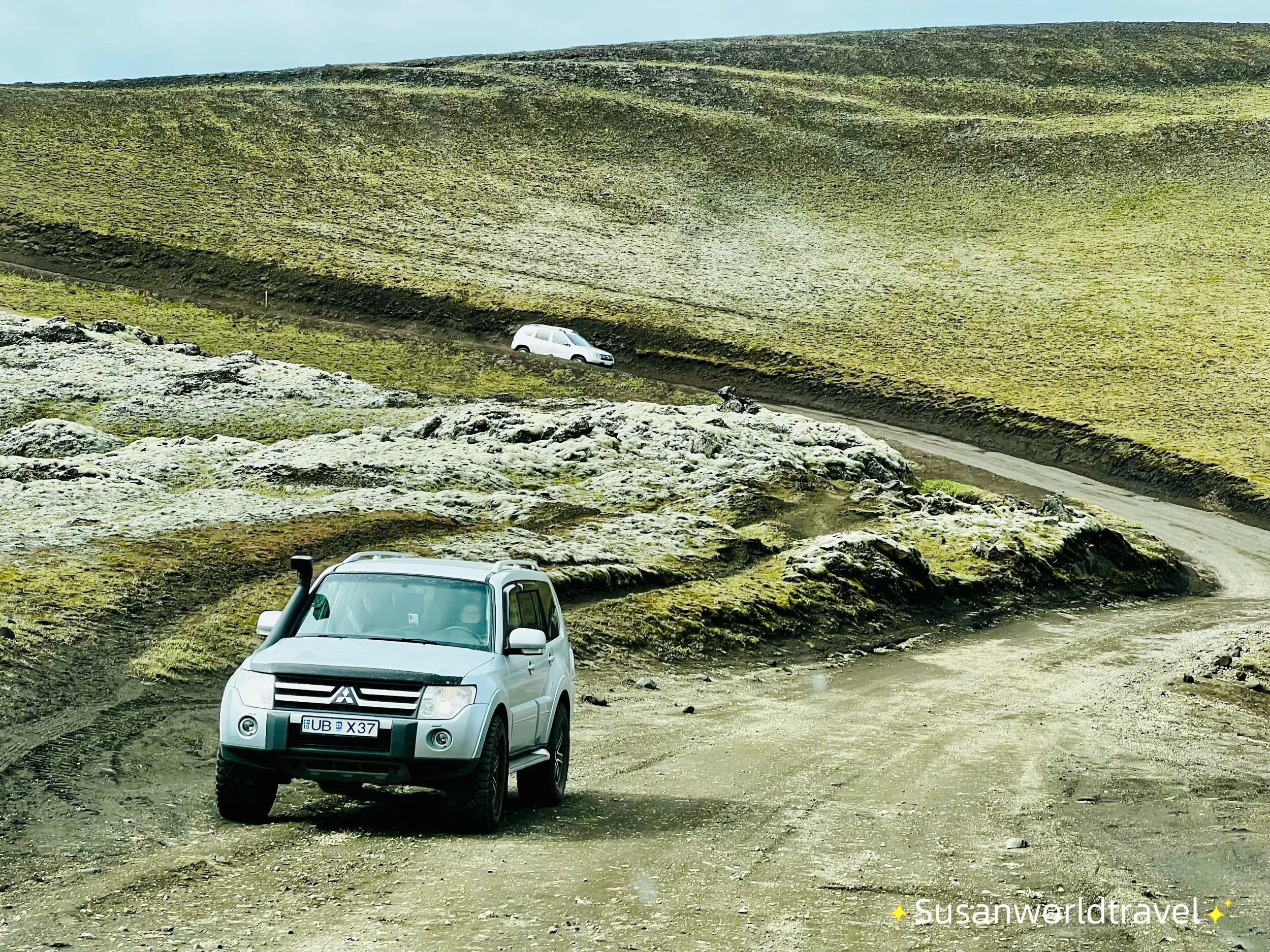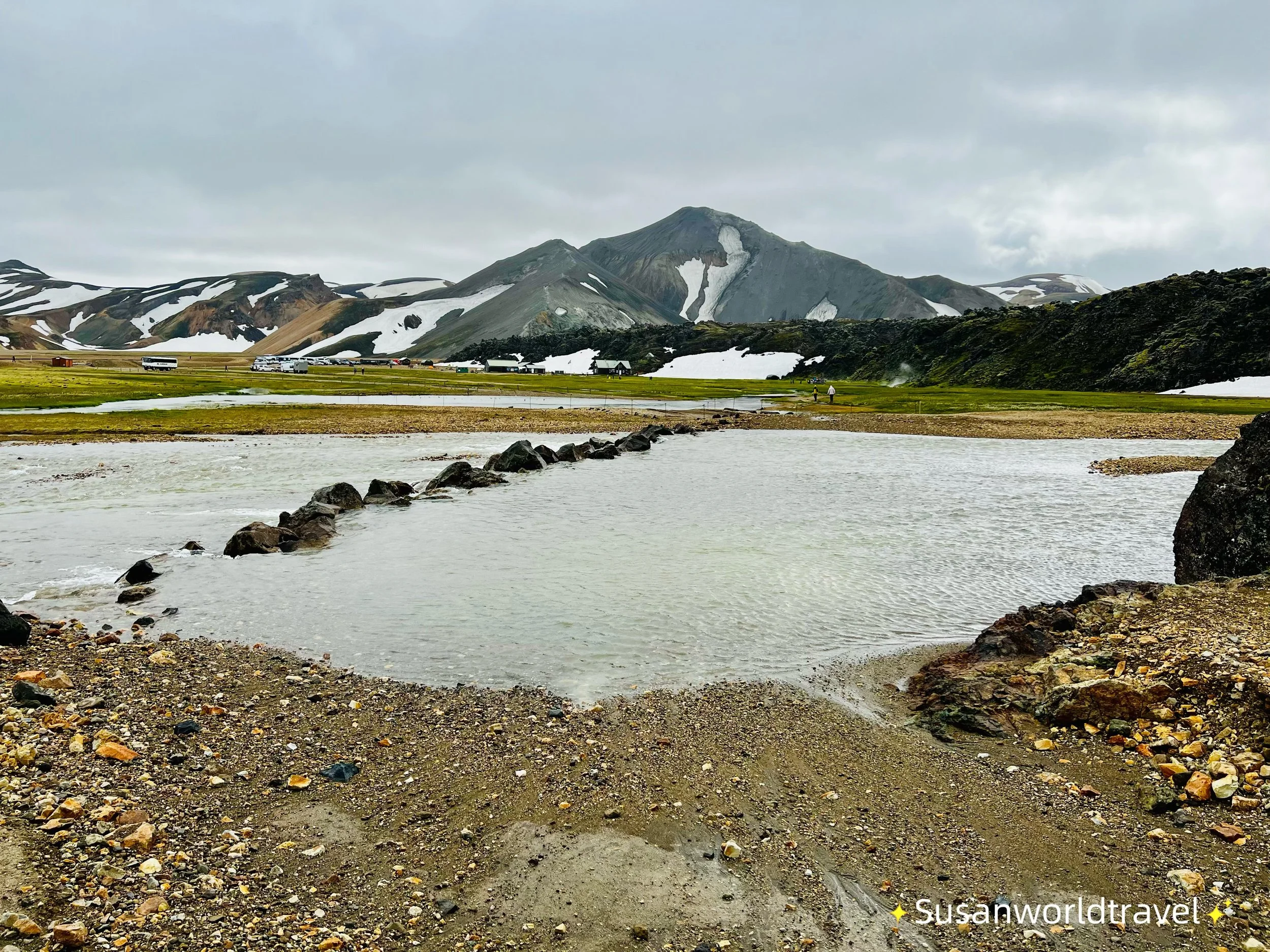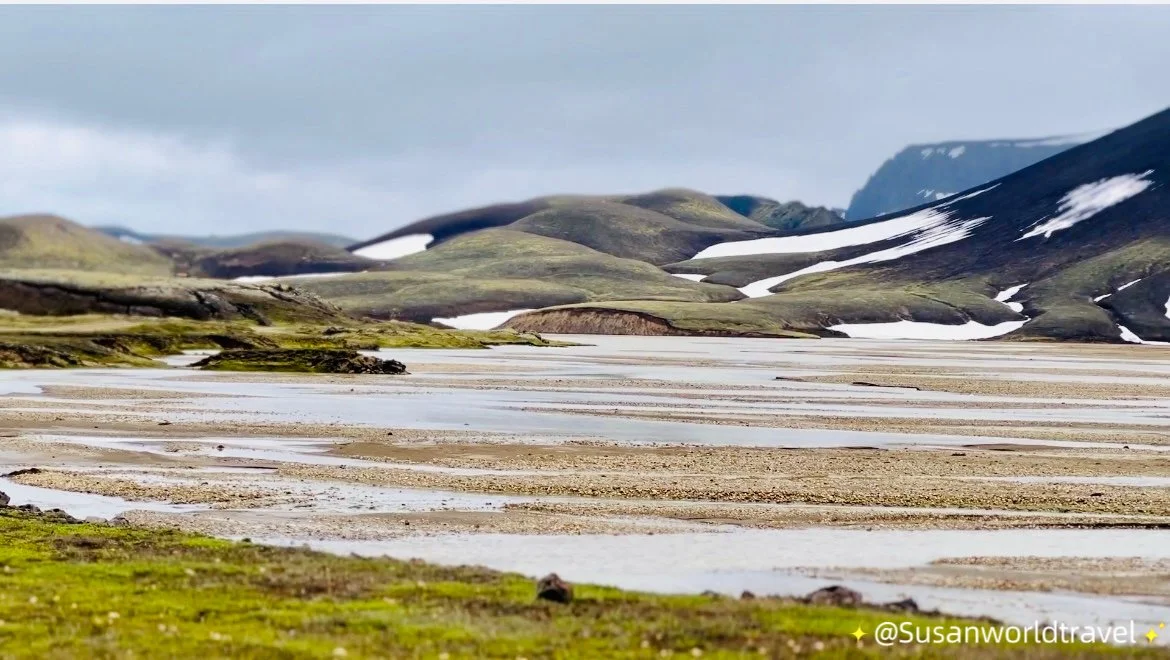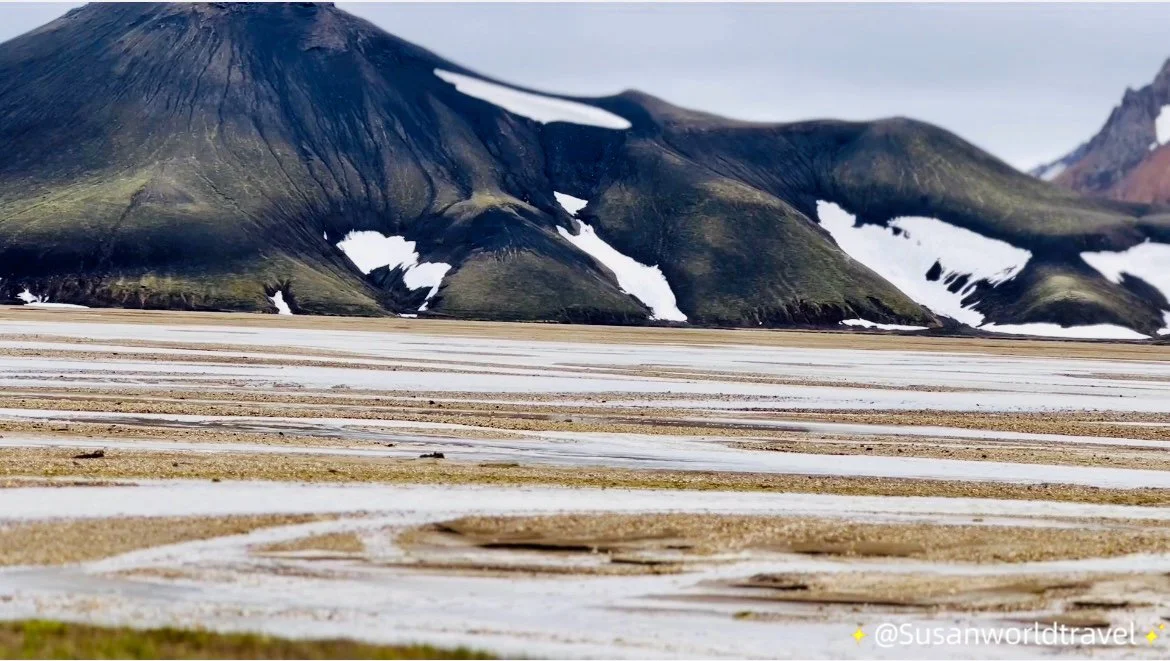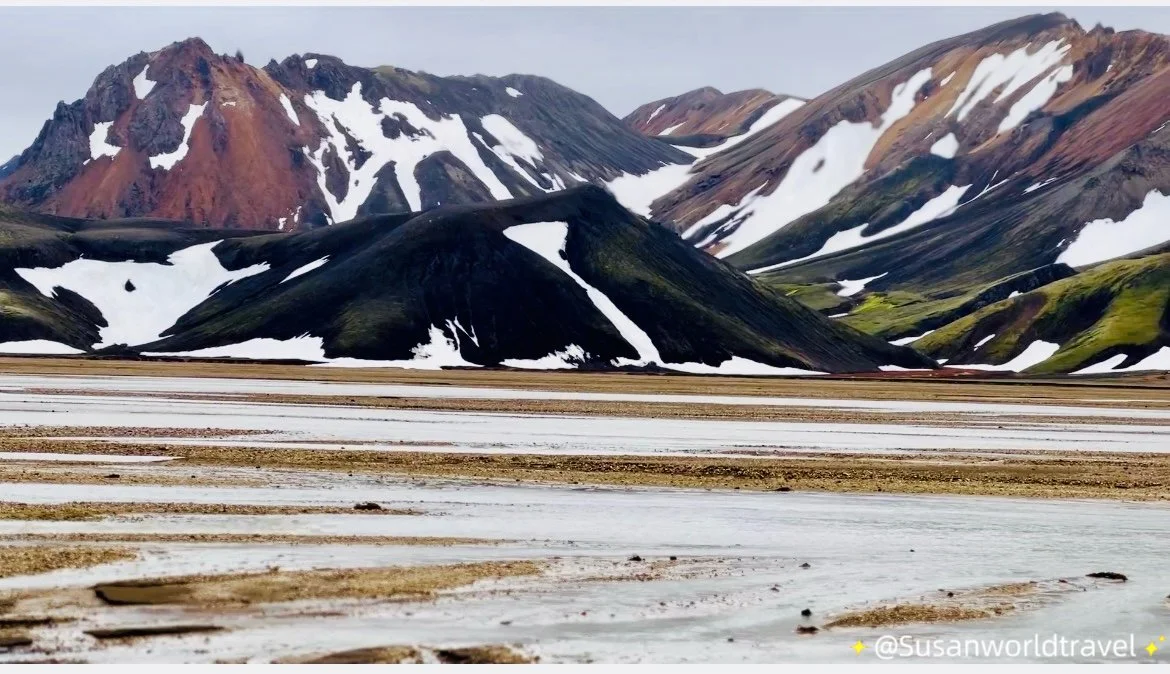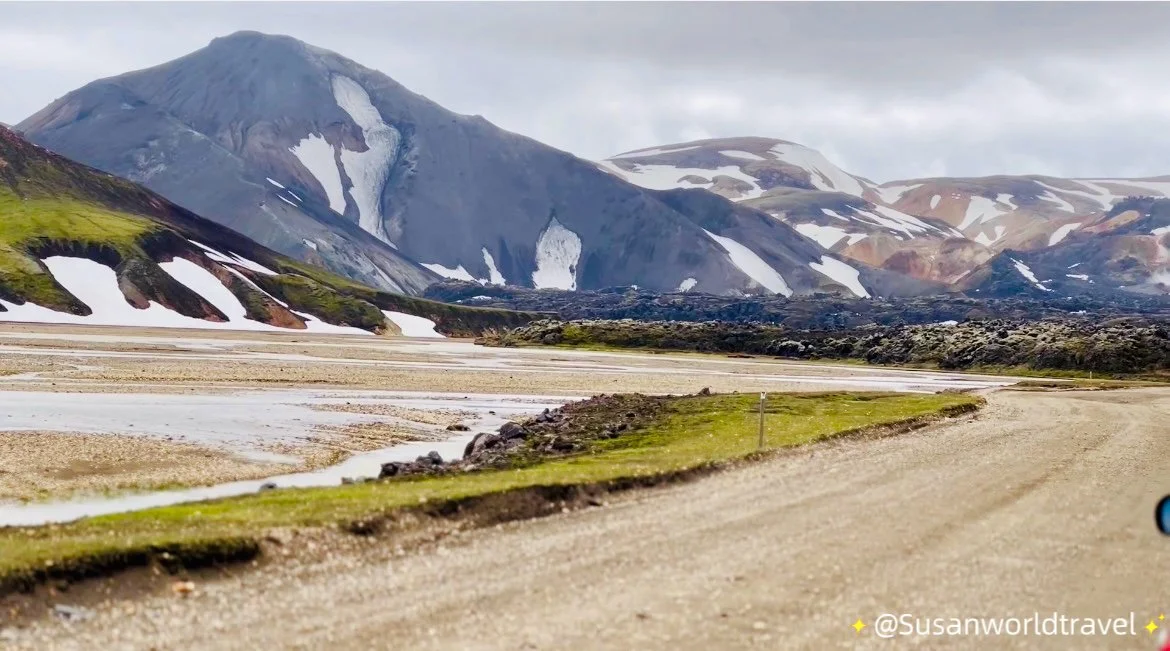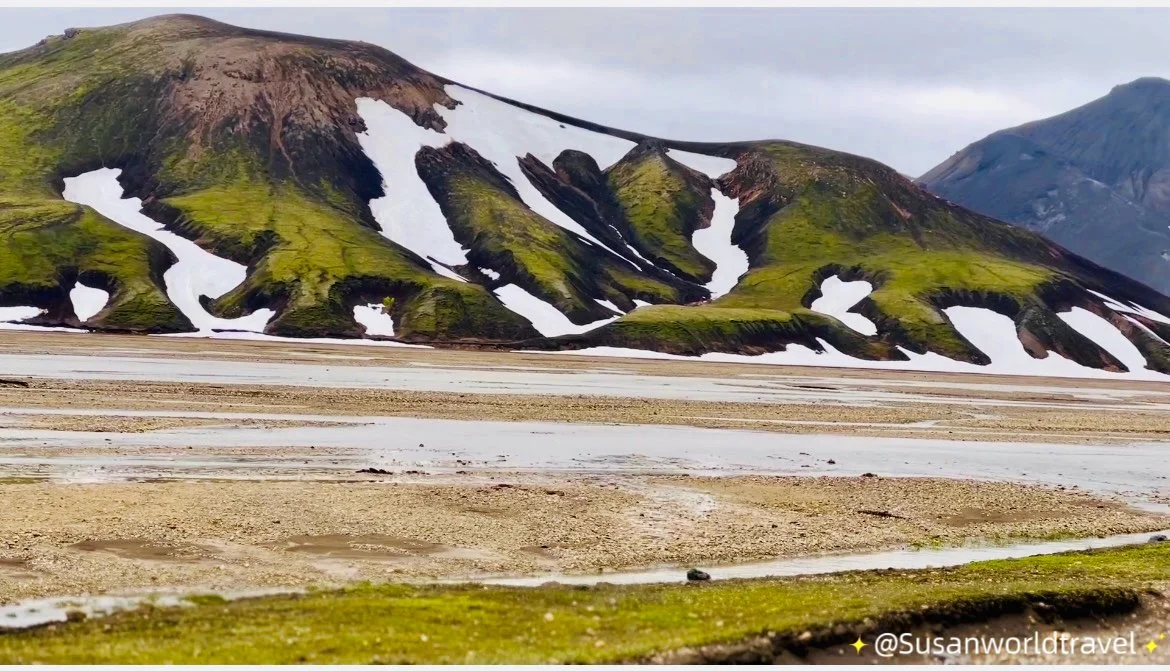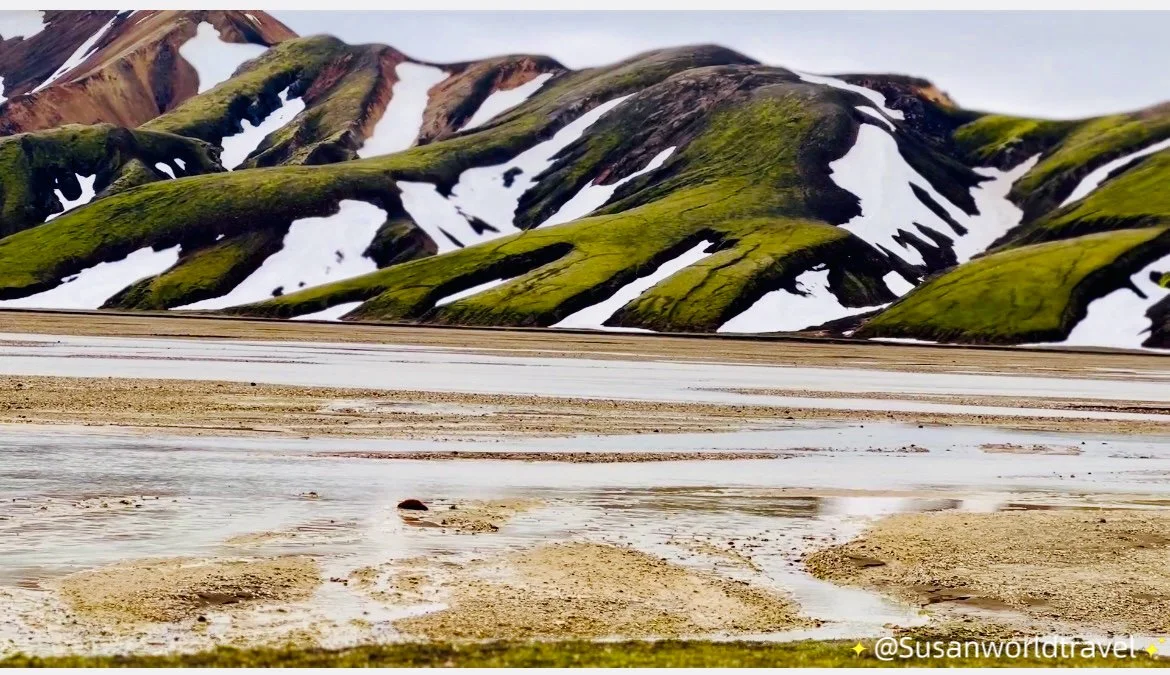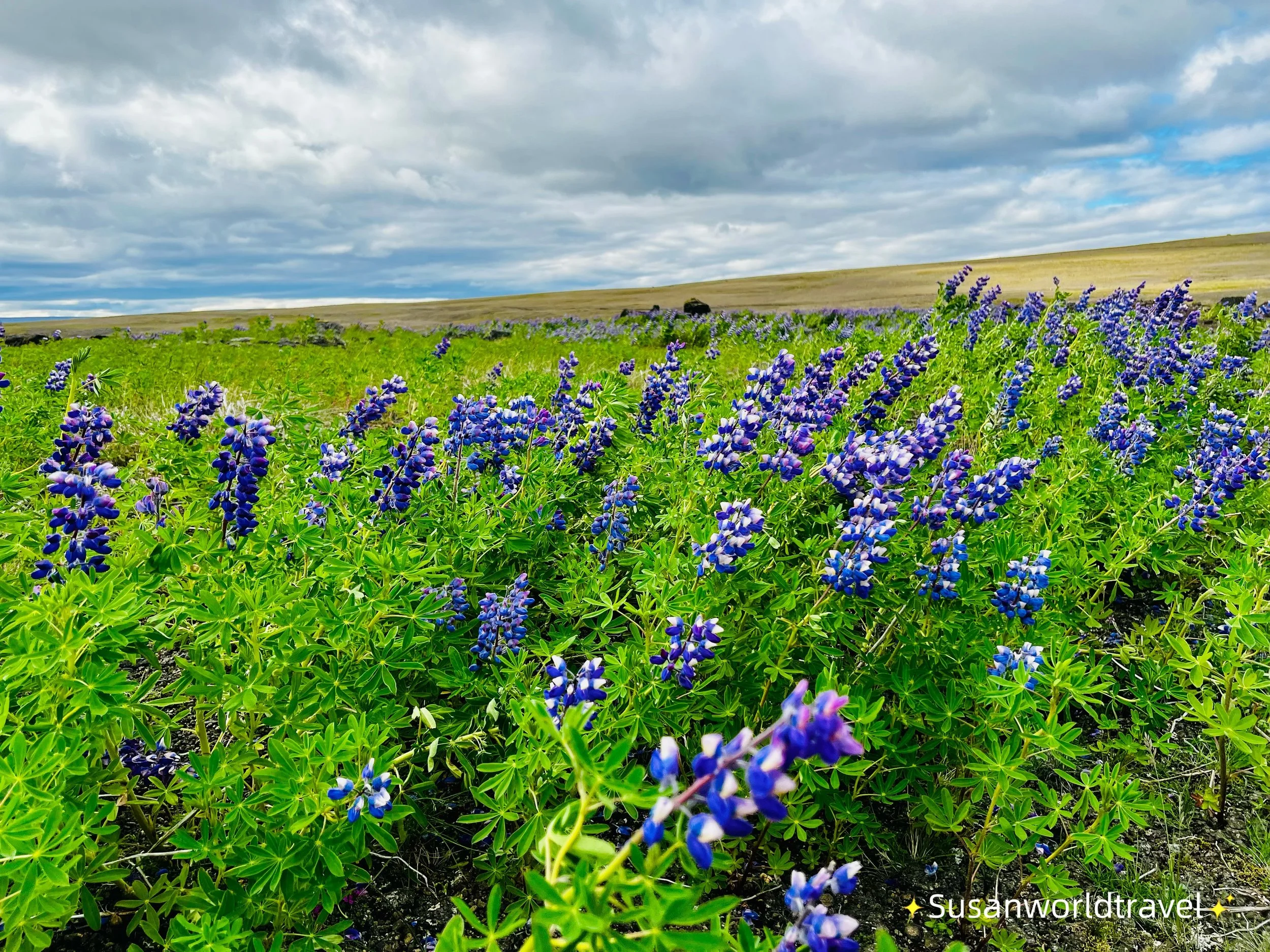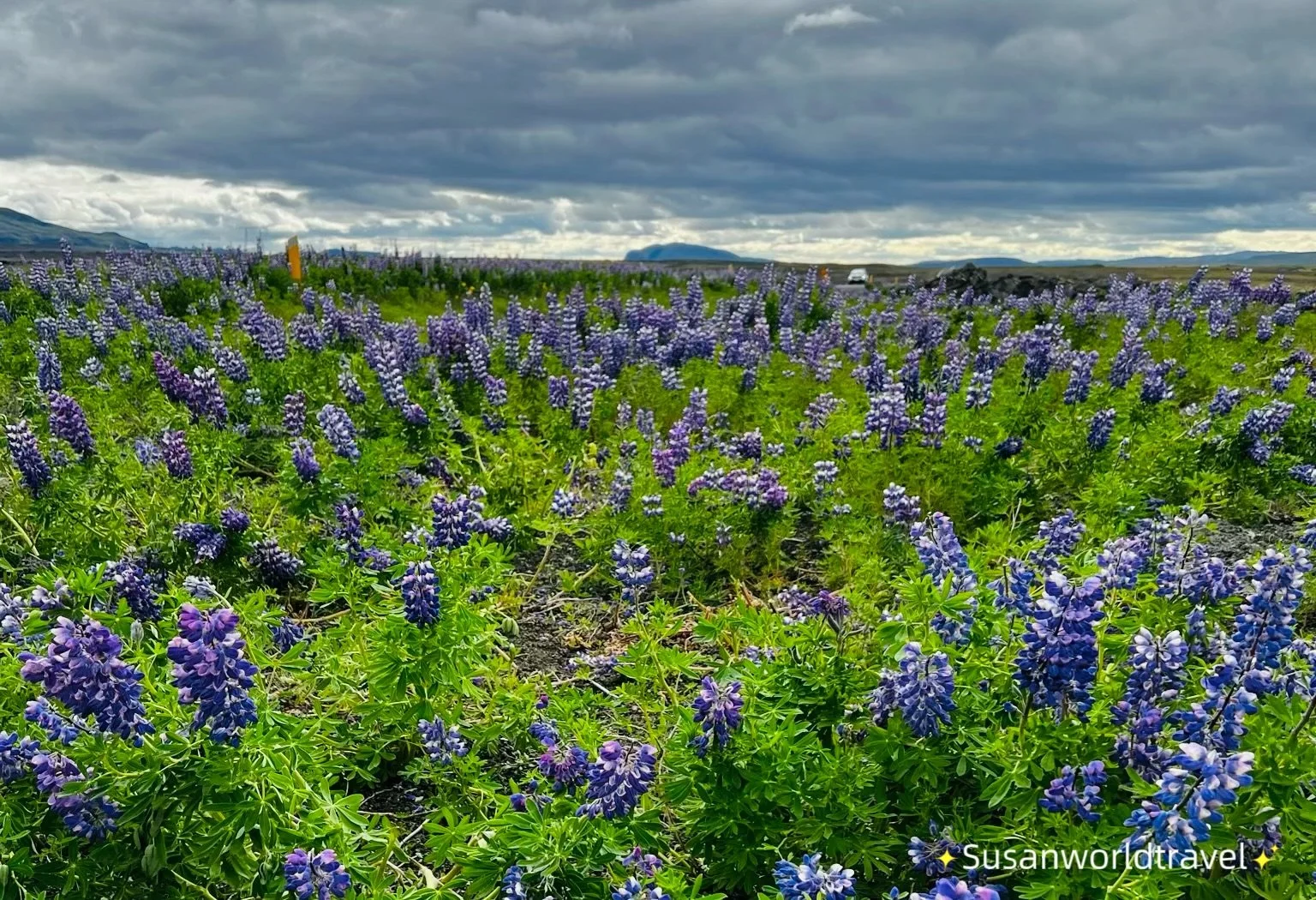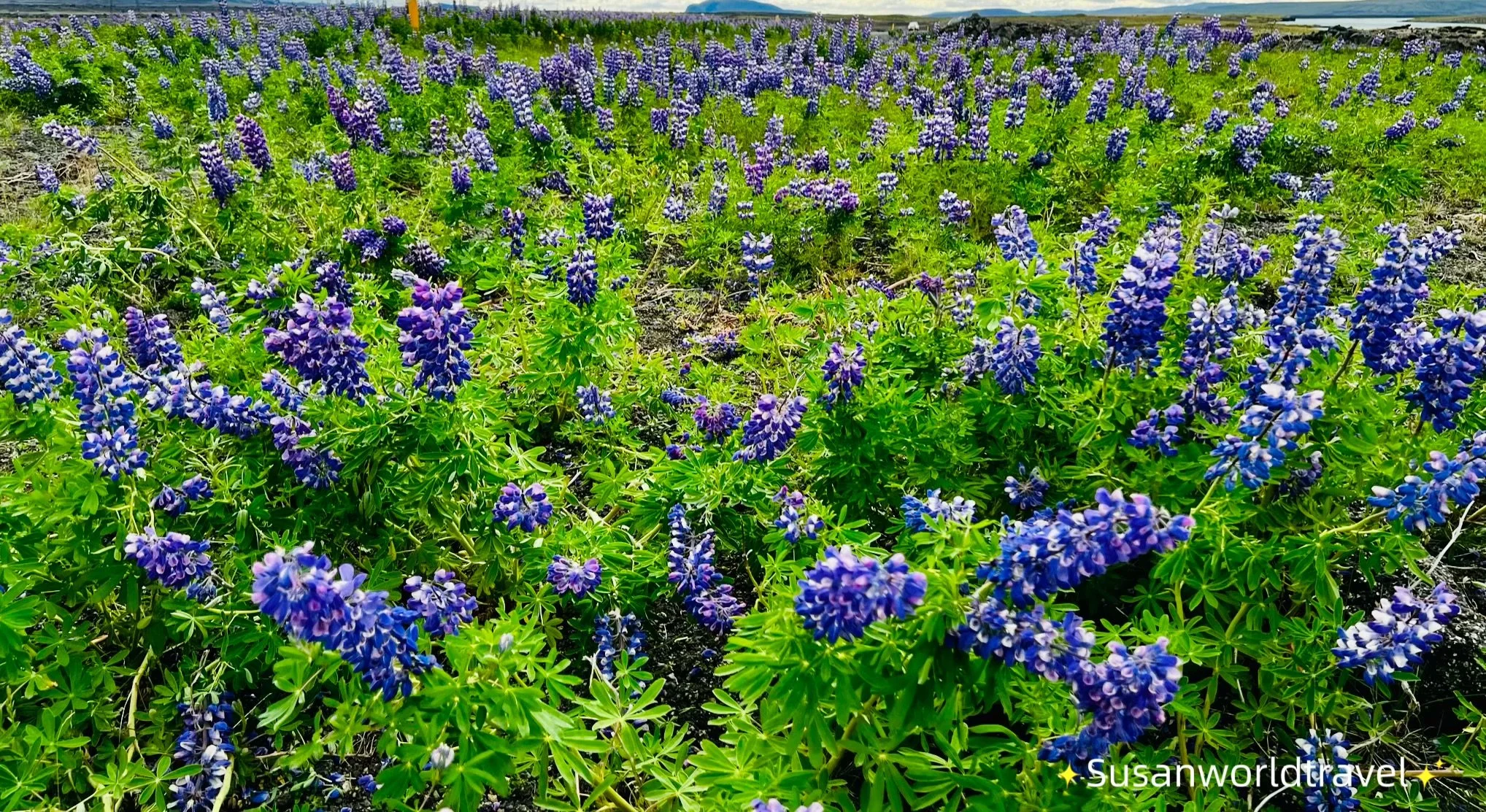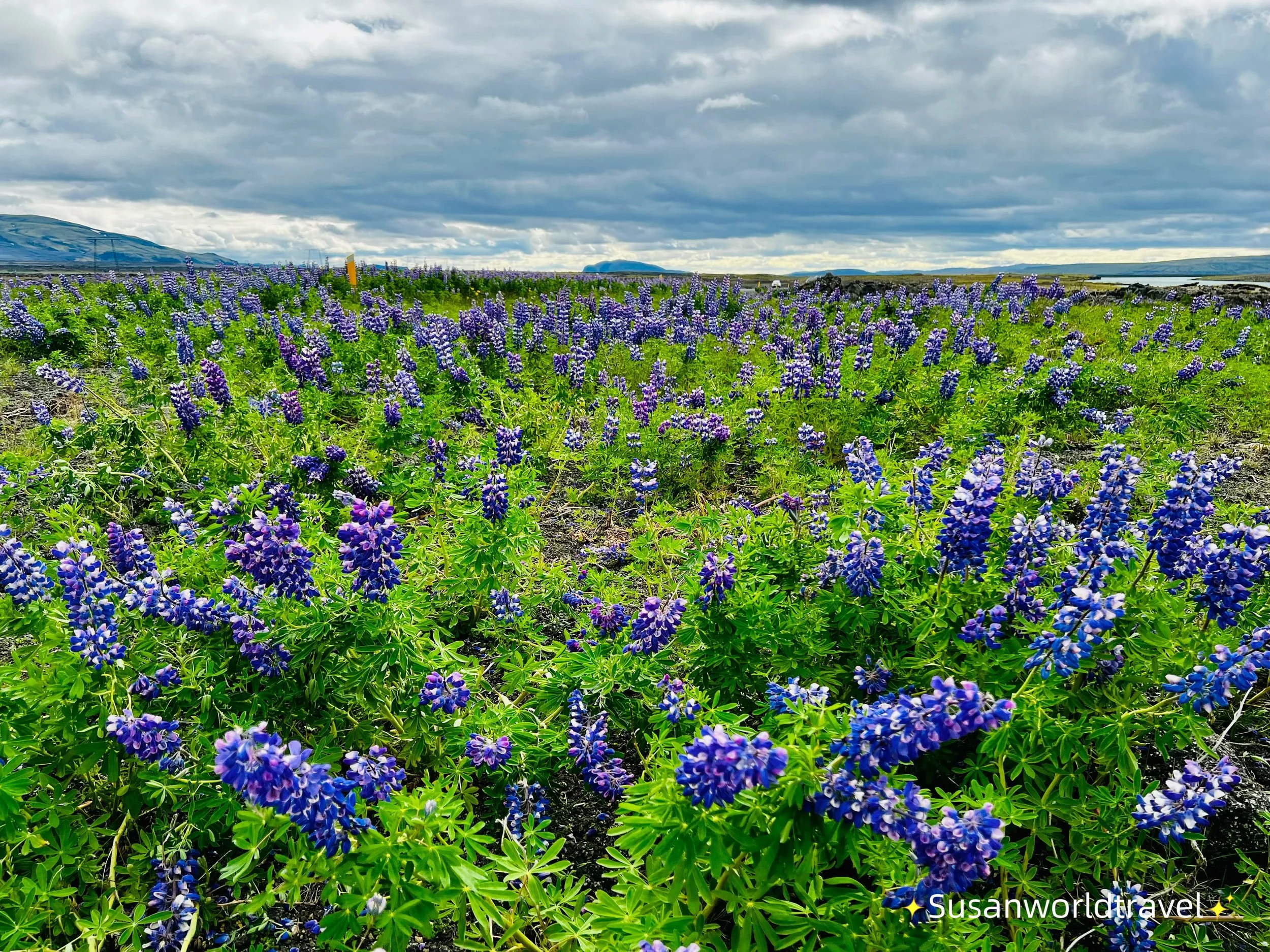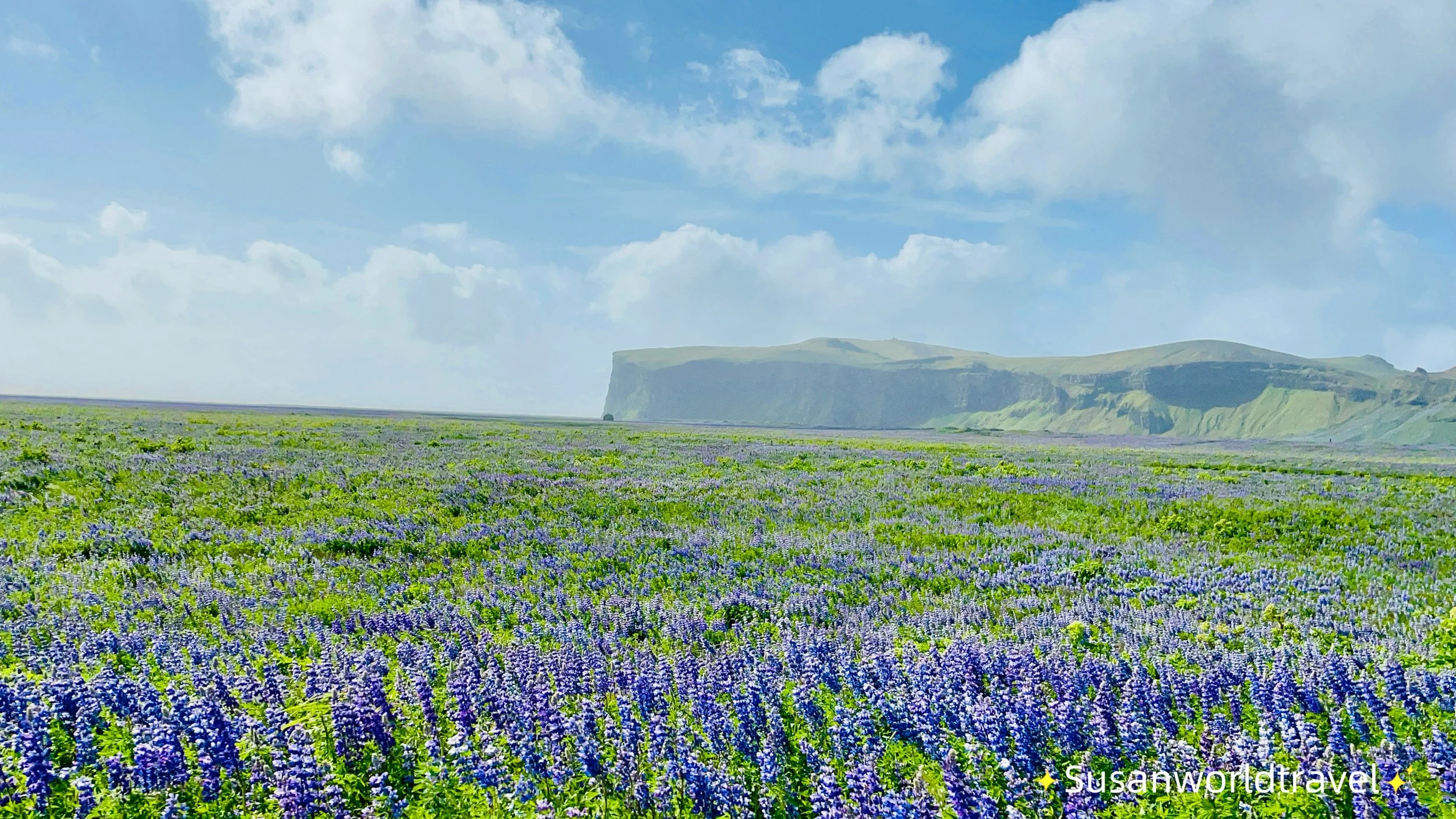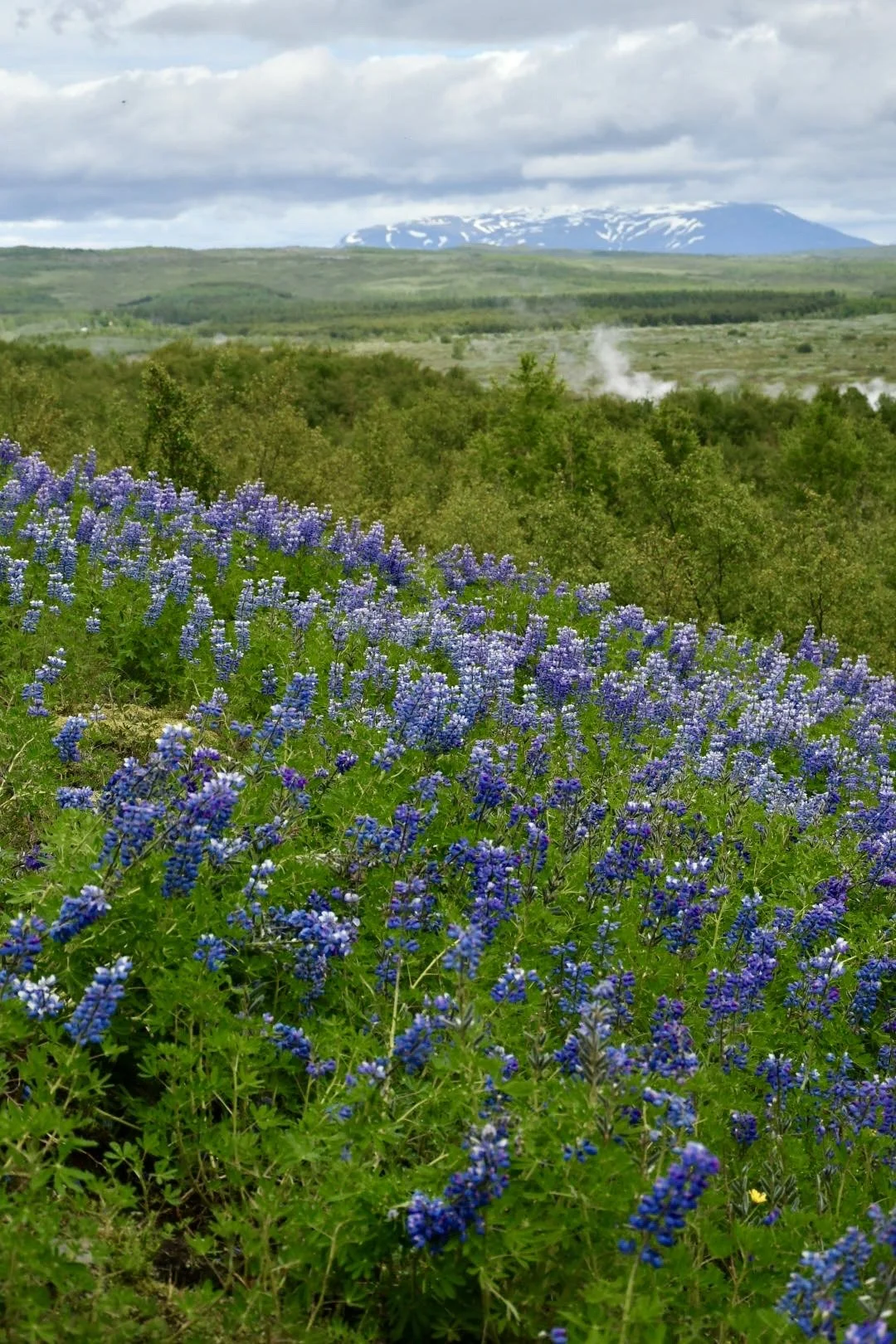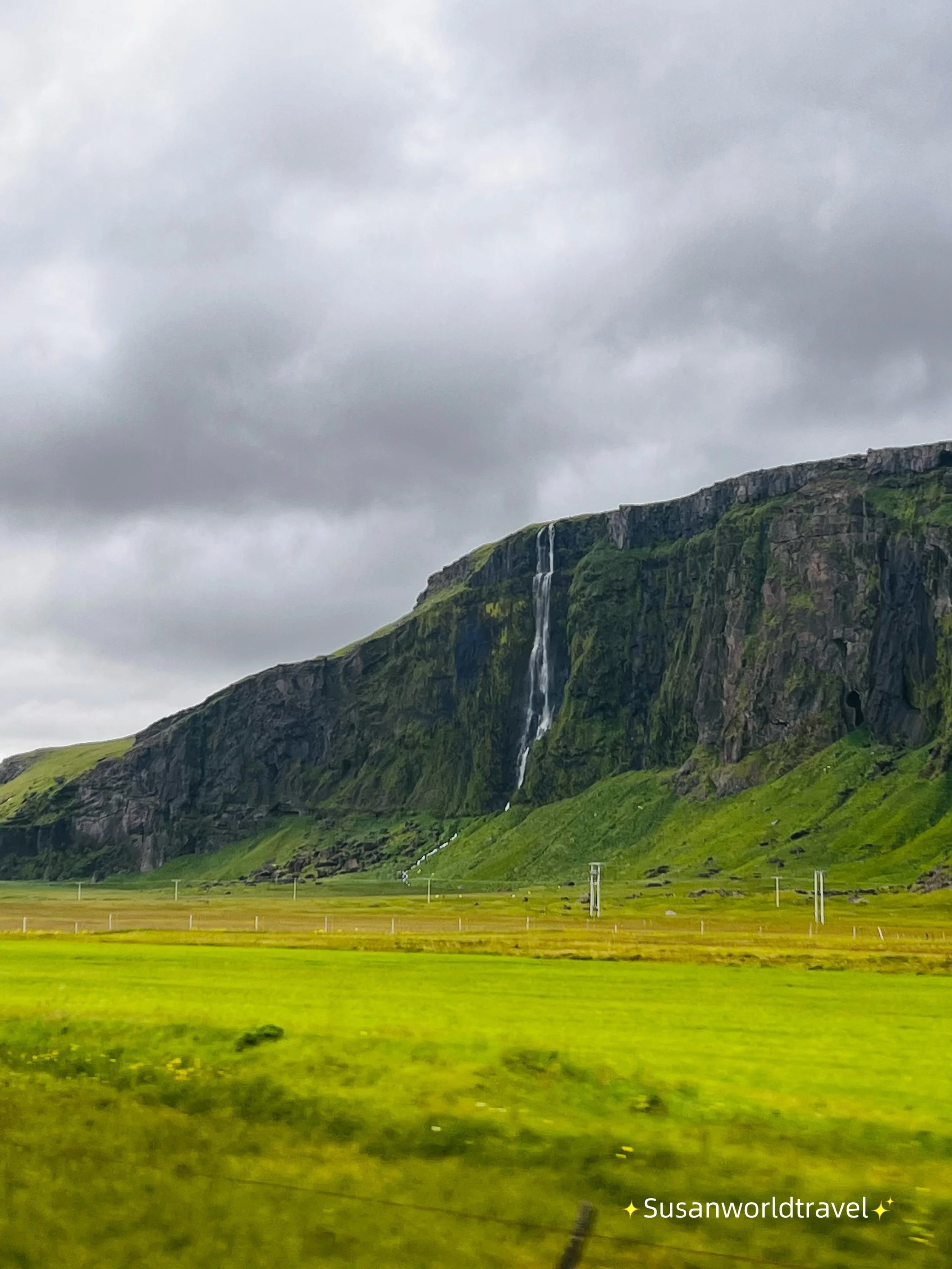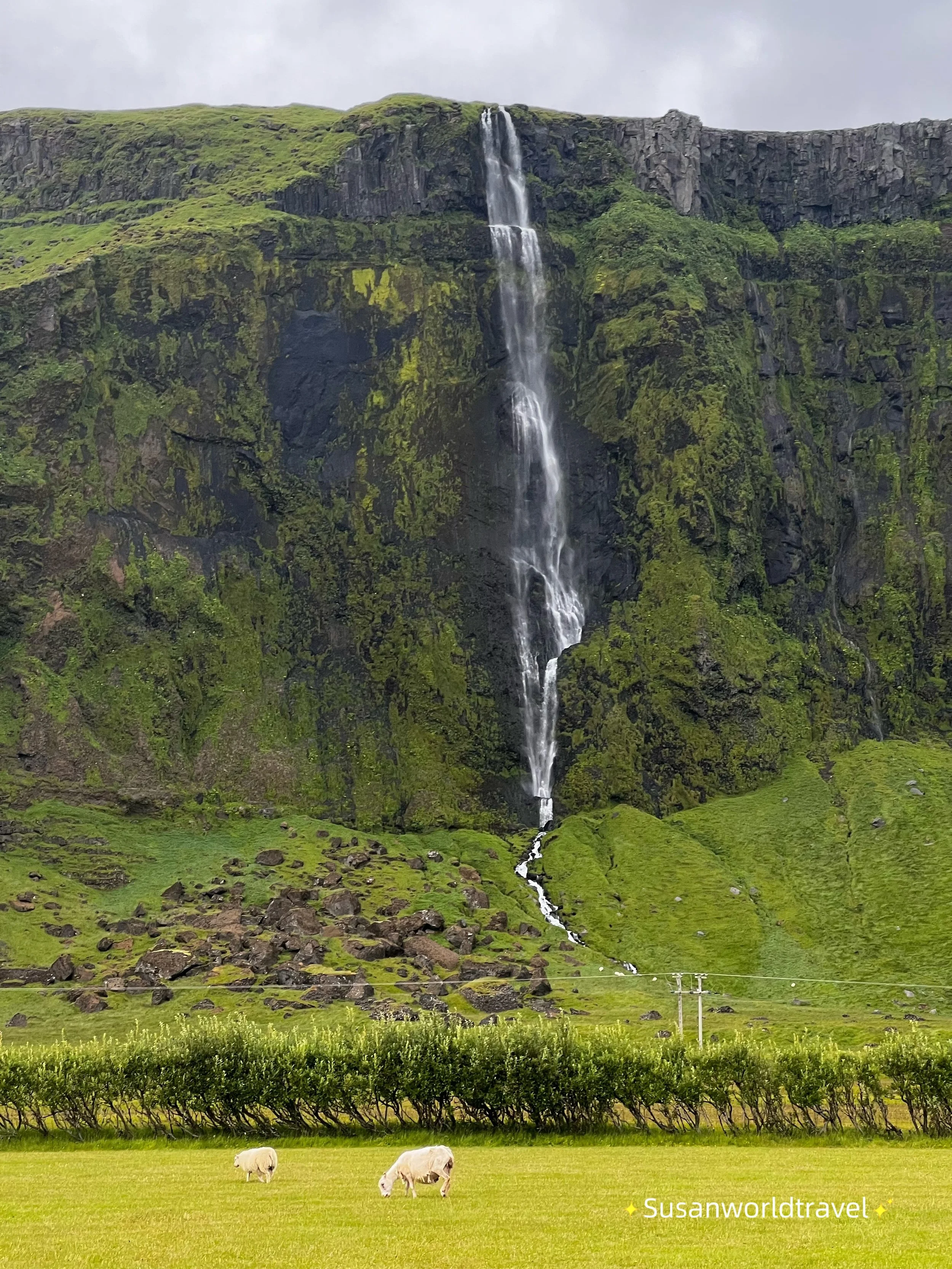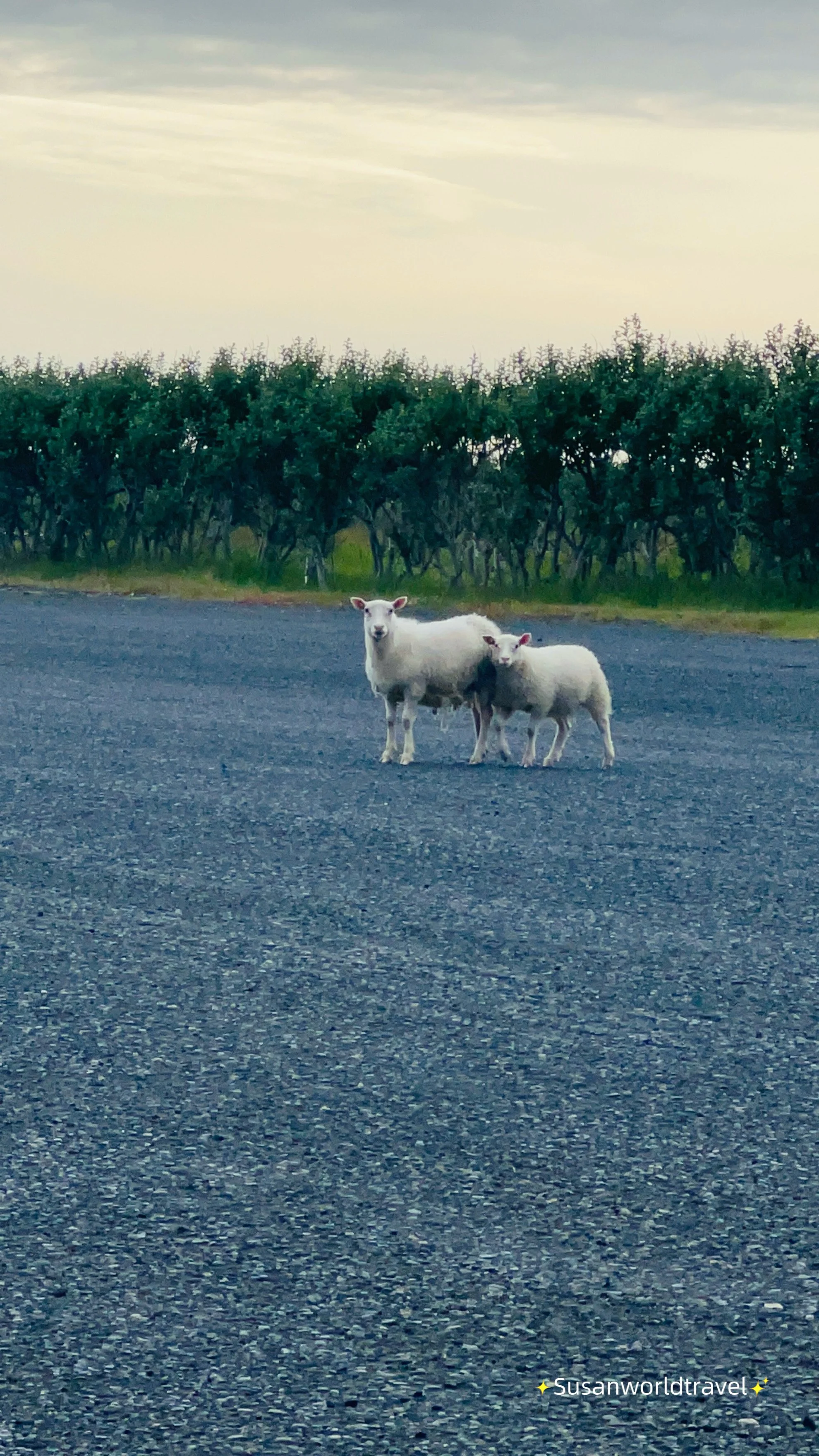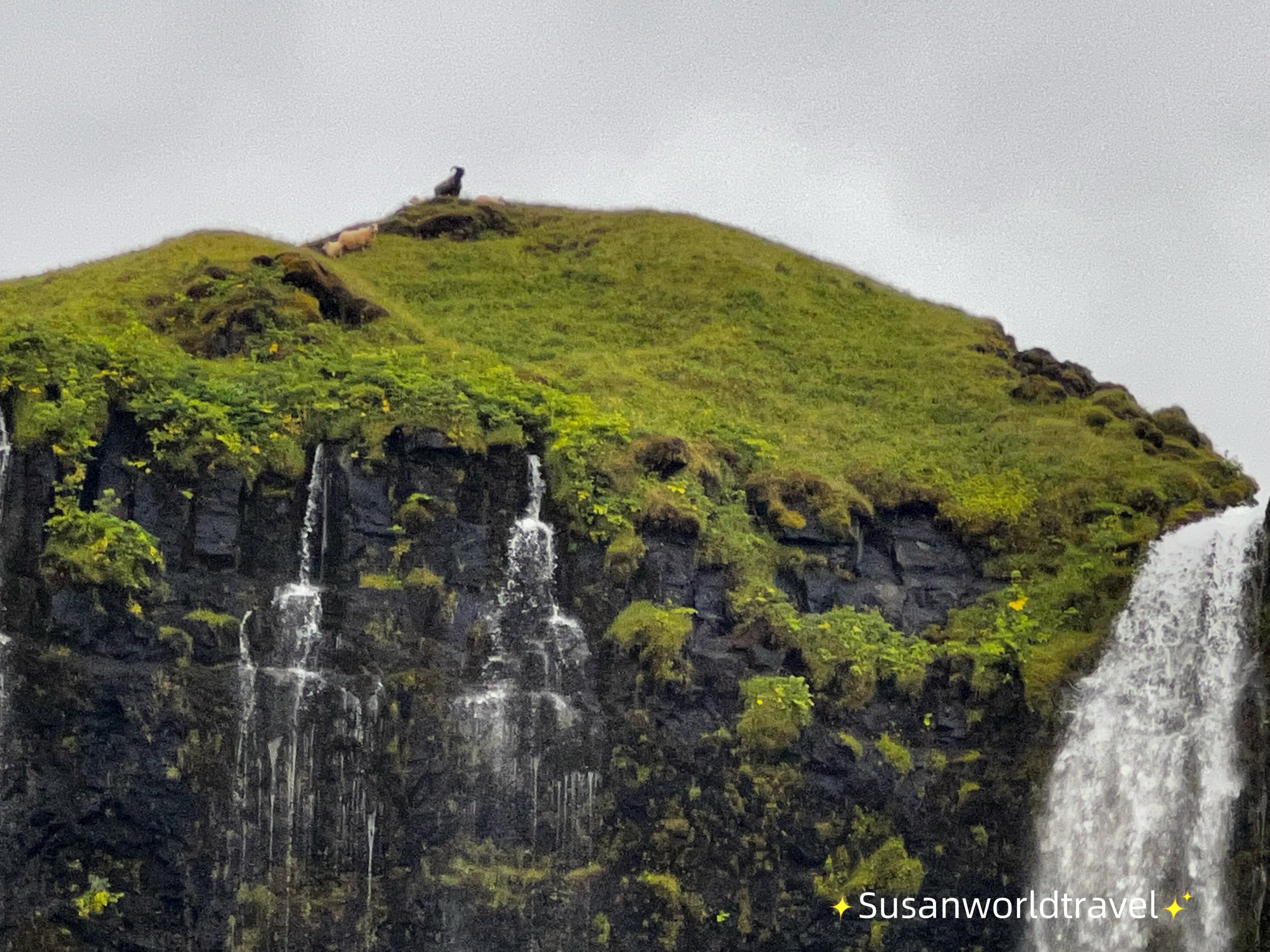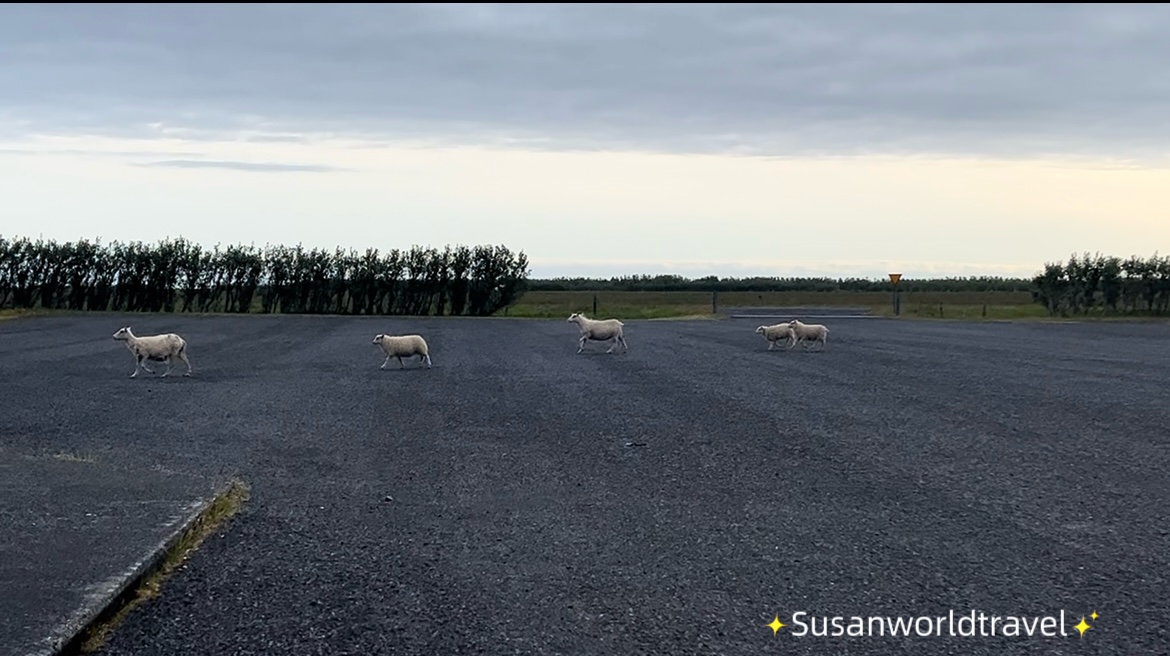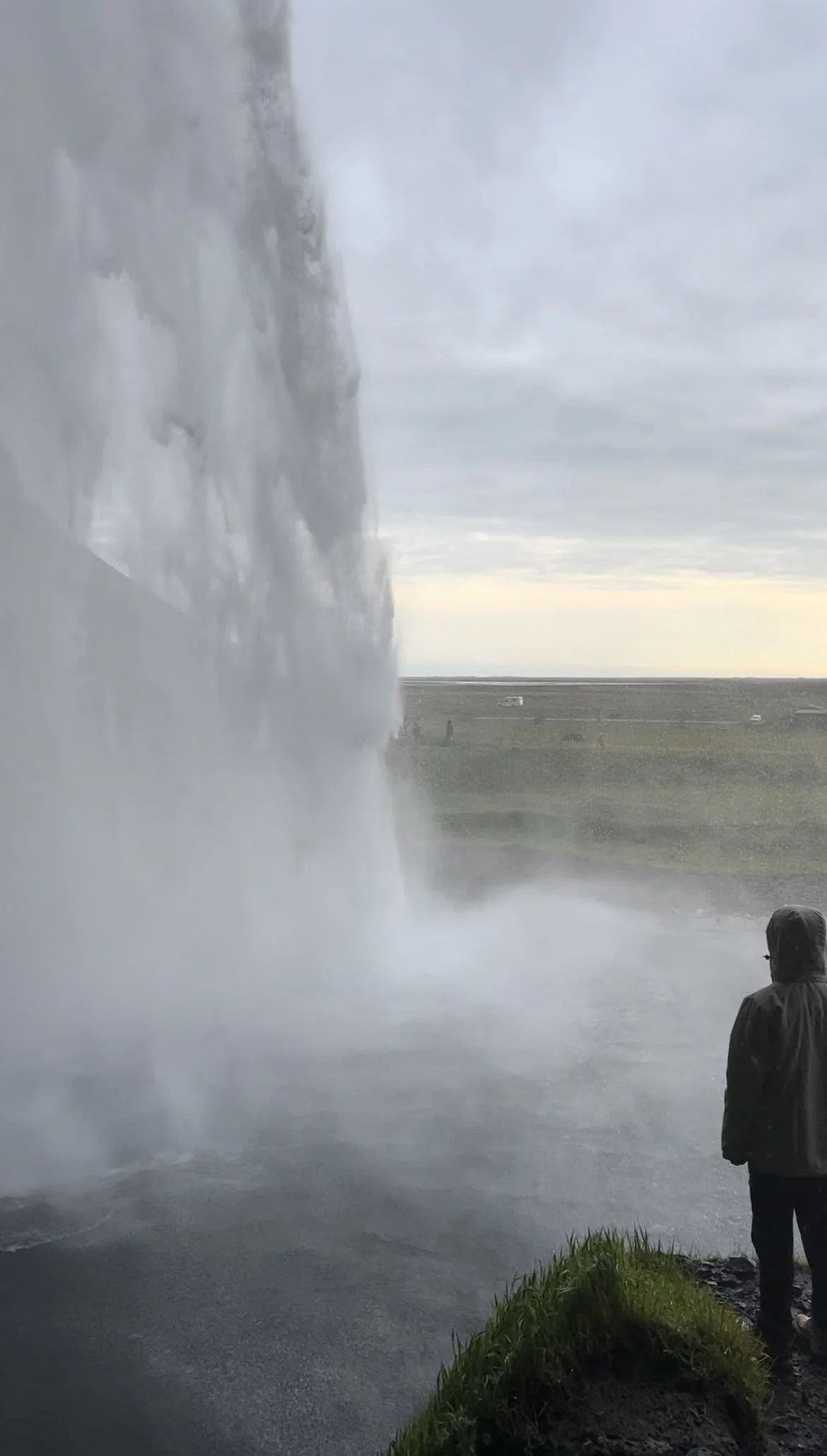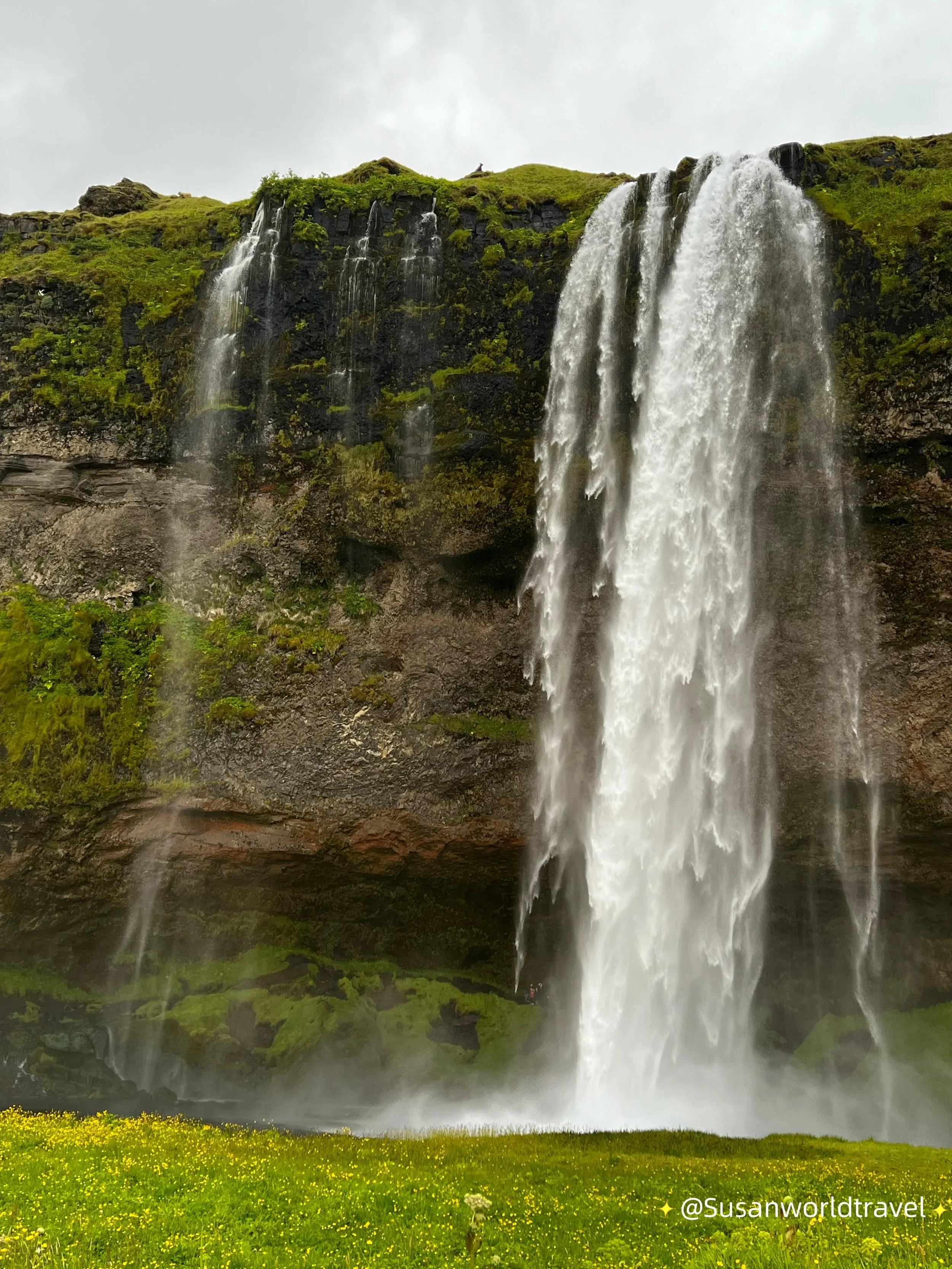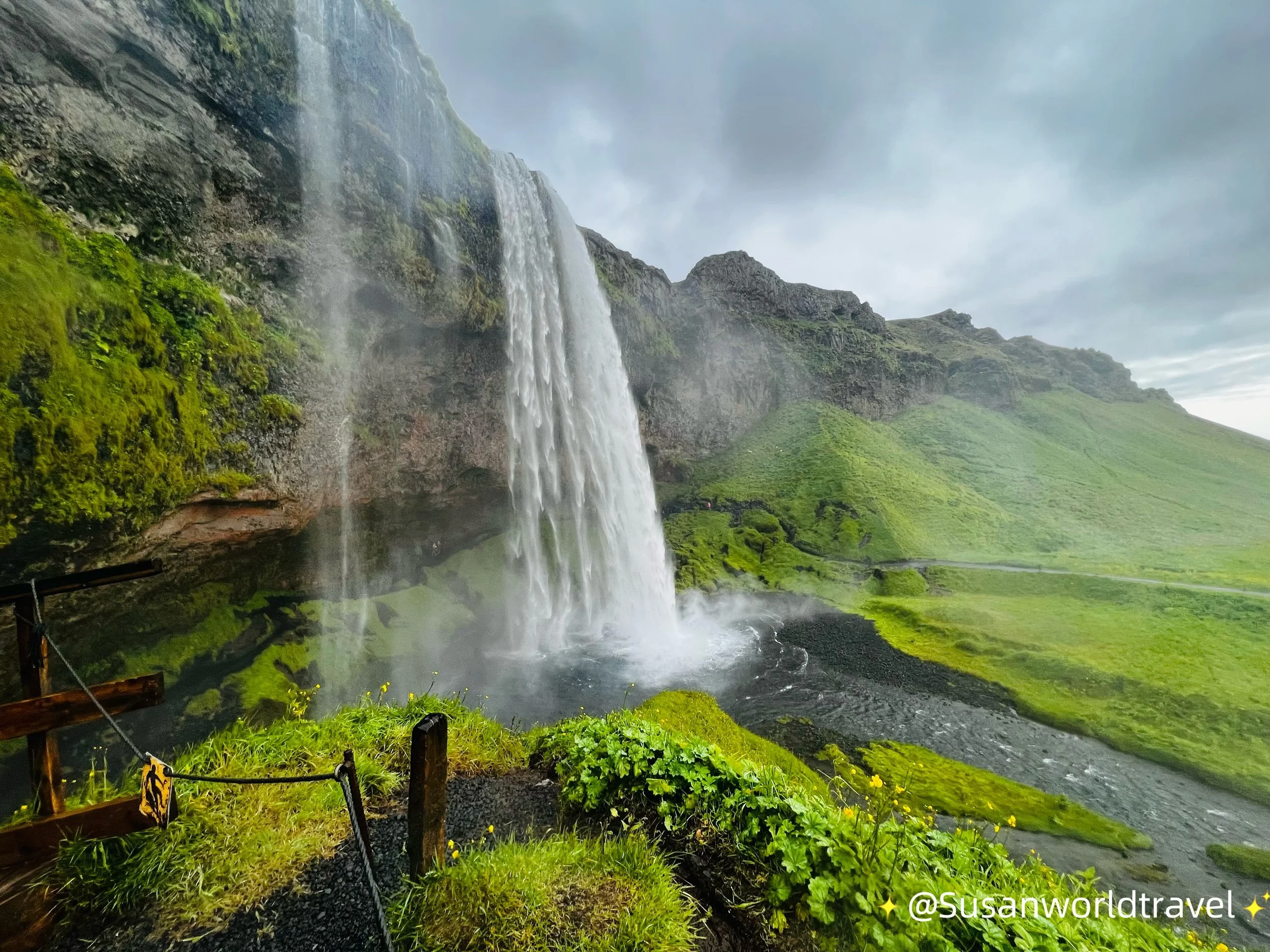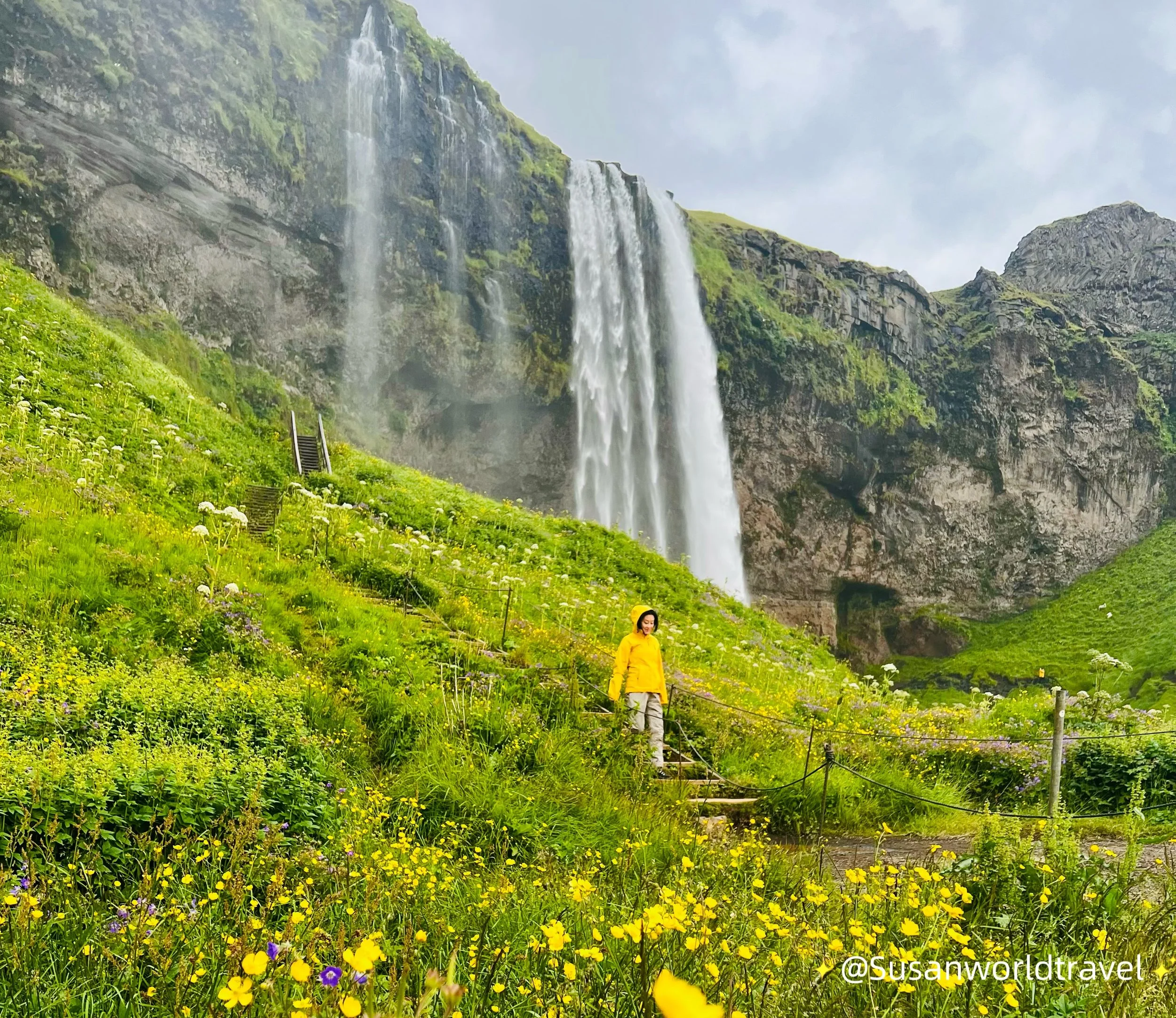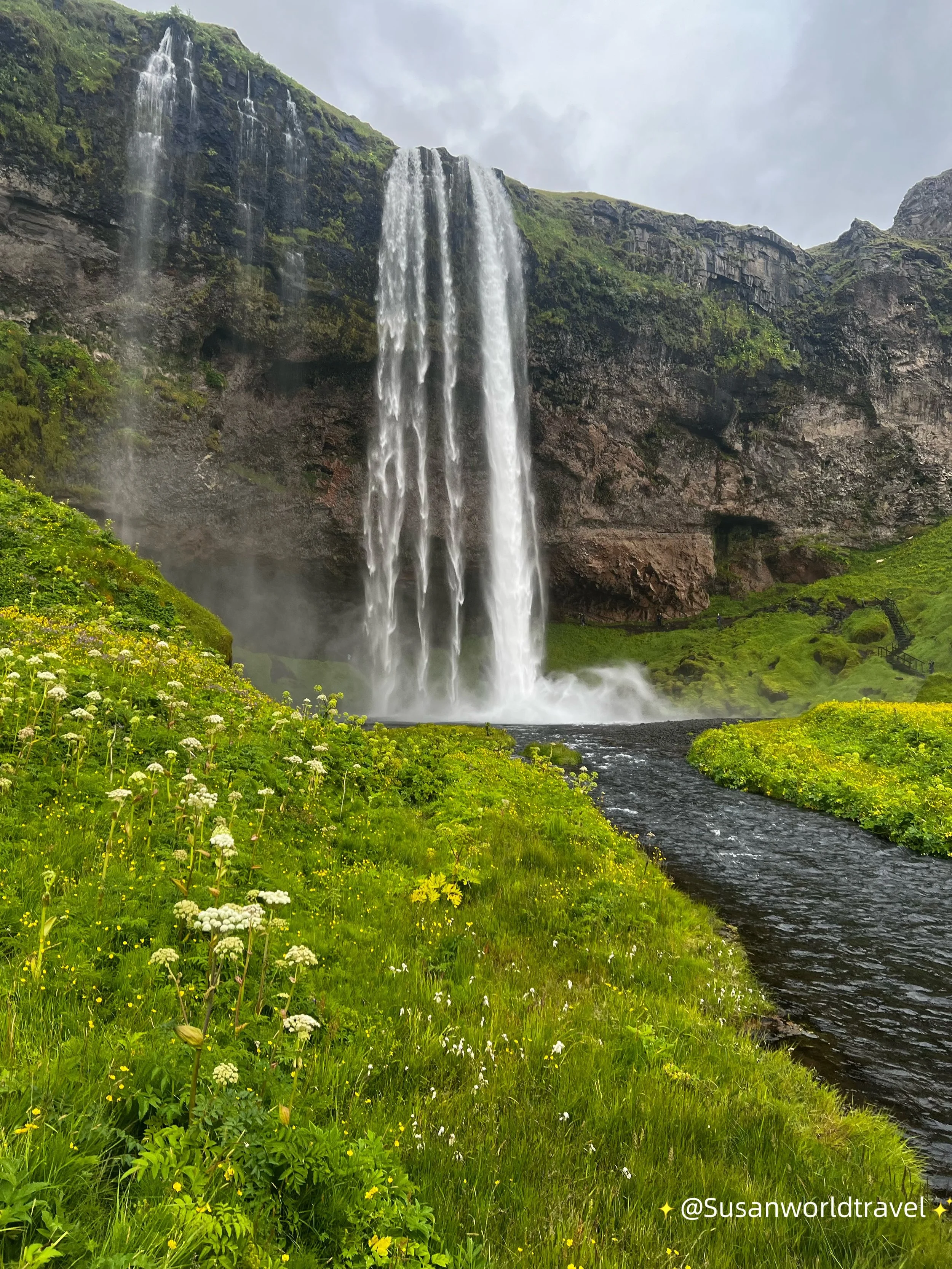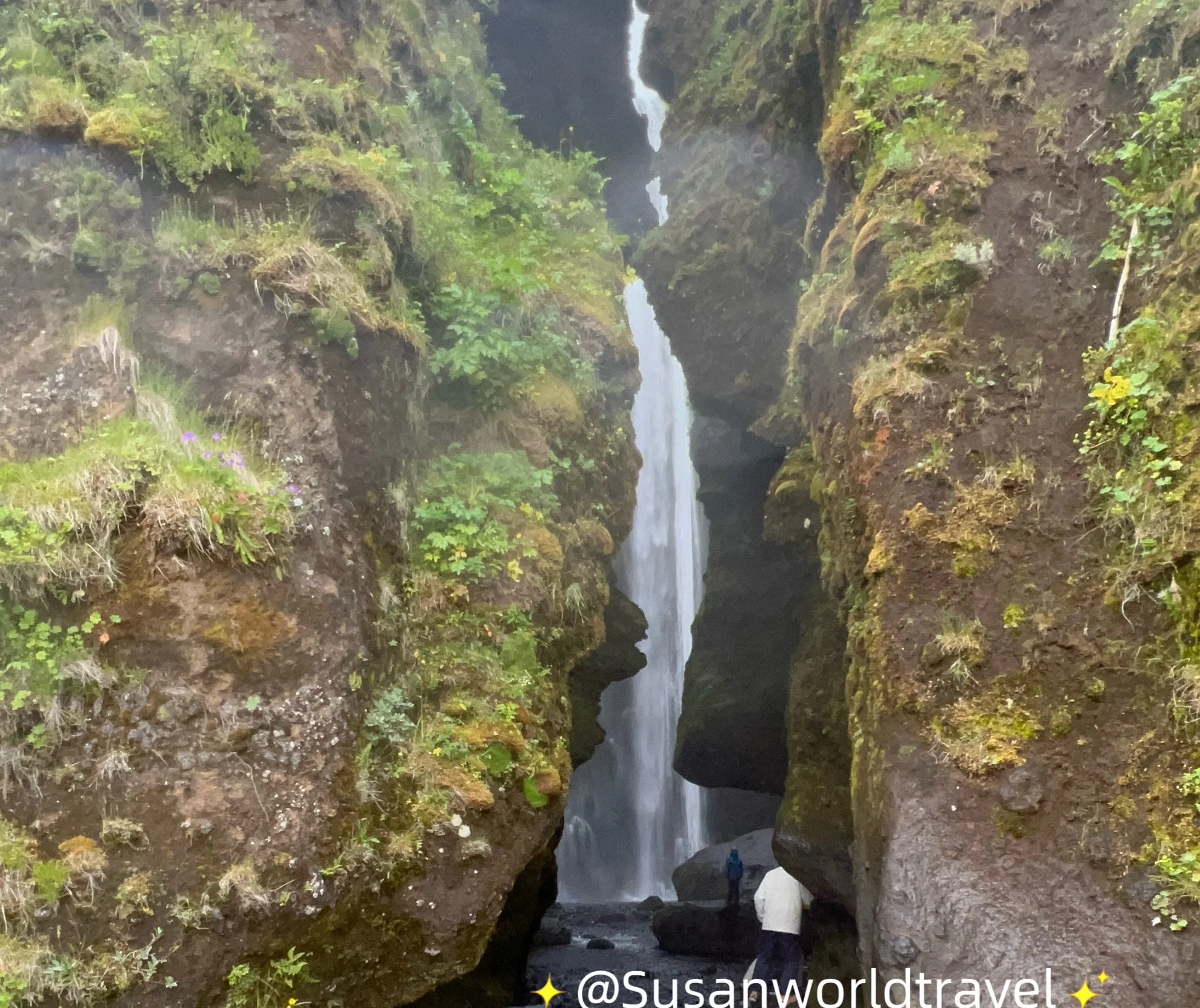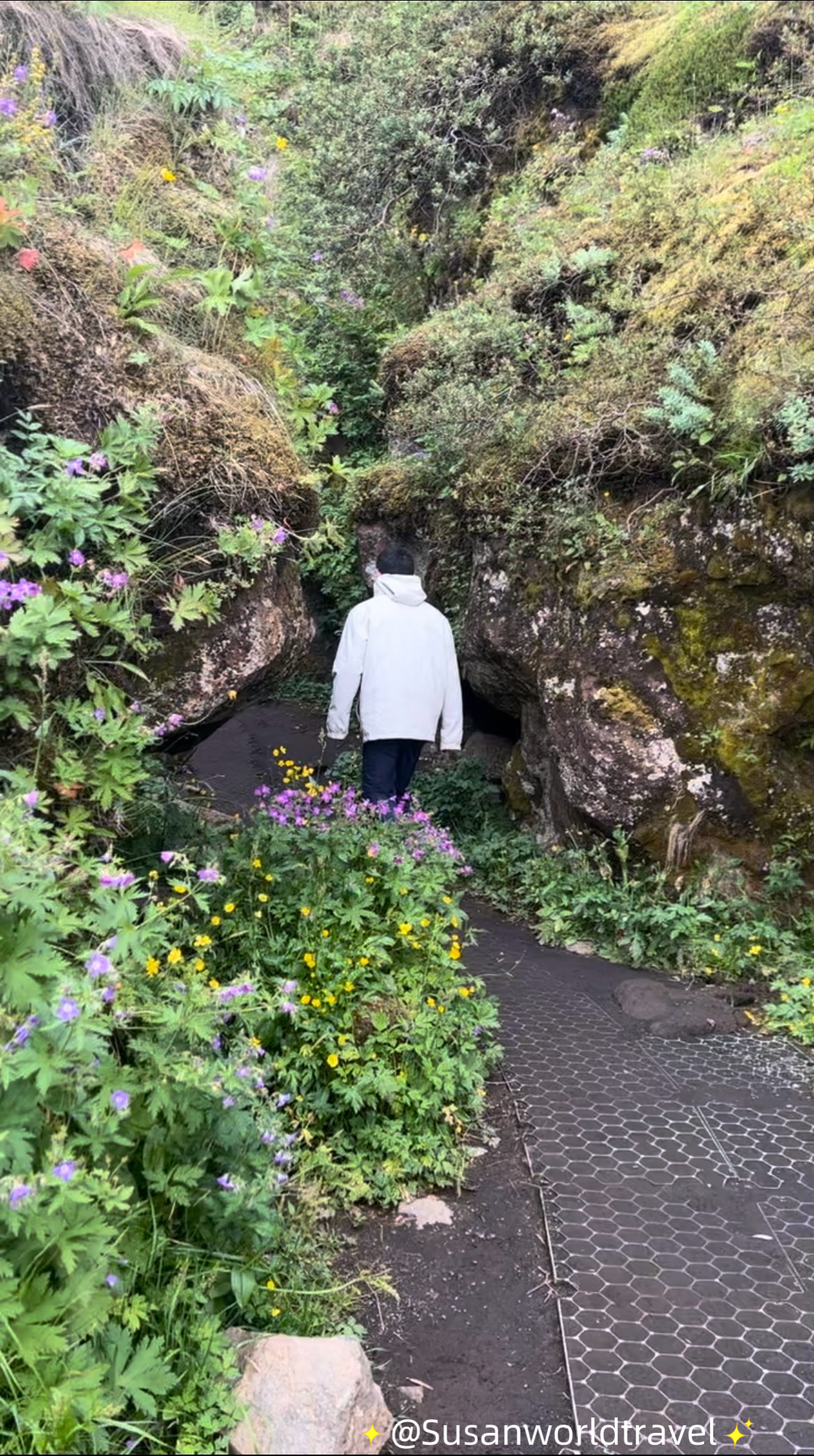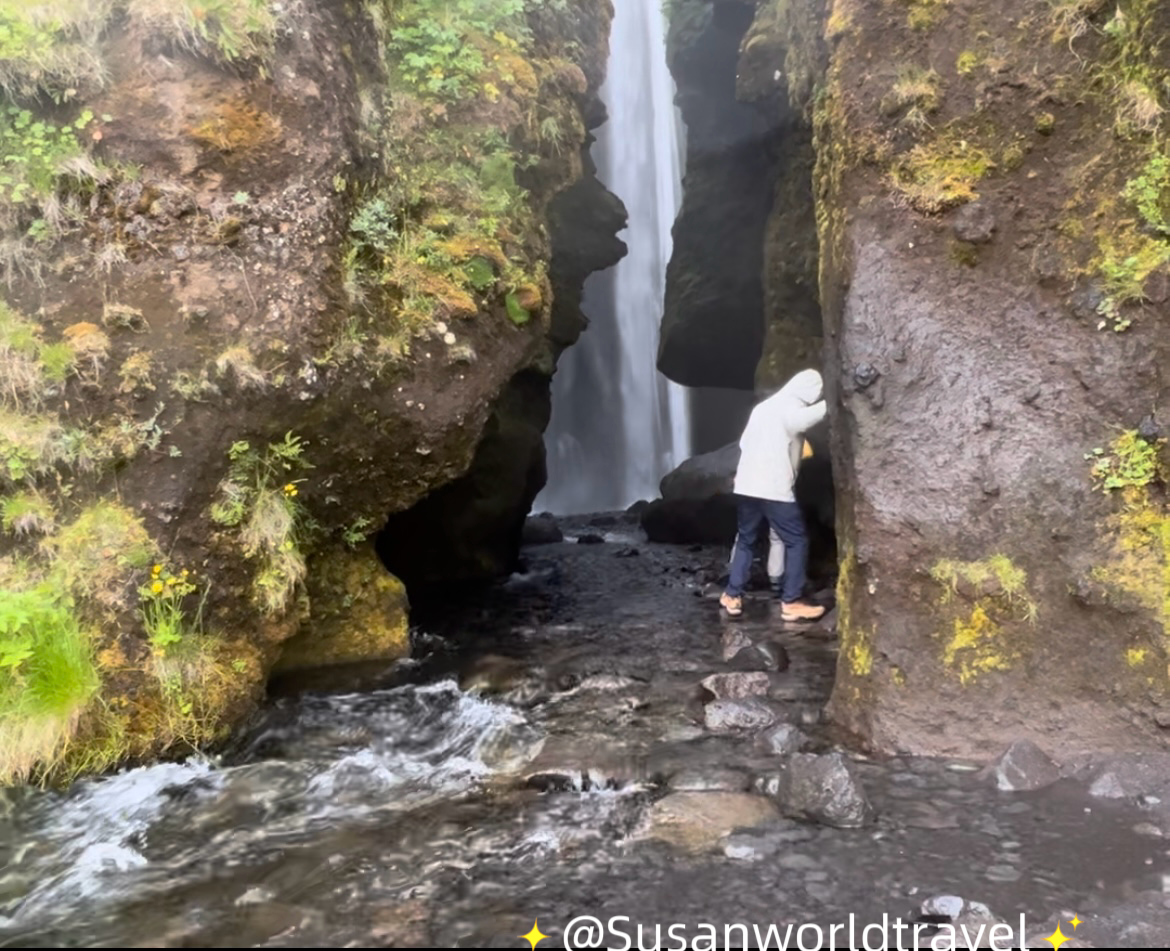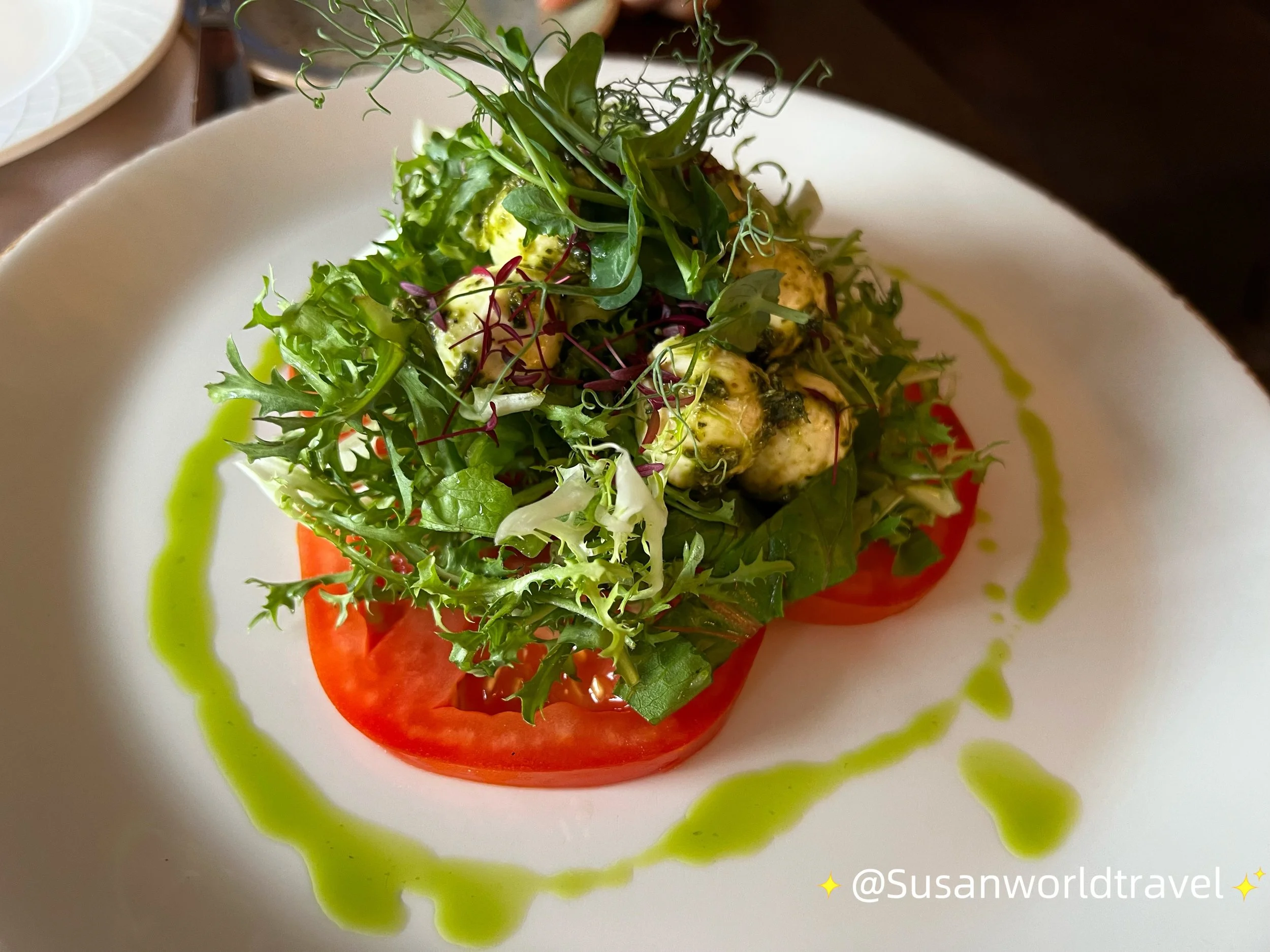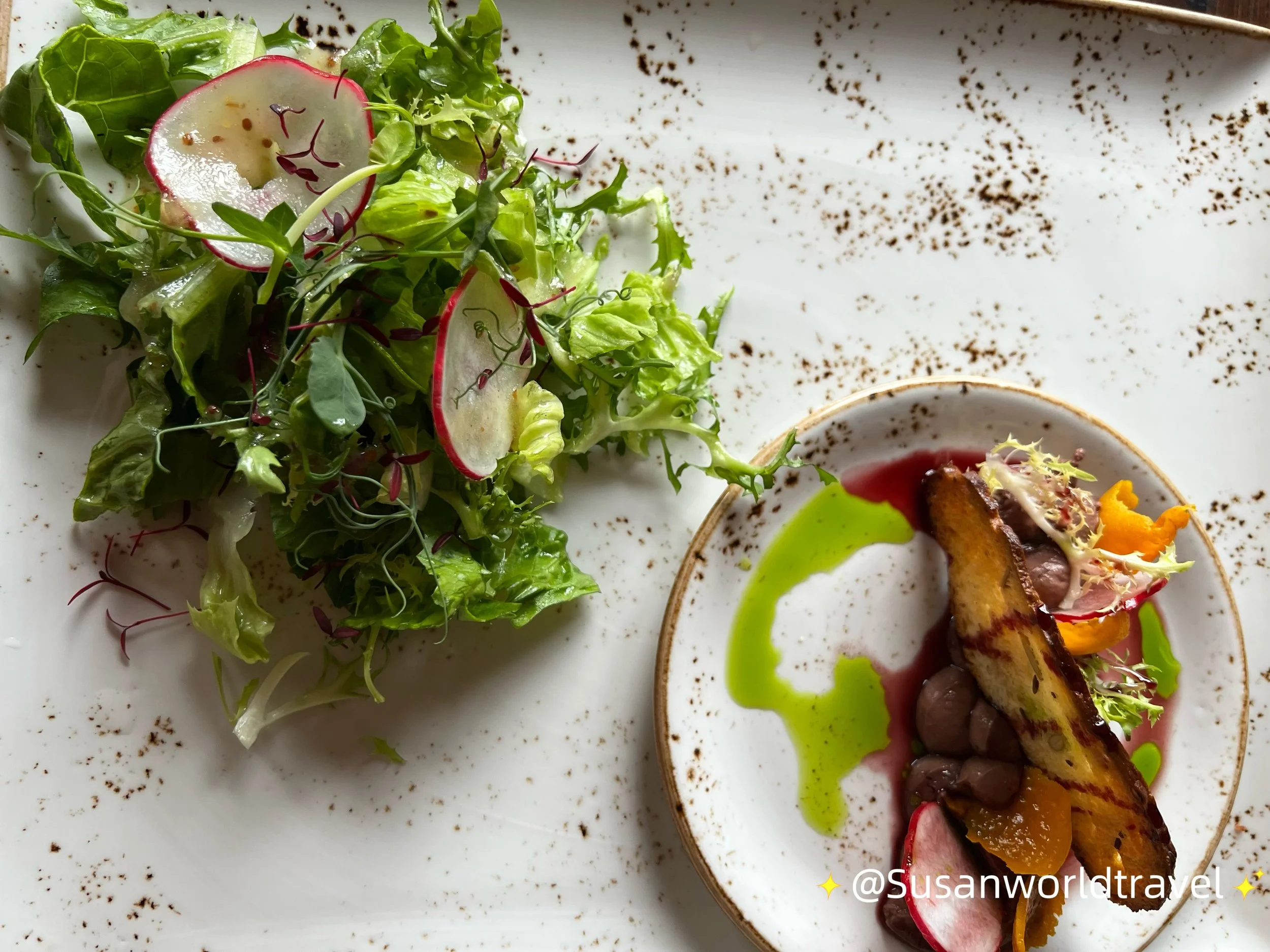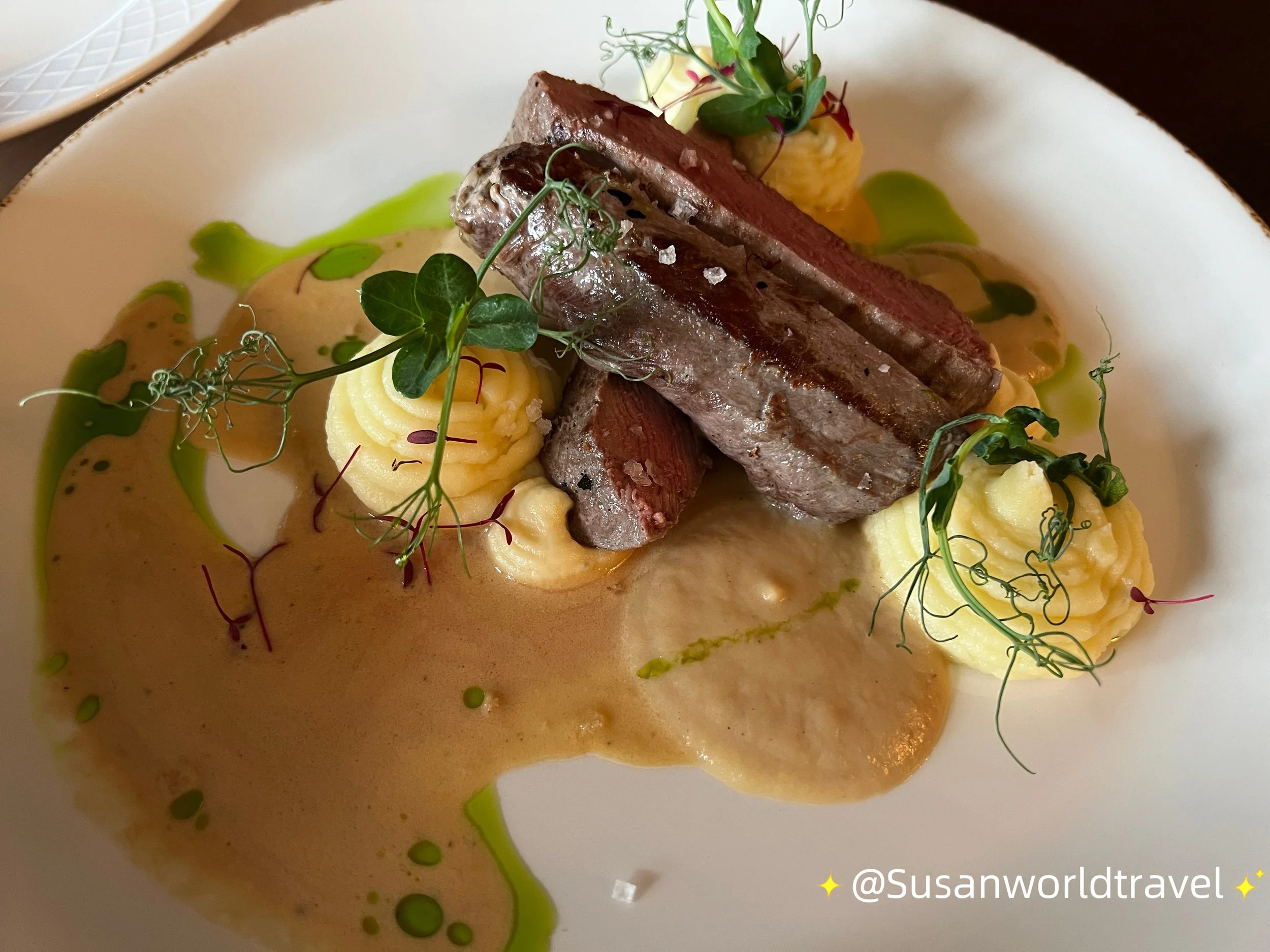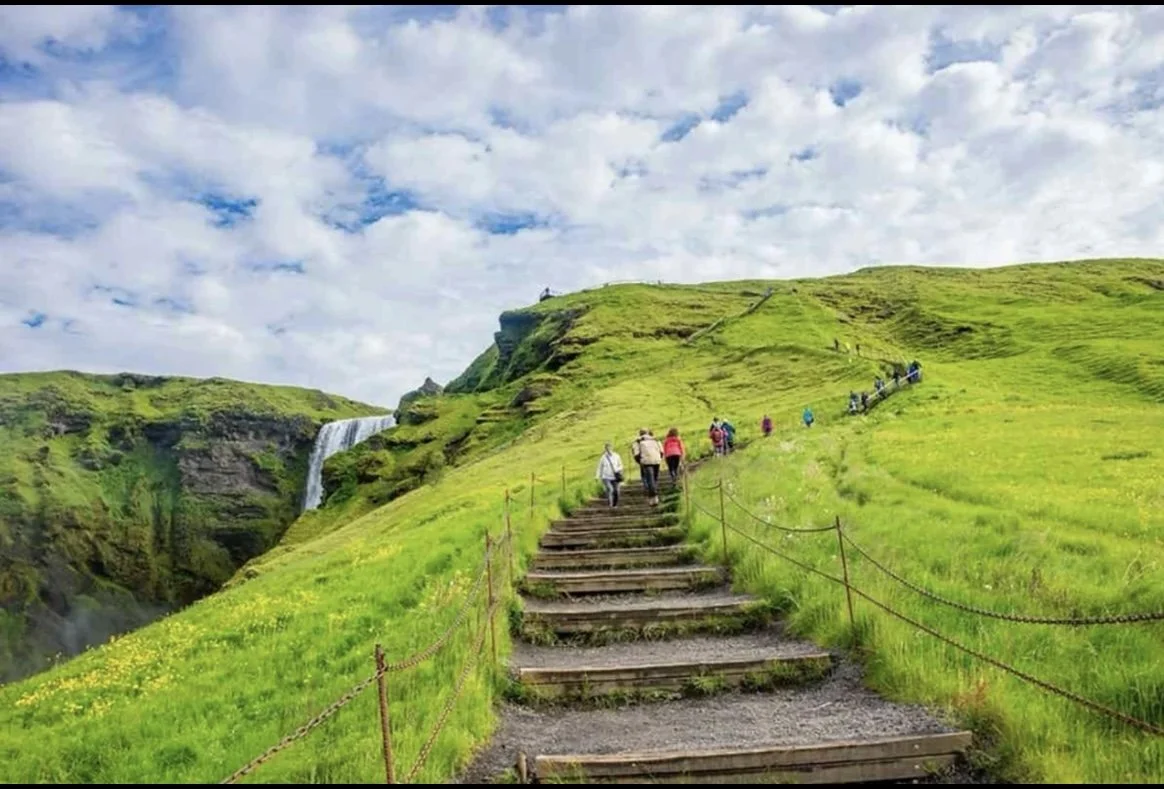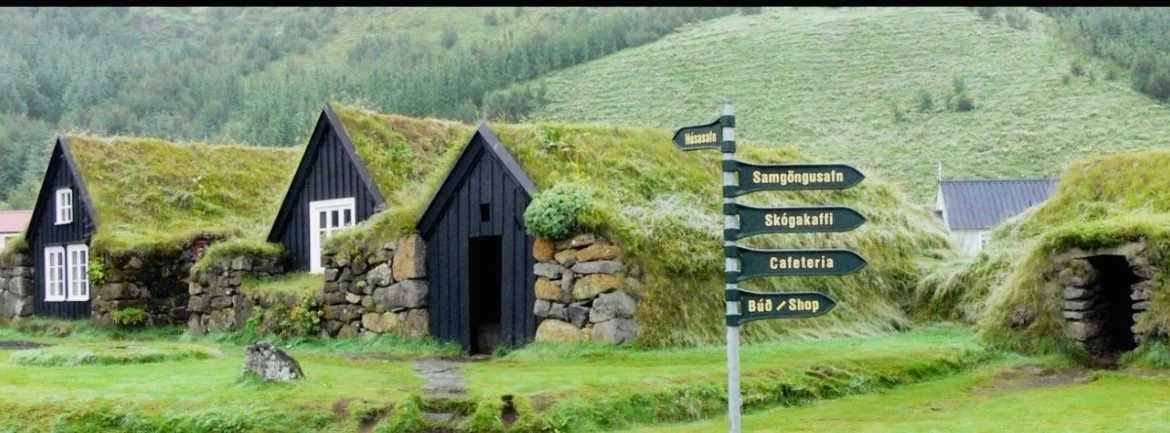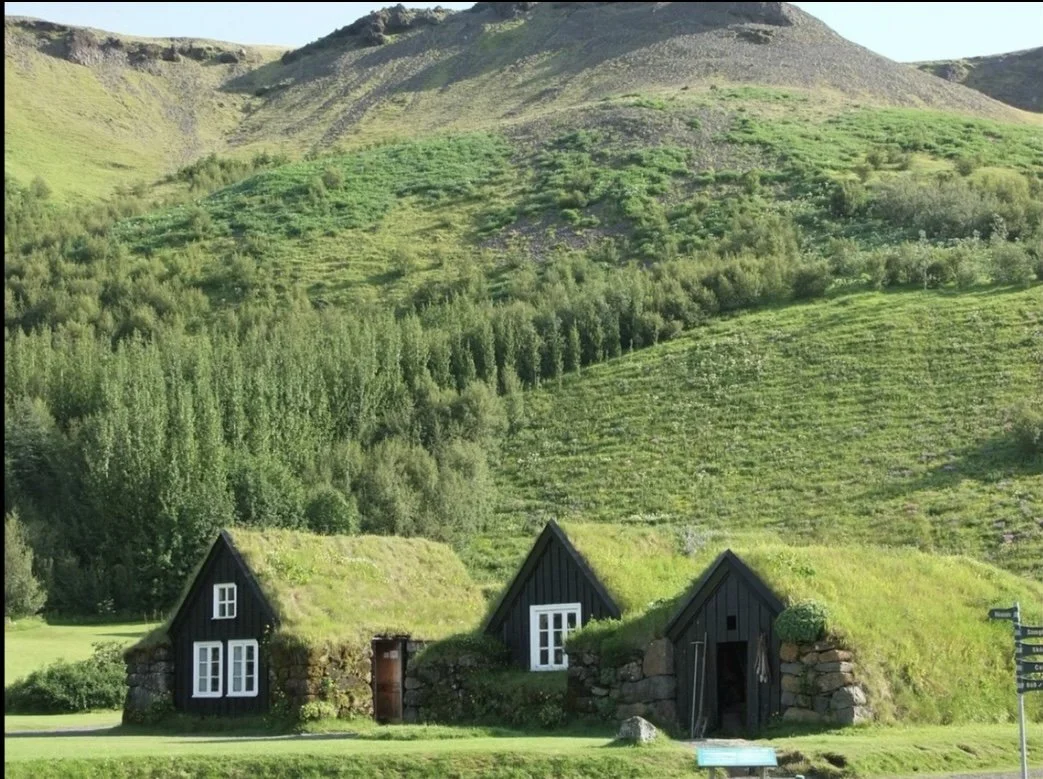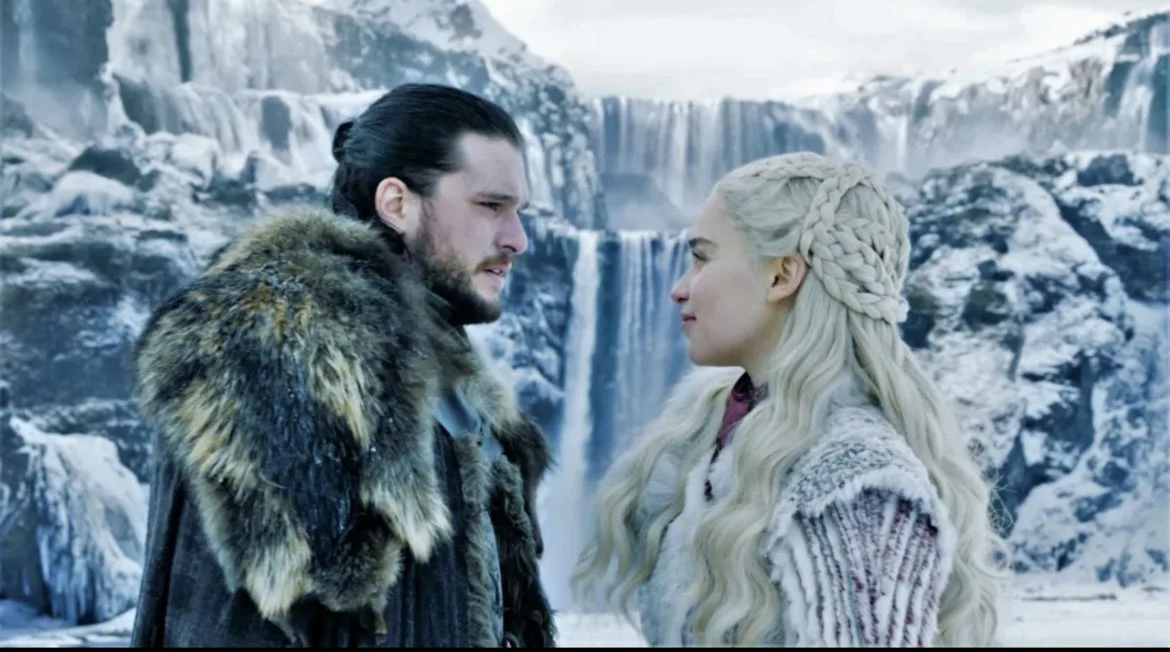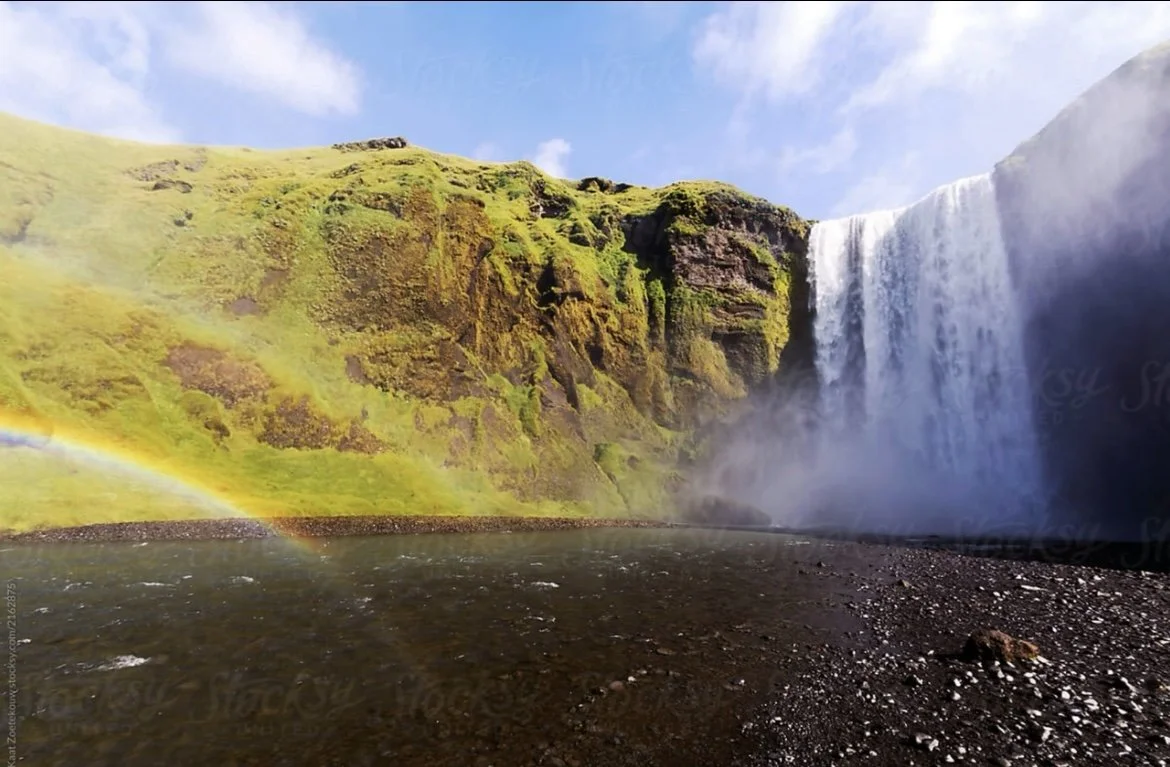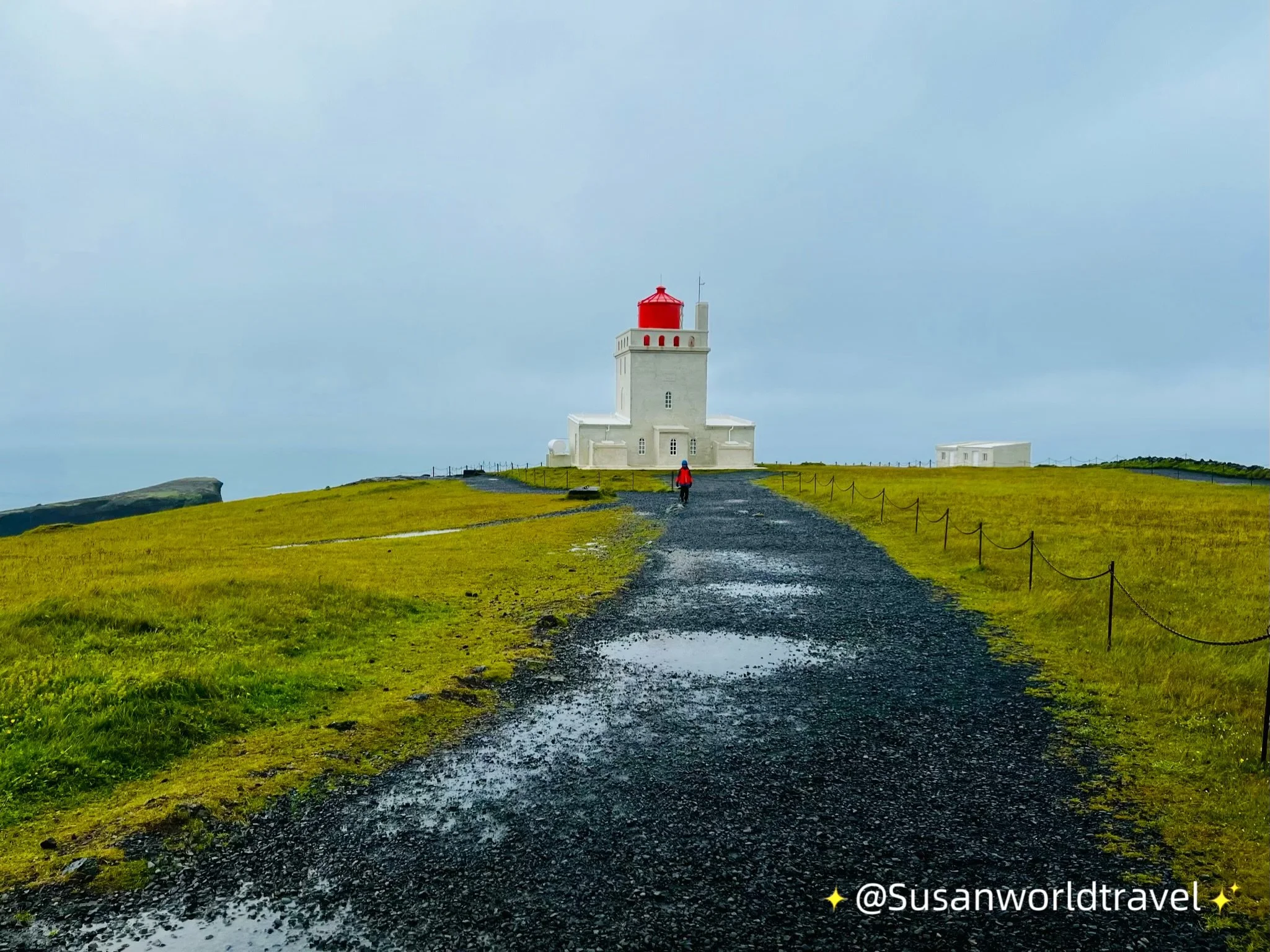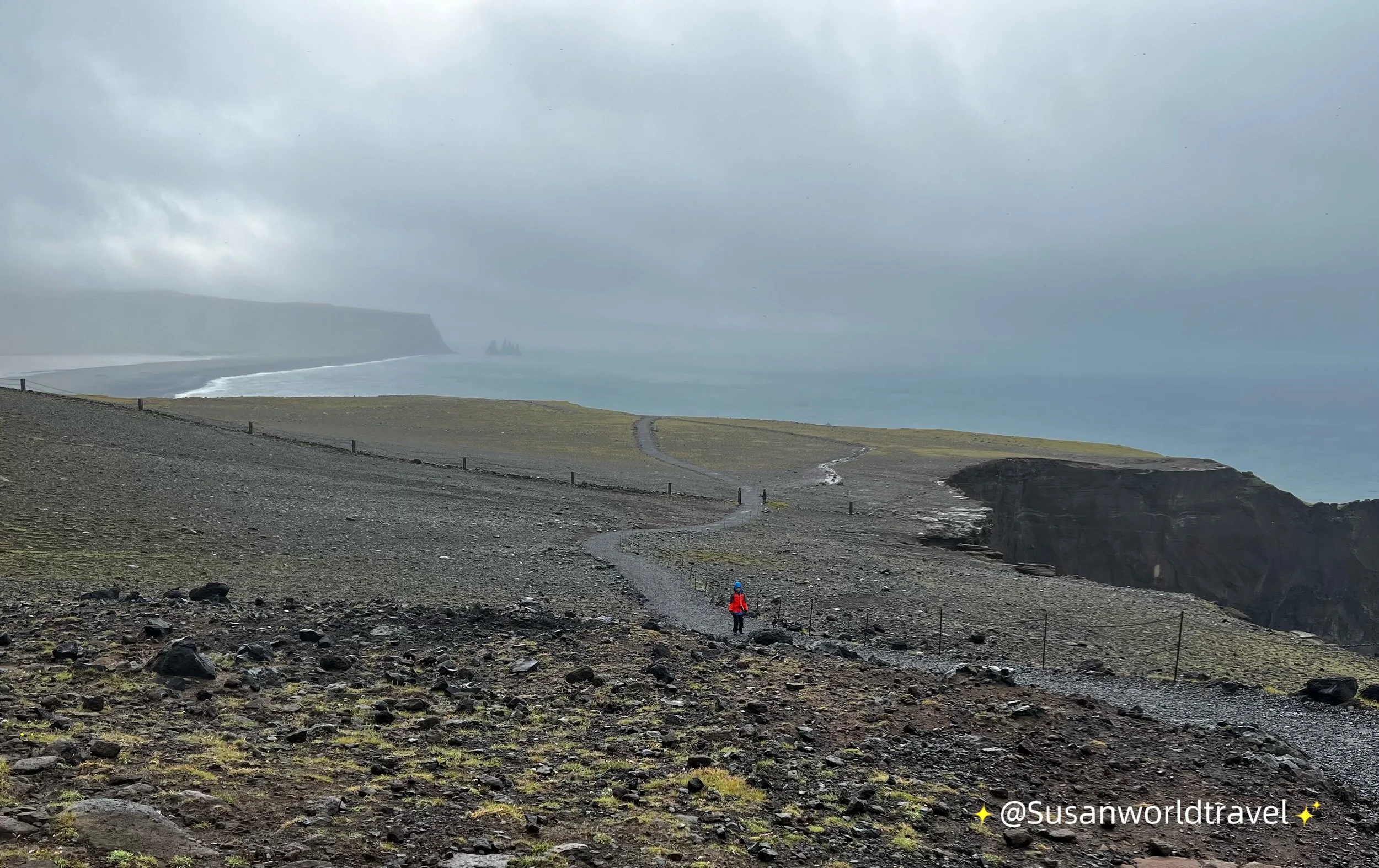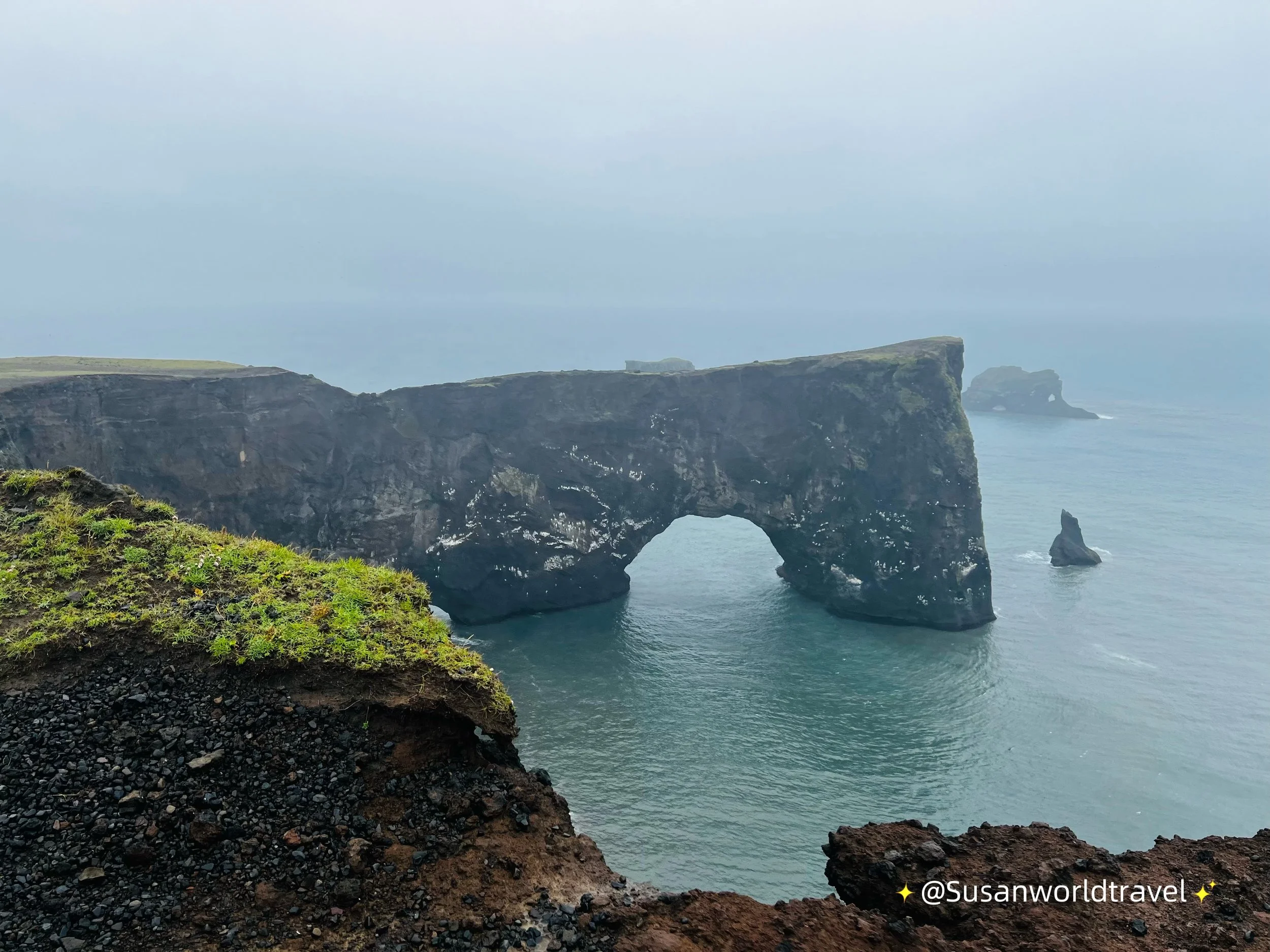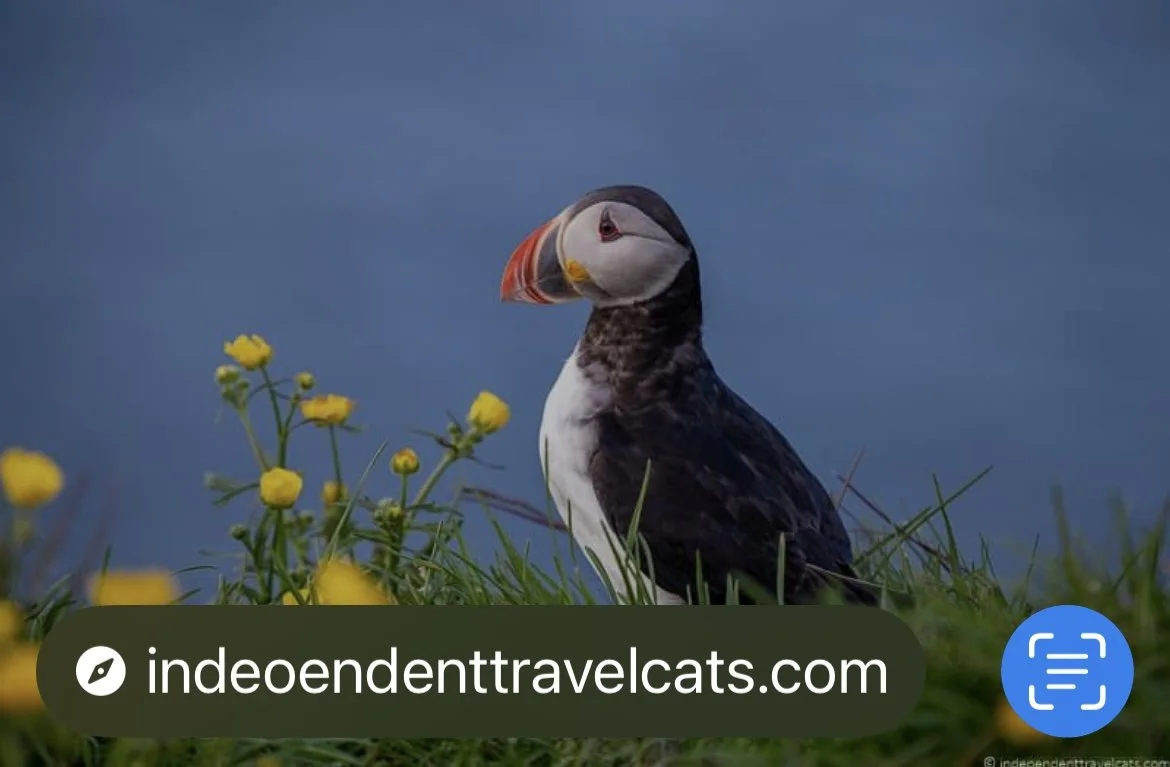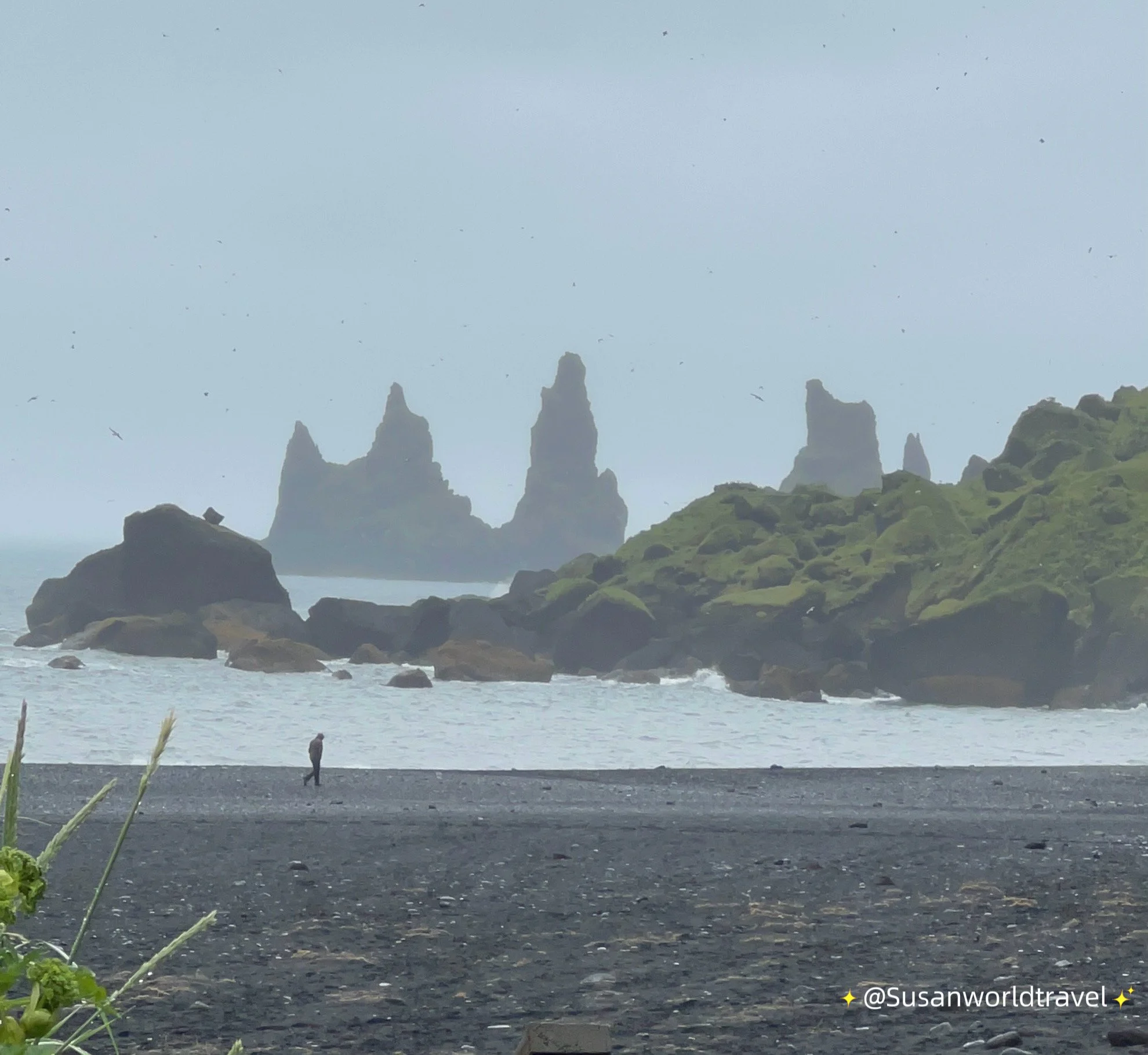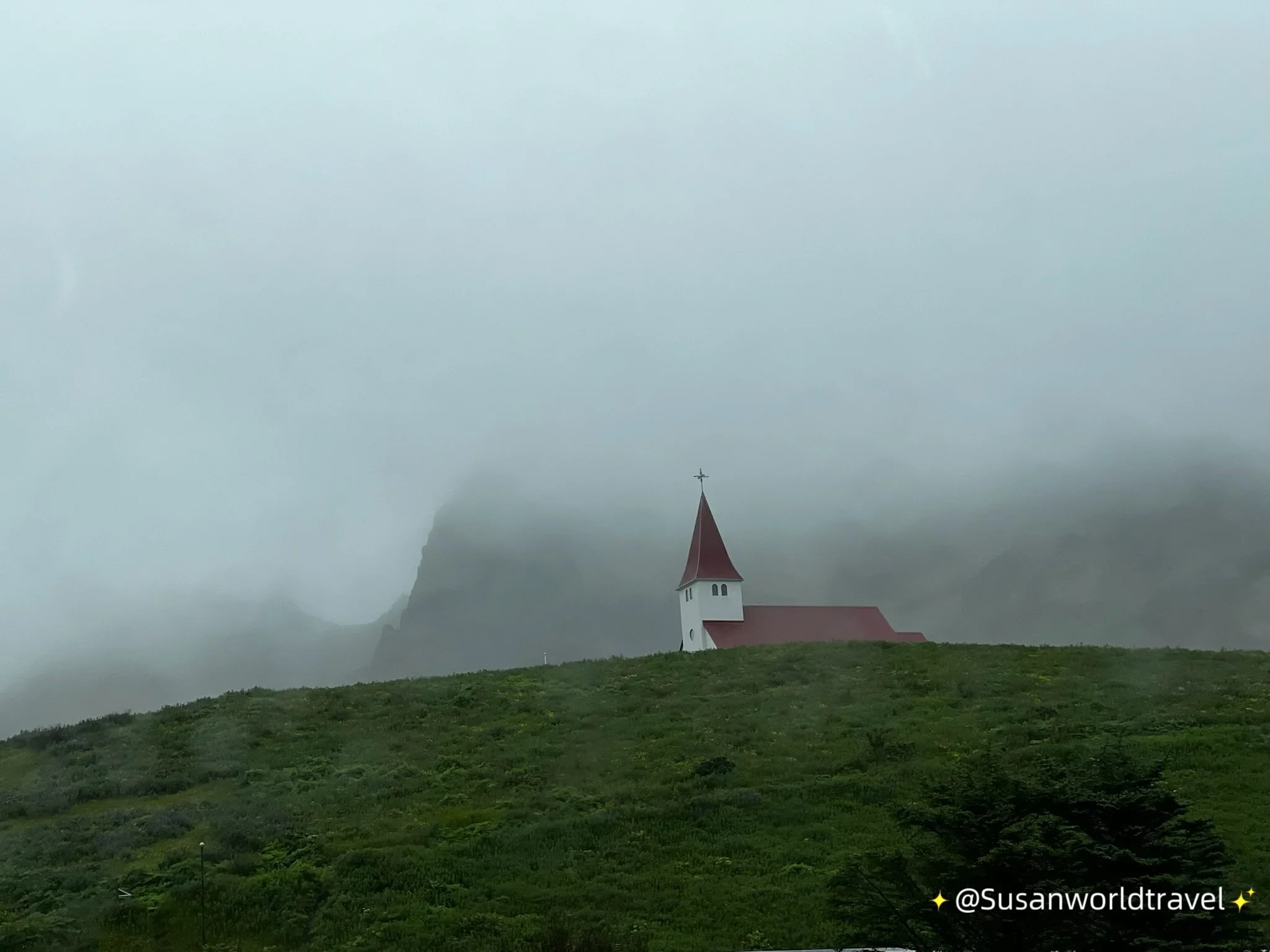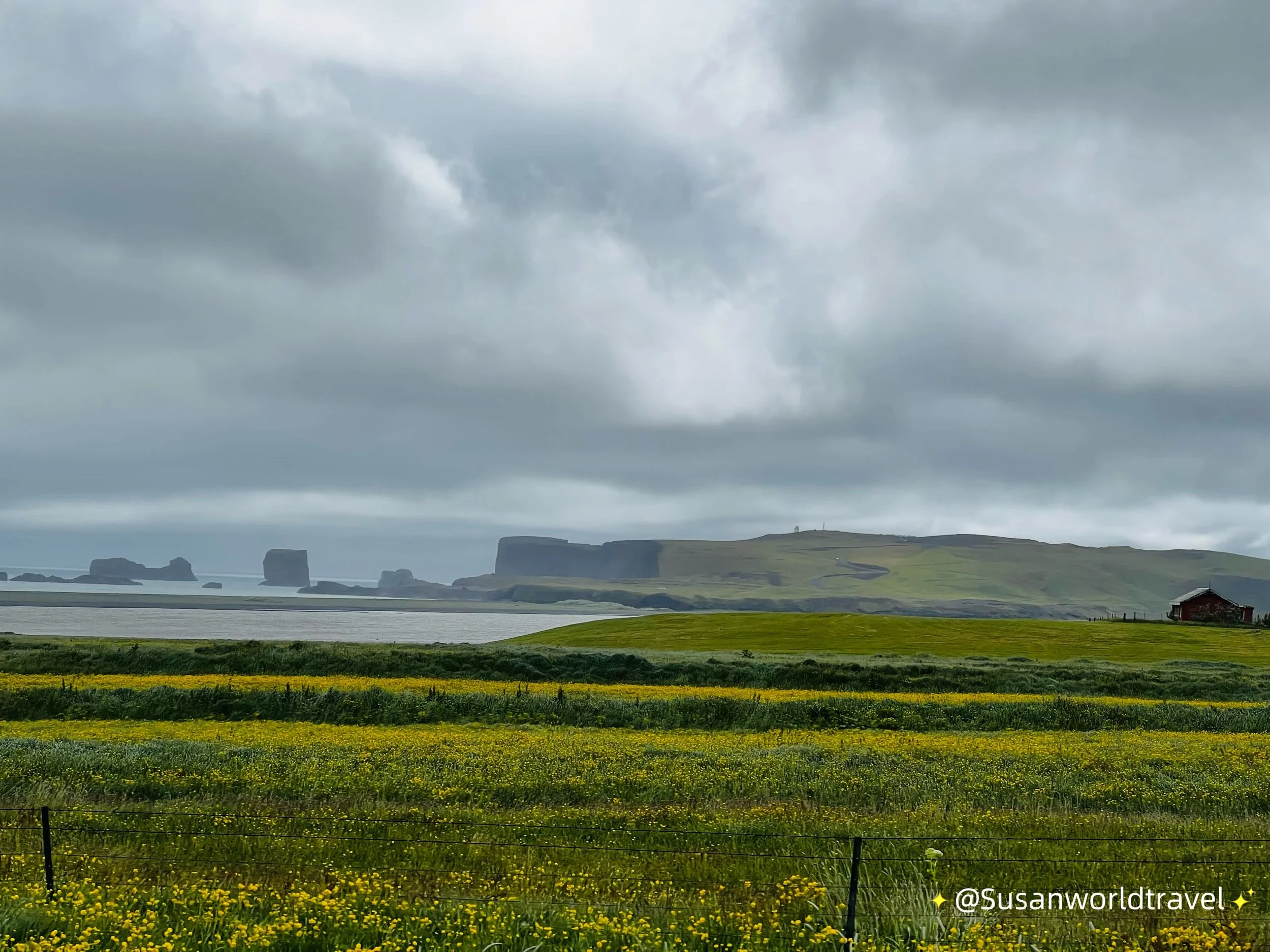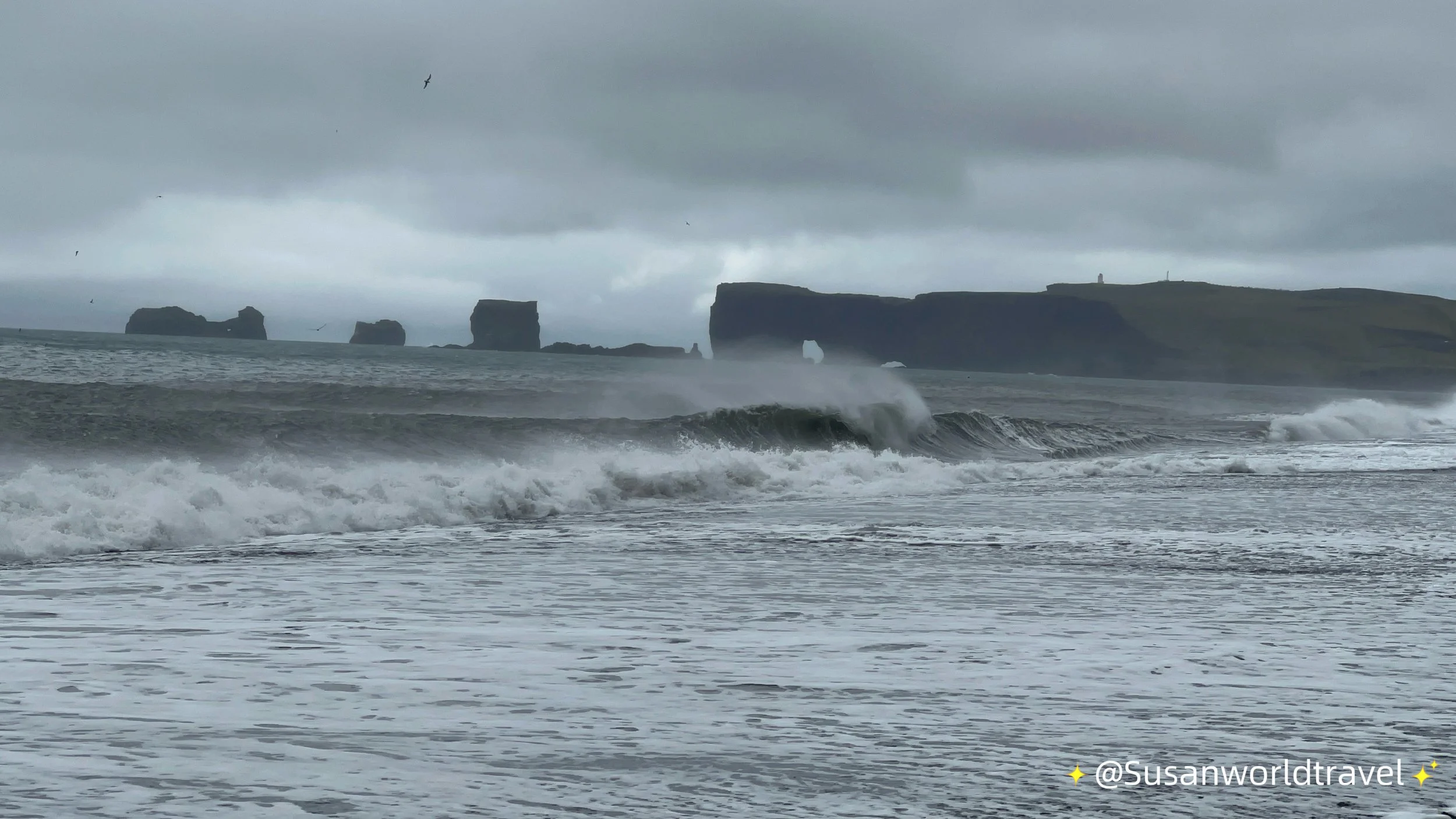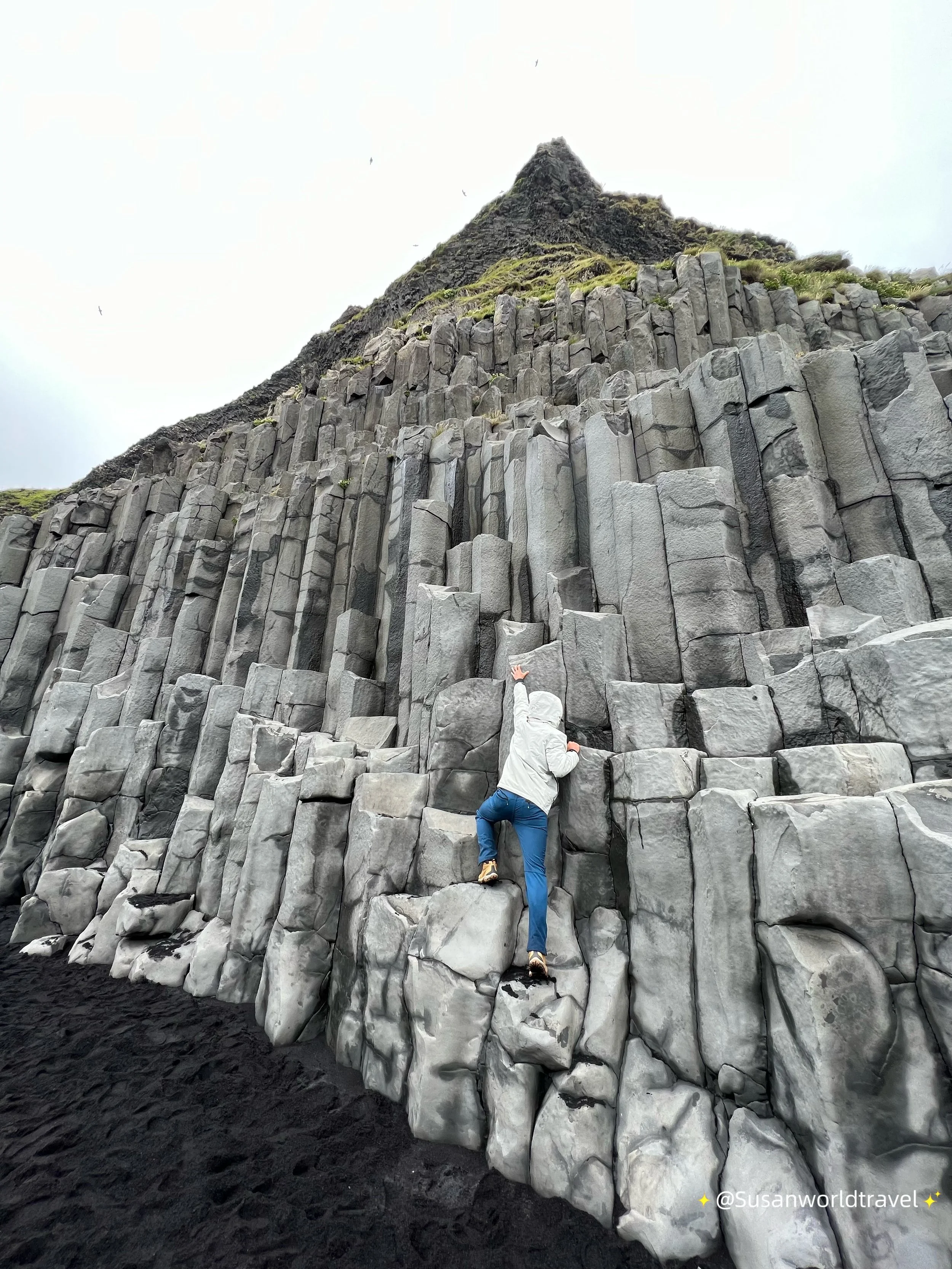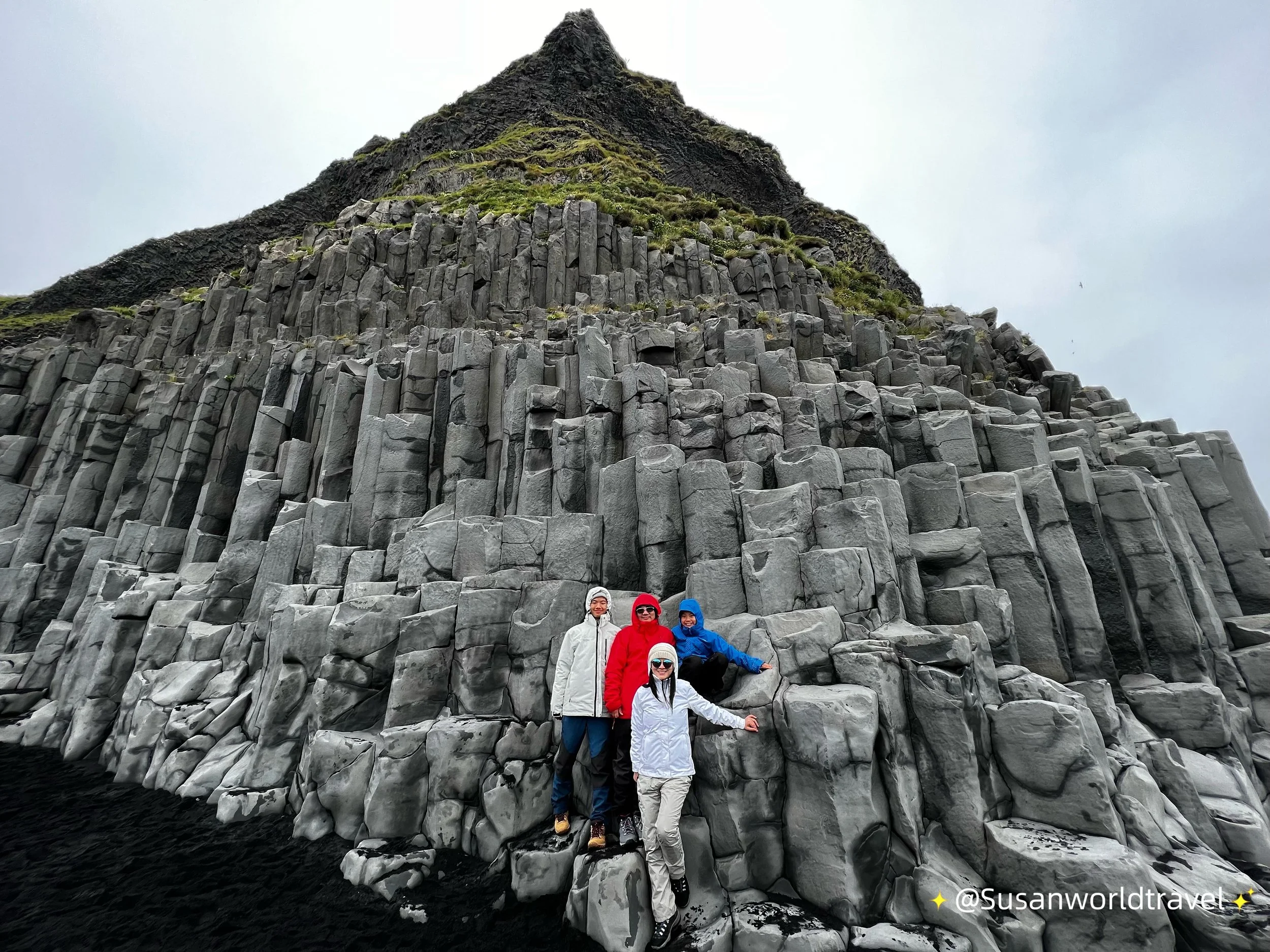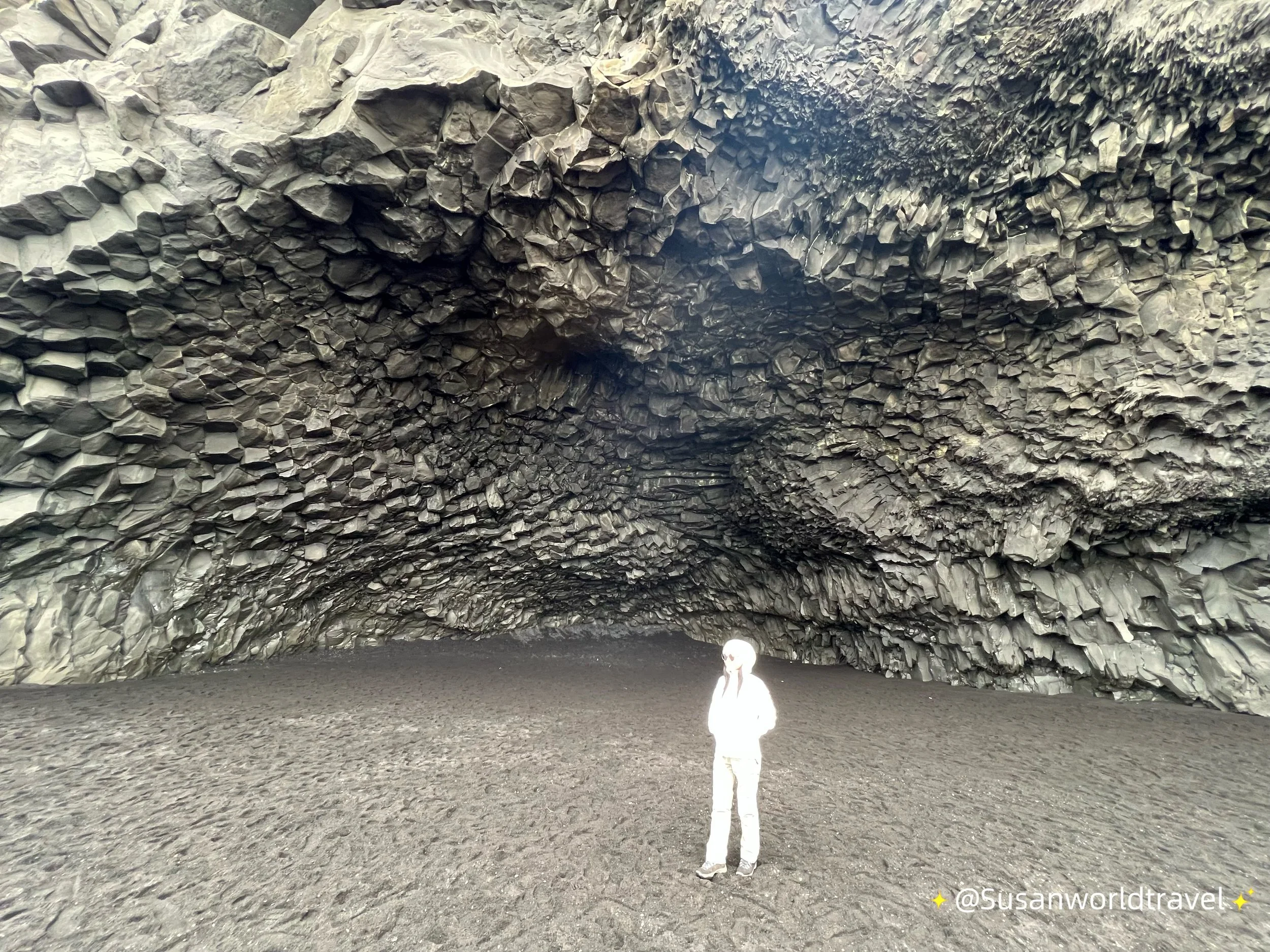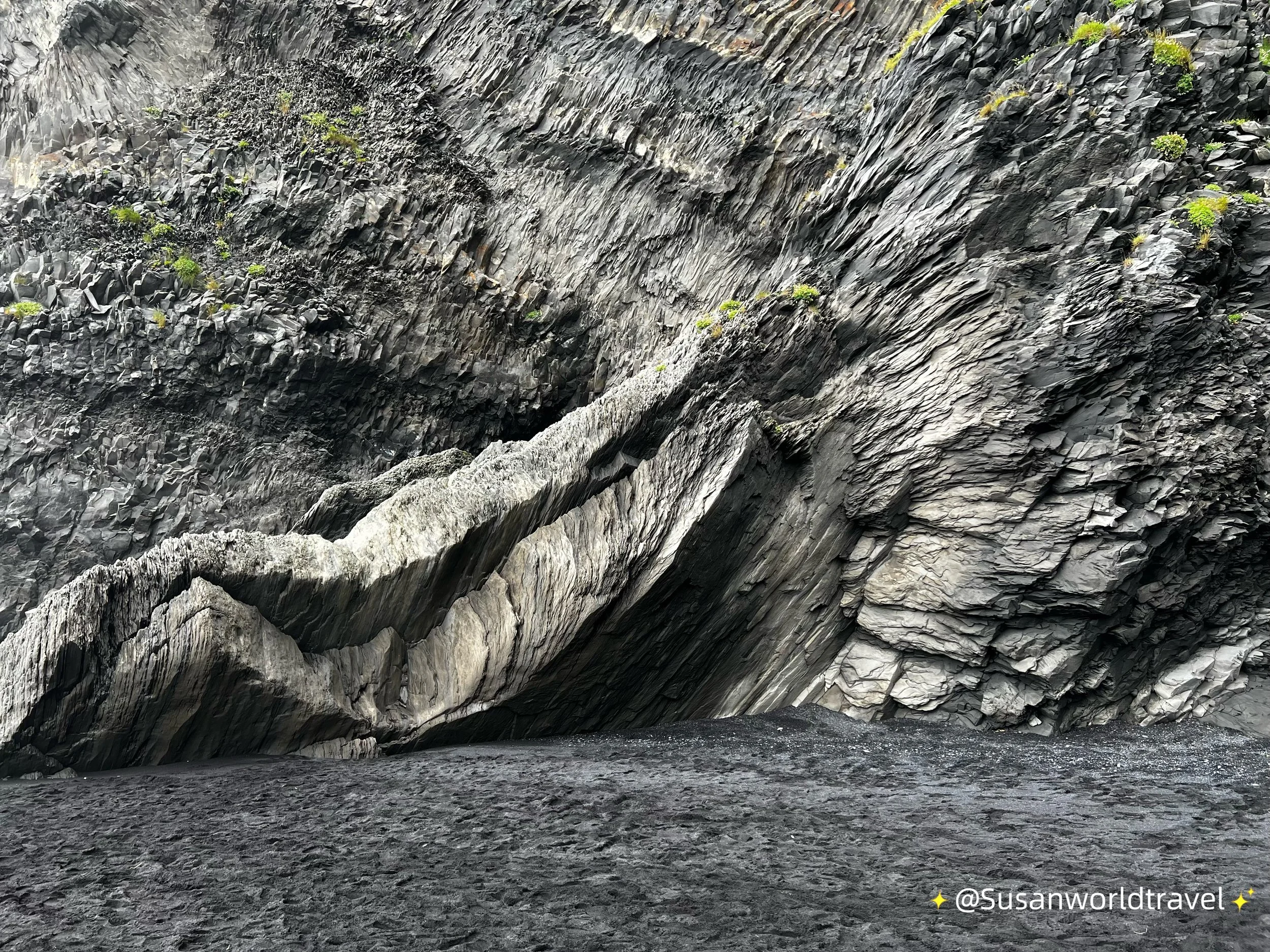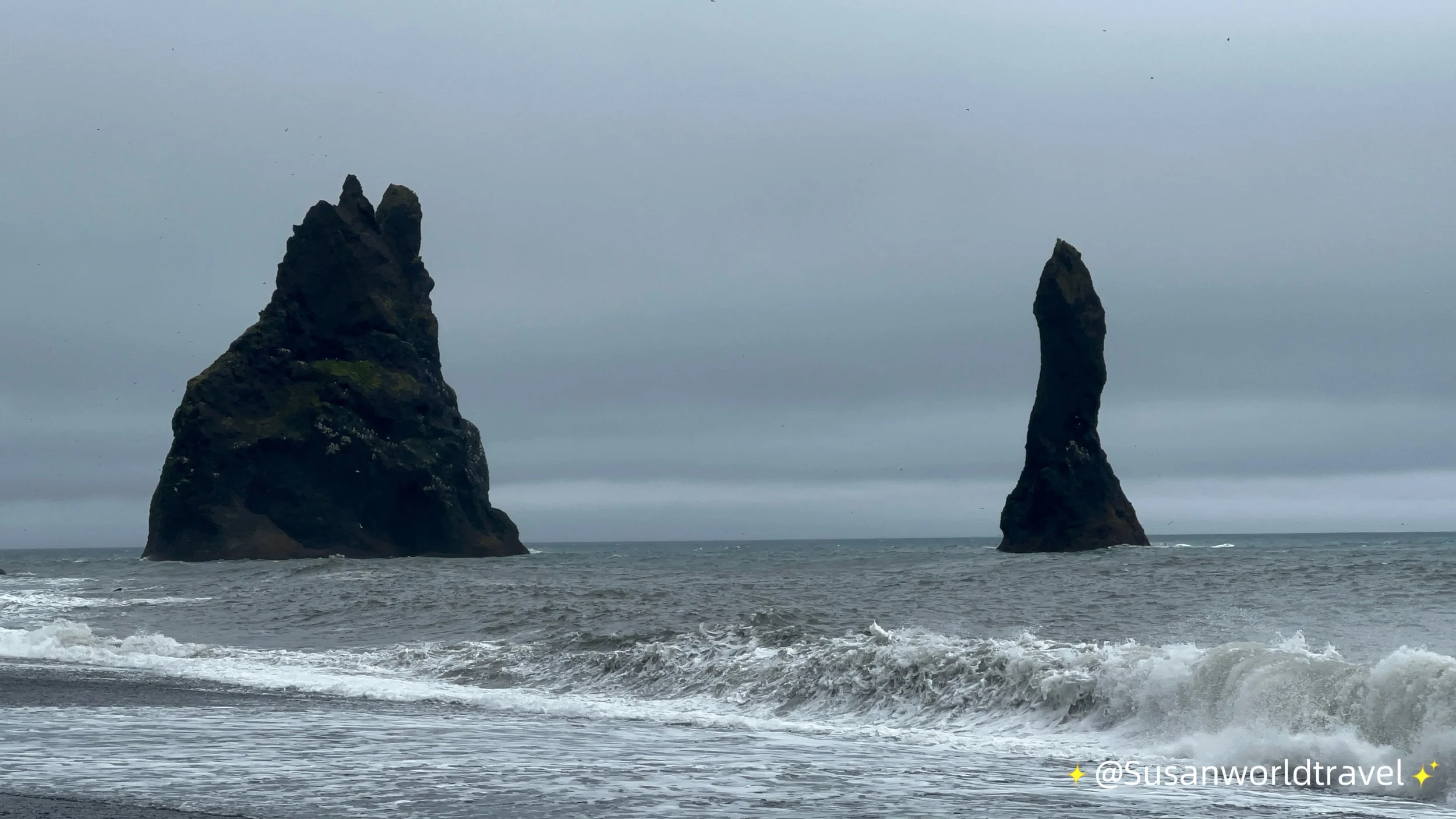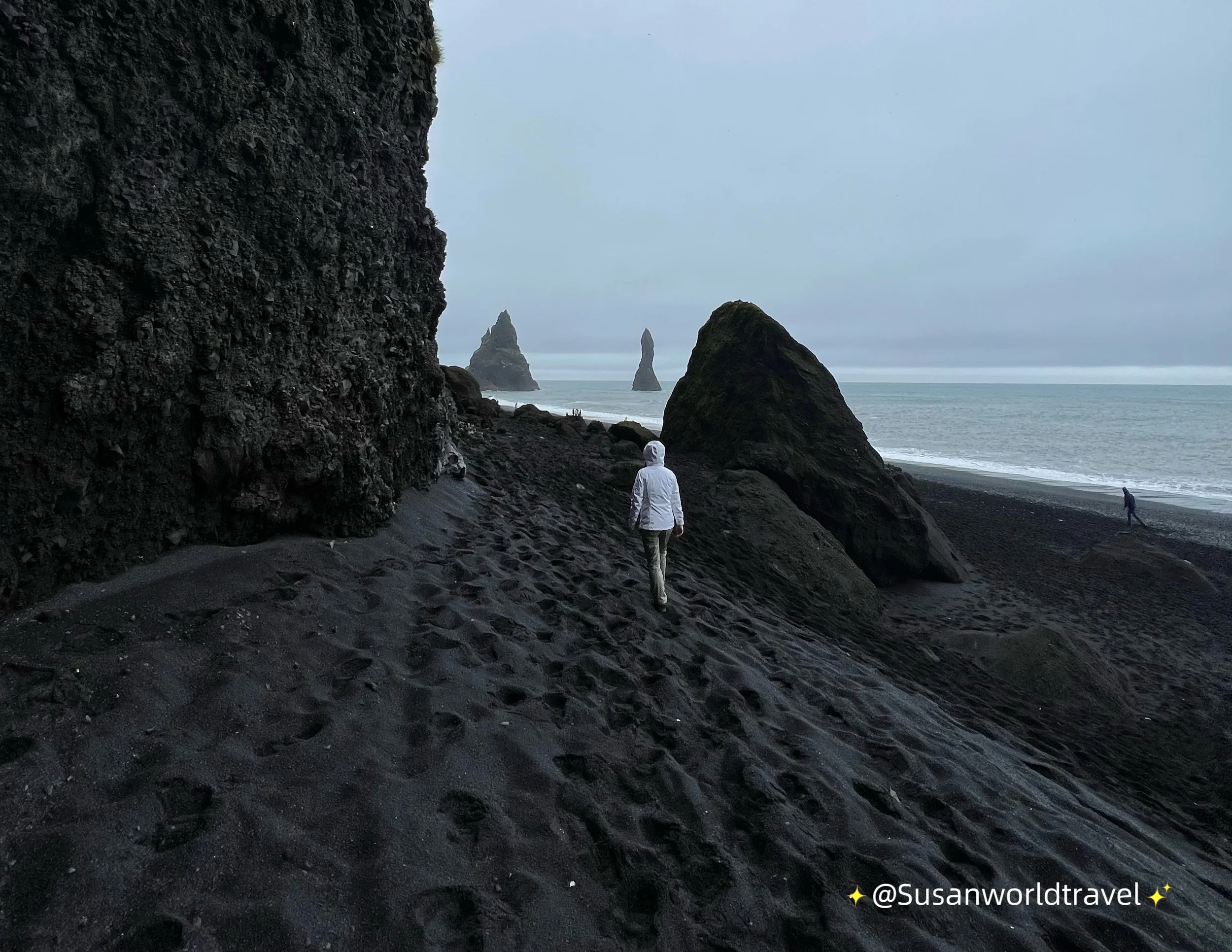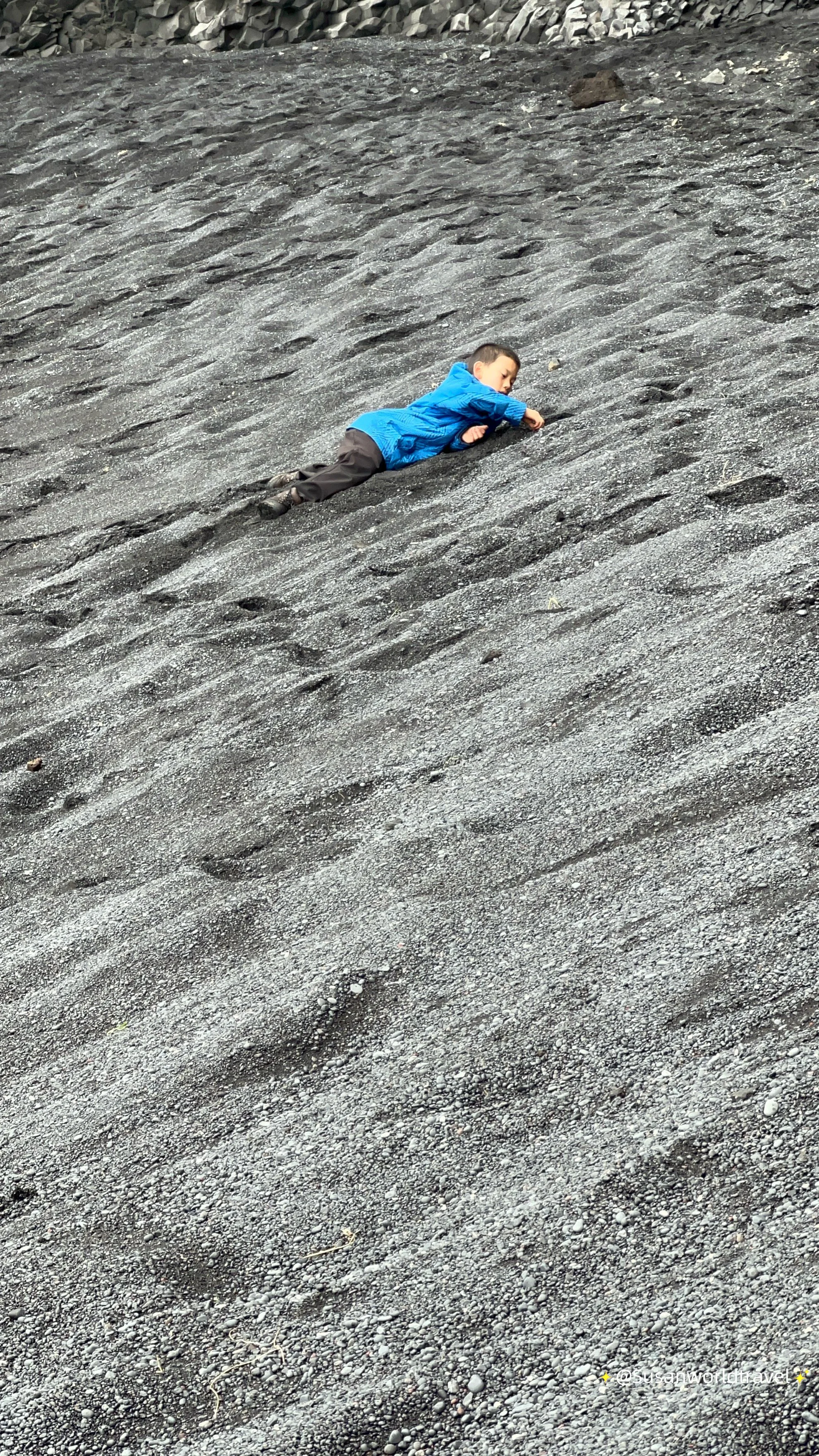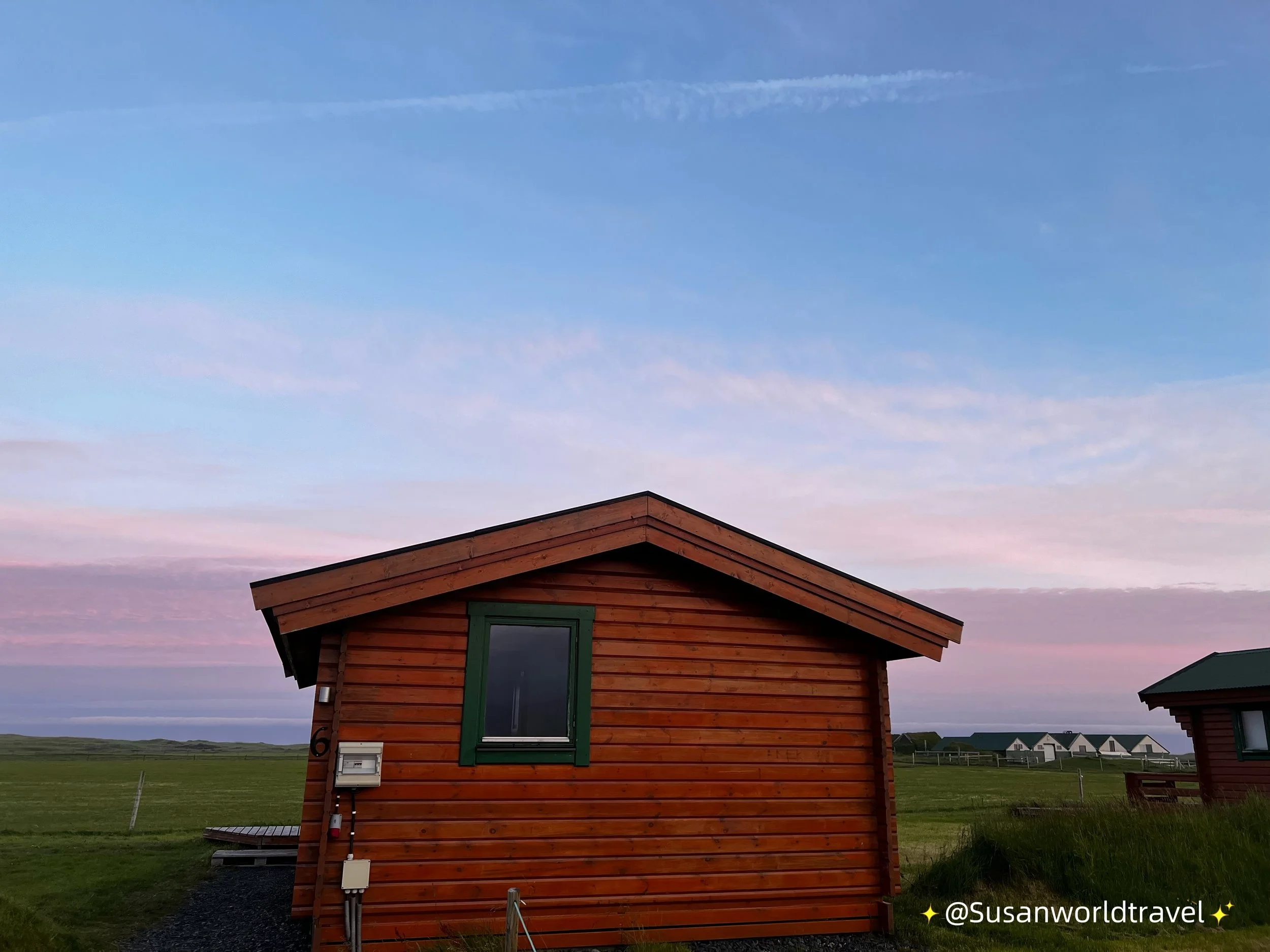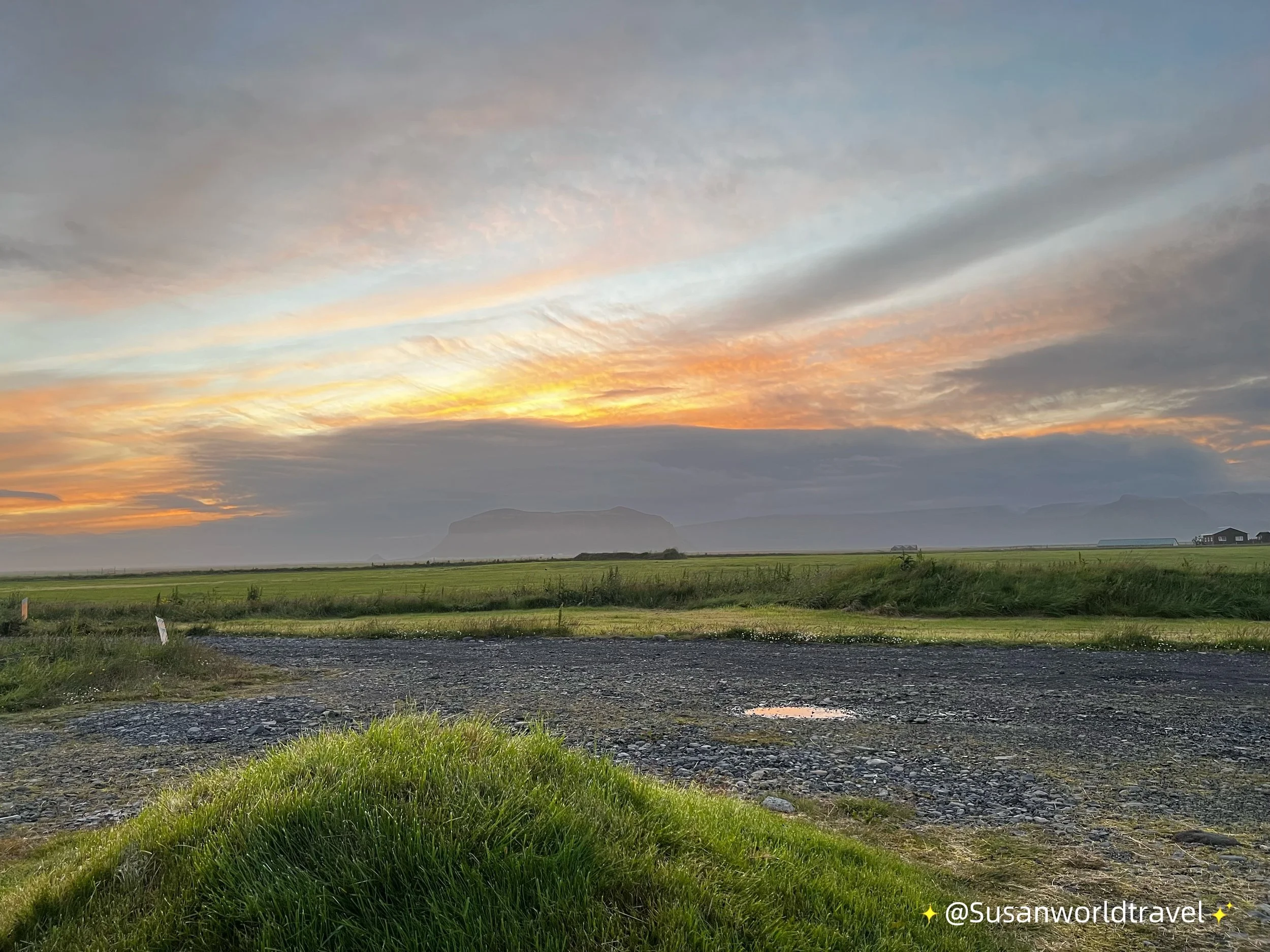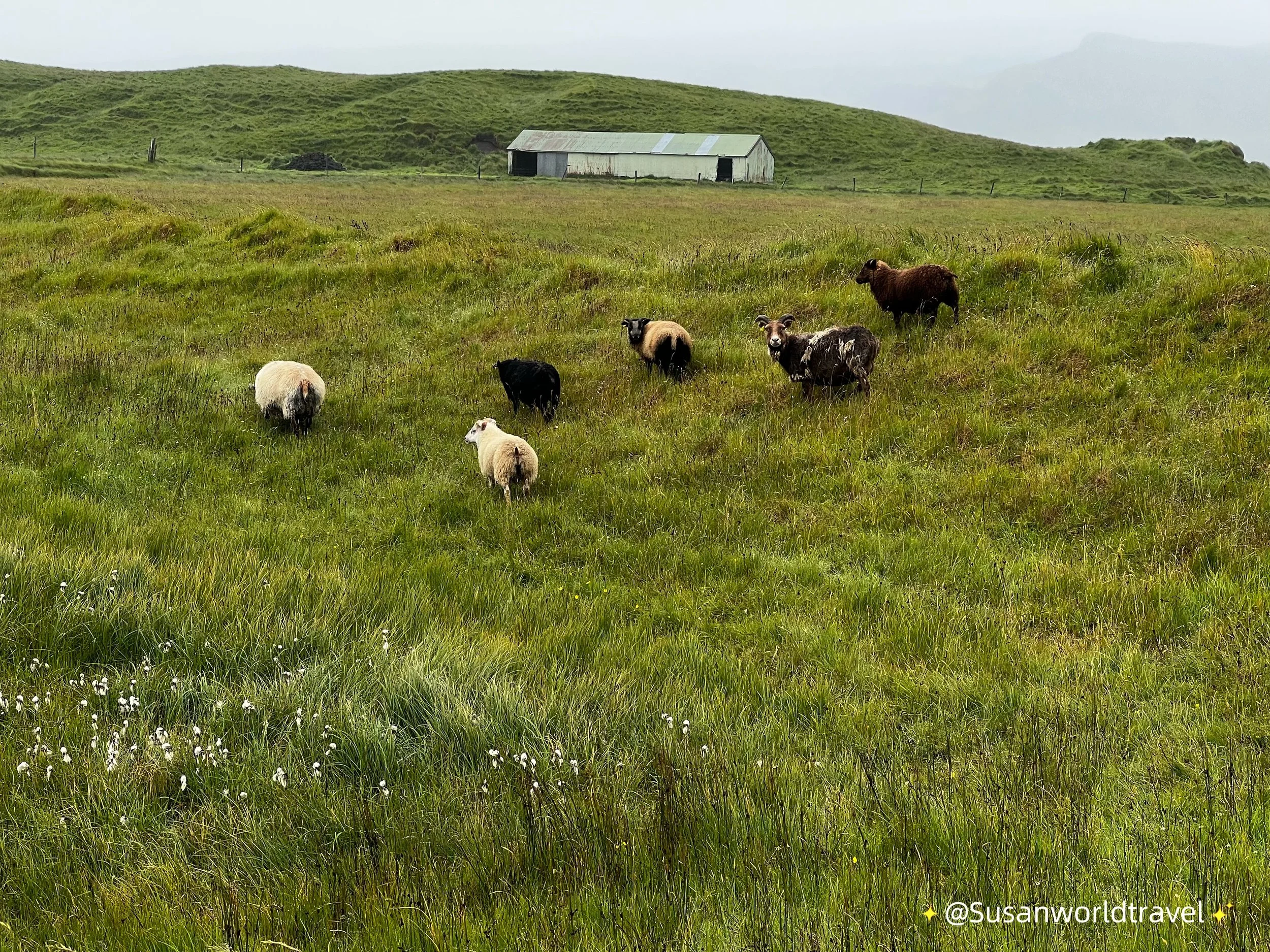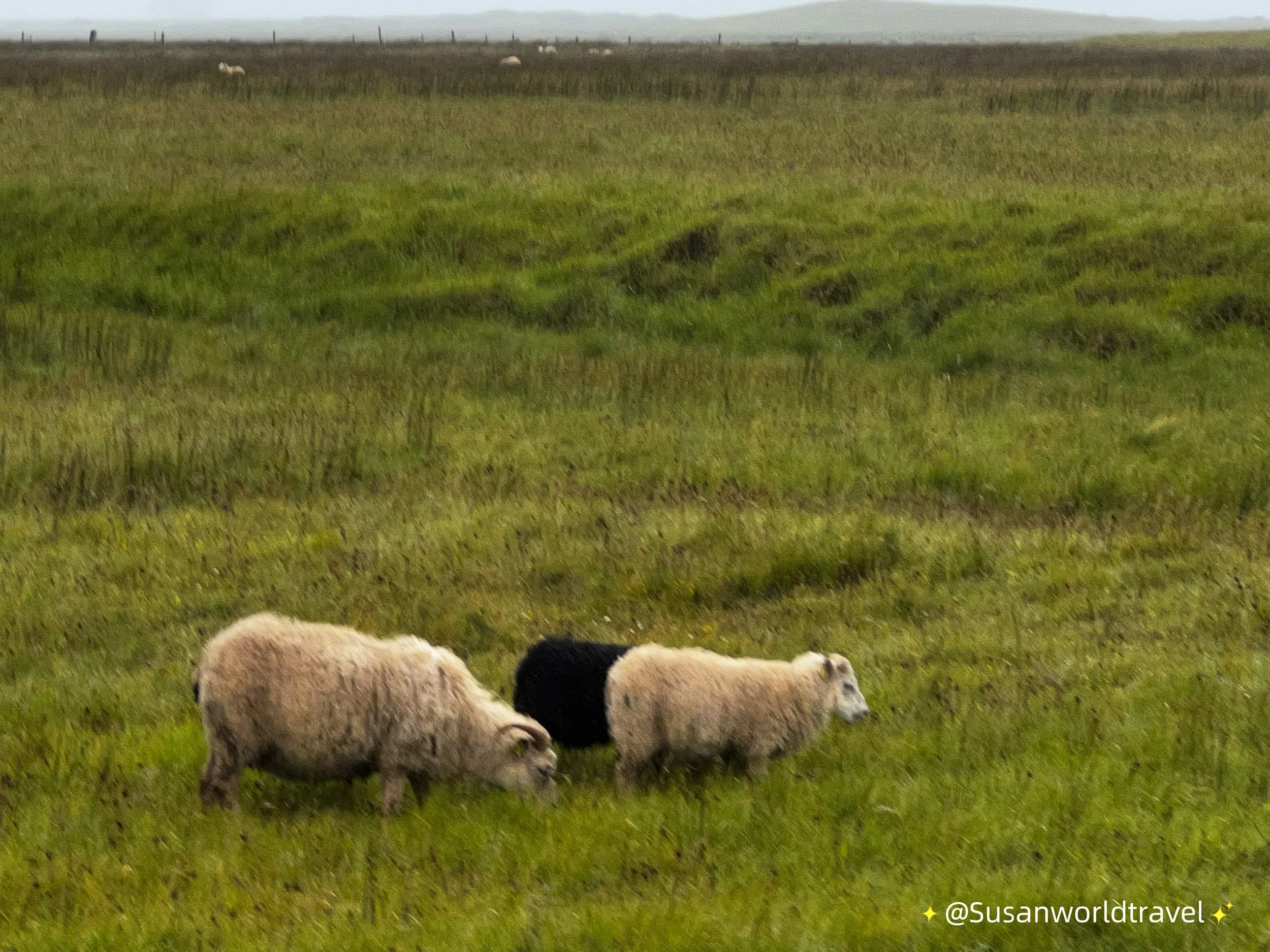Iceland Day 3
The first destination for day 3 was the Southern Highlands of Landmannalaugar, a journey of approximately two and a half hours along a desolate road that cuts through vast plateaus of barren and haunting landscapes. This route is only open from June to late September and requires four-wheel-drive car. The frigid winds and ascending mountain slopes with obscured views posed challenges, but It's fantastic to feel tranquil, magnificent, and experience the grandeur and purity of nature.
The highlands, formed around 1477 from a volcanic eruption, came into view as we neared our destination. The colorful rhyolite mountains, adorned with miniature glaciers, created a stunning landscape. The melted snowwater meandered in streams at our feet, resembling an accidental spill of a palette by the heavens onto the undulating mountain ranges, or perhaps a meticulously crafted oil painting.
Landmannalaugar, translated as "People's Pools," boasts rich geothermal energy. We parked our vehicle on the outer rim, traversing streams and hills to find ourselves surrounded by a breathtaking mountainous backdrop. From there, we could embark on a hike up the glacier mountains. Watching super jeeps and tour buses traverse the streams added to the surreal ambiance of the place.
Heading south from the highlands, the road is sparsely populated, with the Lupines in full bloom. Lupines were introduced in 1945 from Alaska, thrive in cold and barren conditions, serving to combat the harsh and desolate landscapes of the icy highlands. The small number of seeds brought back have now spread to cover the entire island. Throughout June and July, Iceland comes alive with the color of blooming lupines.
As we ventured into the enchanting South Coast of Iceland by car, we were immediately greeted by a mesmerizing spectacle: waterfalls cascading down from the mountainside right beside the road. This striking scenery stands in stark contrast to the waterfalls encountered in the Golden Circle. As we approached one unnamed waterfall along the Ring Road, a delightful scene unfolded before us. Playful lambs roamed freely, their carefree antics providing a charming spectacle. With the cascading waterfall as their backdrop, these friendly lambs curiously stared at us, creating a heartwarming and picturesque moment.
Walking along the edge of the parking lot and looking up at the Seljalandsfoss waterfall, there seems to be something moving at the top. Upon closer inspection, it turns out to be sheep! It appears that the waterfall is also called the "Sheep Waterfall" due to this phenomenon. Icelandic sheep have incredible mobility, navigating cliffs and steep slopes with calm and ease. They are undoubtedly some of the happiest sheep in the world.
Seljalandsfoss is a unique waterfall where visitors can walk behind the cascading water. The waterfall plunges down from a cliff approximately 61 meters high, creating a breathtaking scene against the endless green fields and yellow flowers. Without much hesitation, we followed a narrow path upwards, reaching the backside of the waterfall. Peering through the immense water curtain, we admired a completely different view, transforming the moment into a waterfall cave experience.
Just a few hundred meters north of the famous Seljalandsfoss lies another enchanting waterfall concealed behind a rocky crevice. This elusive cascade is often called the "secret waterfall" due to its hidden nature. Its proper name is Gljúfrabúi, loosely translated as "one who dwells in the canyon." As you approach the rock face and gaze beyond the stream, you'll catch your first glimpse of the mysterious waterfall concealed on the other side. To truly see its face, one must tread carefully over the stones in the water through a narrow passage in the cave, evoking a sense of adventure.
Seeing Gljúfrabúi from inside the cave is like discovering a hidden treasure trove in the heart of nature. As you step into the cool, dimly lit cave, you're immediately enveloped by the sound of rushing water echoing off the walls. Peering out from the cave's opening, you're treated to a mesmerizing sight: the waterfall tumbling down from above, framed by the rugged rock formations of the canyon.
Driving 16 minutes to the east, along the road, city restaurants contrast with mountain streams, adding to the charm of the south coast. Our dinner was at Boutique Hotel Anna restaurant, a high-end dining establishment that rivals Michelin-starred venues. The dishes were exquisite, crafted from fresh local ingredients, an absolute must-try. Icelandic famous dishes include lamb, fish, goose, duck, and reindeer meat, along with the rhubarb pie and skyr cake for dessert. We spent an hour indulging in these culinary delights. You can reserve the restaurant online.
After dinner, we continued east for 19 minutes until we reached Skógafoss. Skógafoss, a majestic waterfall standing 60 meters tall and 25 meters wide, is nestled within lush green vegetation, earning it the moniker "Forest Waterfall" or "Woodland Waterfall." The cascading water creates countless sprays, often forming rainbows when kissed by sunlight, hence its nickname "Rainbow Waterfall." You can climb steep stairs to the top of the waterfall and overlook the southern bank.
During summer evenings before 6pm, visitors can explore several small museums. The town also features hotels and restaurants, which are closed at 9pm. Instead of the restaurant we dined at, you may try dinner here to save time for more sightseeing.
Skógafoss is also one of the filming locations for "Game of Thrones." Just a double-layered waterfall effect was added.
Driving east for 27 minutes from Skogafoss, you can see rocks lining the side of the Ring Road. The road to the lighthouse was steep and only recommended for 4 by 4 vehicles. Dyrhólaey, formed from an underwater volcanic eruption 80,000 years ago, 120 meters high, perched on the edge of the North Atlantic coast. It translates to "the hill island with the door hole" in Icelandic. In the summer, you might spot adorable puffins nesting and breeding. Dyrhólaey is the only place on this trip where we could overlook the extensive coastline of the south's long black sand beaches from a high vantage point.
In about 20 minutes, we arrived at our final destination for the day: Reynisfjara Black Sand Beach. It is the most iconic beach in Iceland, famous for its basalt columns, beautiful black sand, powerful waves, and the nearby Reynisdrangar sea stacks.
The organ-shaped basalt rocks are the result of volcanic lava cooling and solidifying when it meets seawater, creating a spectacular and otherworldly sight. At first glance, one might mistake them for artificially carved and assembled structures, resembling a magnificent piece of contemporary art. The columnar joints described in the science fiction novel "Journey to the Center of the Earth" “as if they were artificially sculpted”.
The wind and waves are strong here, so it's essential to be especially cautious of the sea. The roaring sneaker waves of Reynisfjara are particularly dangerous, often pushing further up the beach than many would expect. Visitors are advised to never turn their back on the waves, and keep a safe distance of at least 30 meters
The rocky sea stacks sitting off the shoreline, known as Reynisdrangar appeared in Season 7 of the HBO Series Game of Thrones, you can spot them in a few scenes shot ‘North of the Wall’.
Greeted by Iceland's summer midnight sun casting a rosy glow across the sky and free-roaming Icelandic sheep, we reached Mid-Hvoll Cottages after 11pm. Each cottage was a small wooden house, compact yet fully equipped. Considering the relatively high cost of living in Vik, Hvoll Cottage was definitely a great value for money. The location marks the centerpiece of both our day 3 and day 4 itineraries, with a driving time of around 6 hours each day.
There was always a group of Icelandic sheep frolicking around, anywhere and at any time, along the south coast, unlike horses, which are usually fenced in. It’s said that one farmer can raise thousands of sheep. In fact, the number of Icelandic sheep exceeds the total population of Iceland by more than twice. We even encountered sheep sitting in the middle of the road. and thankfully, the sheep eventually yielded the right of way. It was quite an amusing sight.
Day 3 was one of our most intensive days. We explored the raw wilderness of the highlands, with their vast lava fields, steaming geothermal areas, and rugged mountain ranges. Descending to the south coast, we encountered the dramatic contrast of black sand beaches, towering sea cliffs, and powerful waterfalls. Our adventure spanned diverse landscapes, each offering its own unique beauty and sense of wonder, leaving an indelible impression on our hearts and minds.
